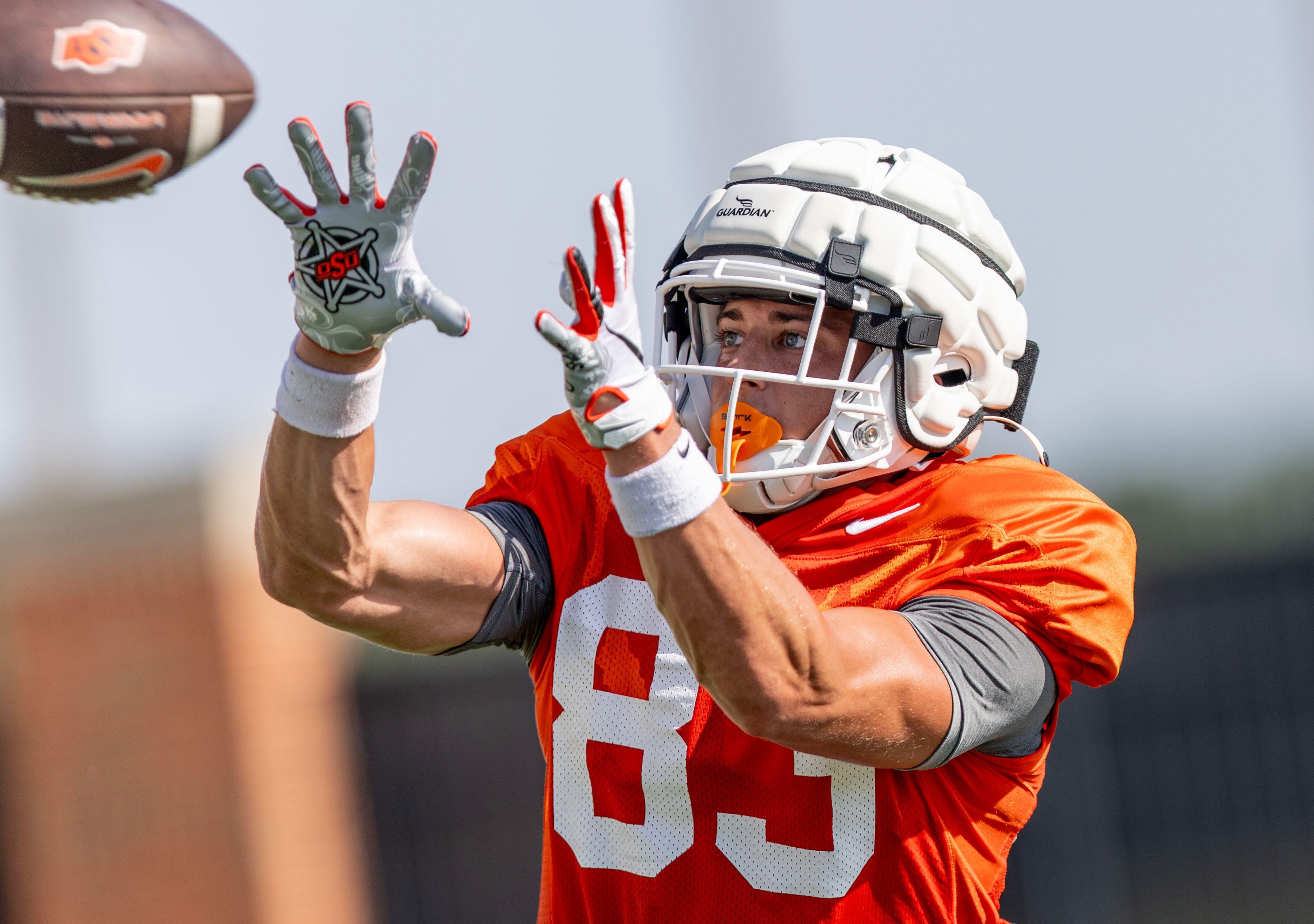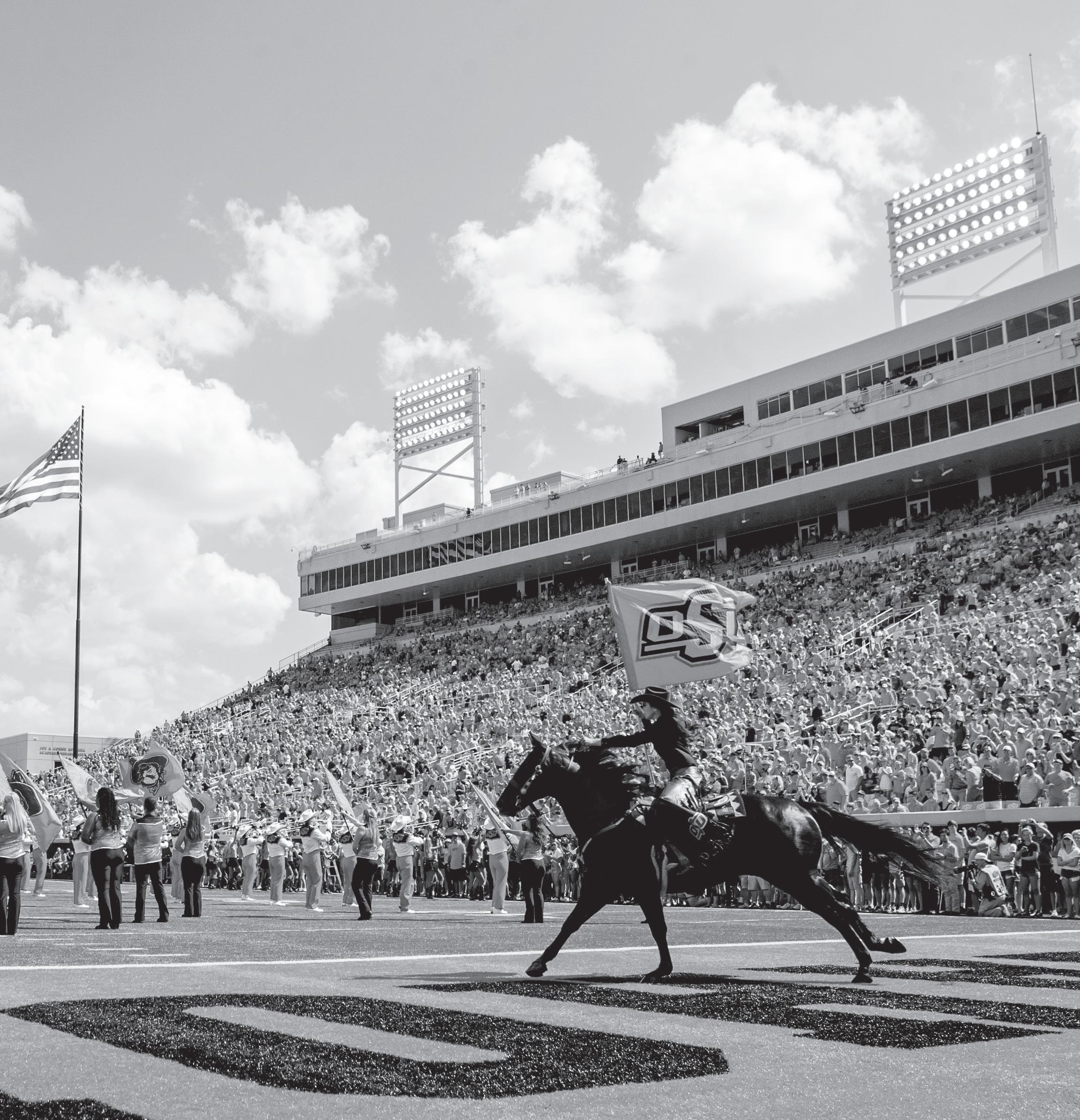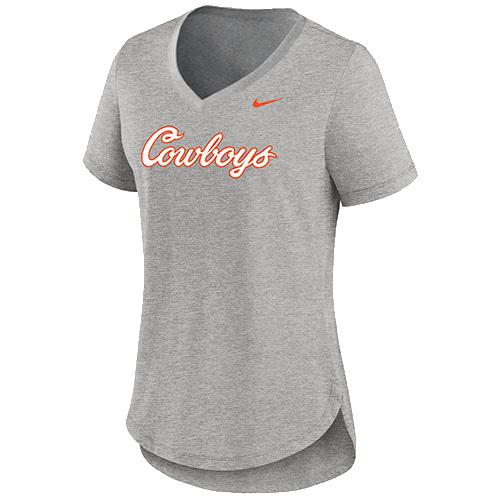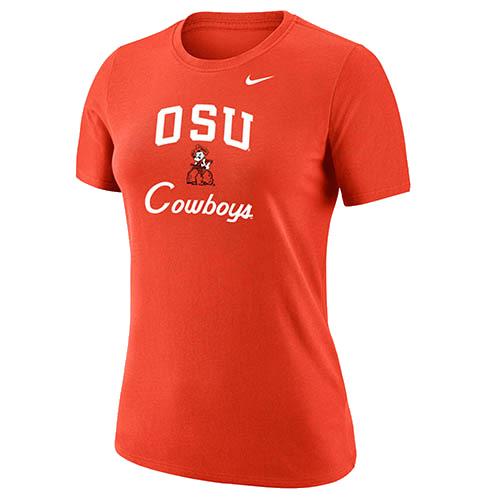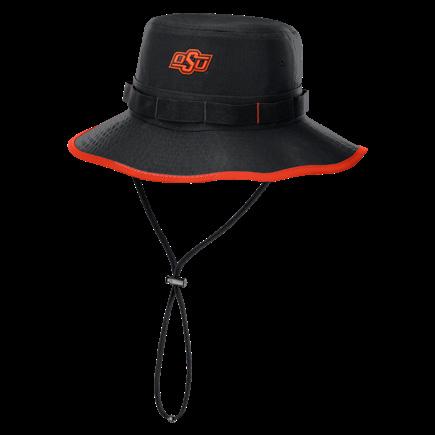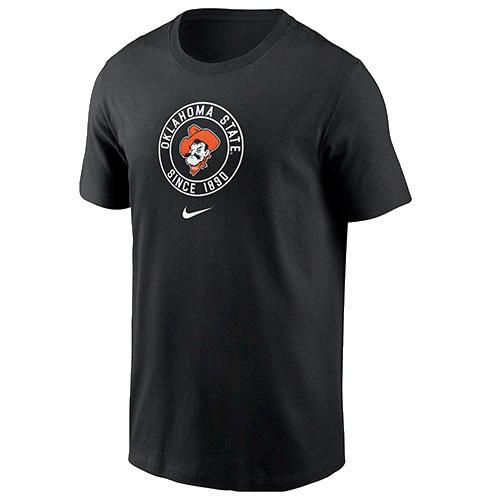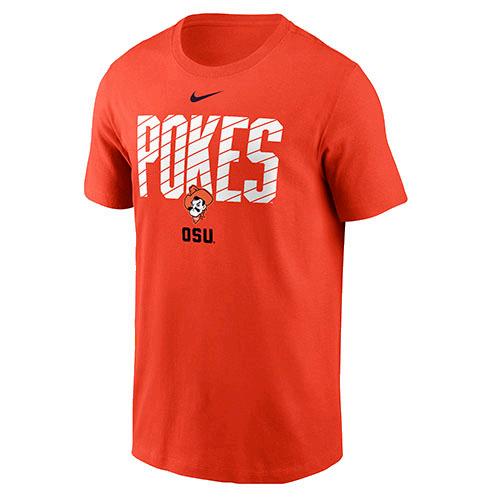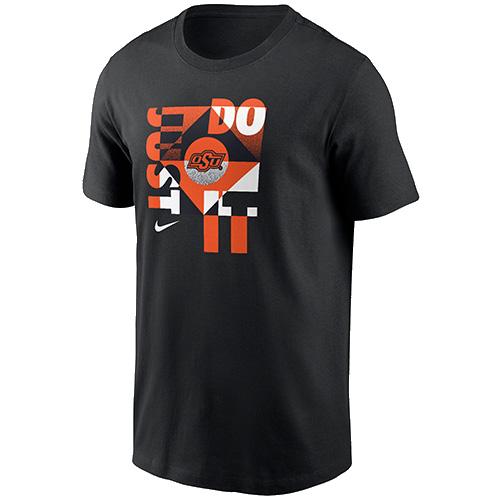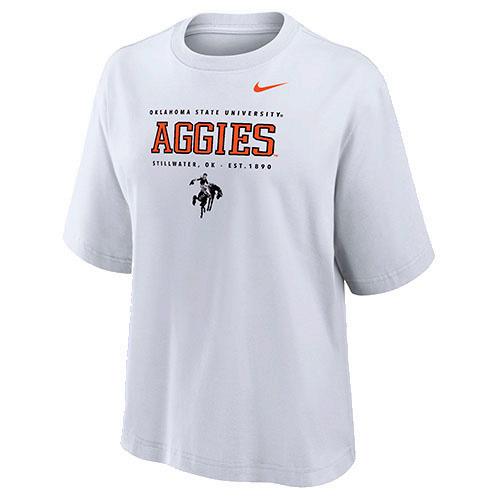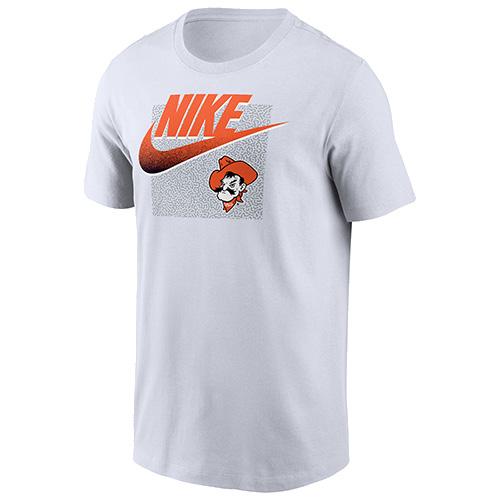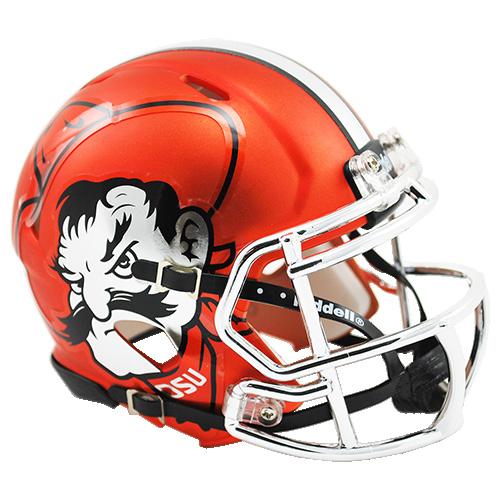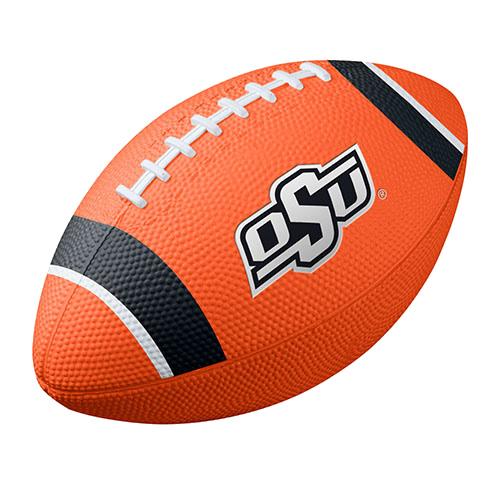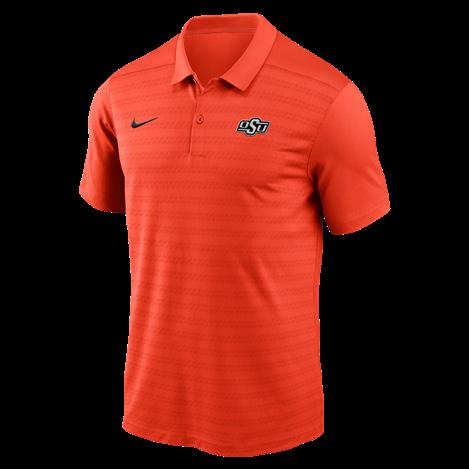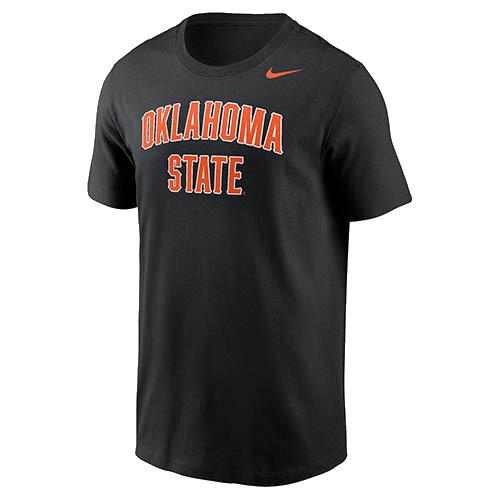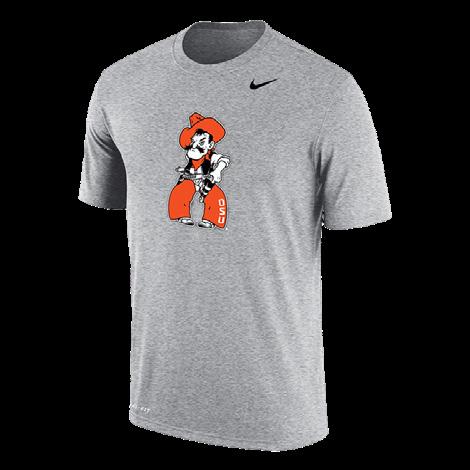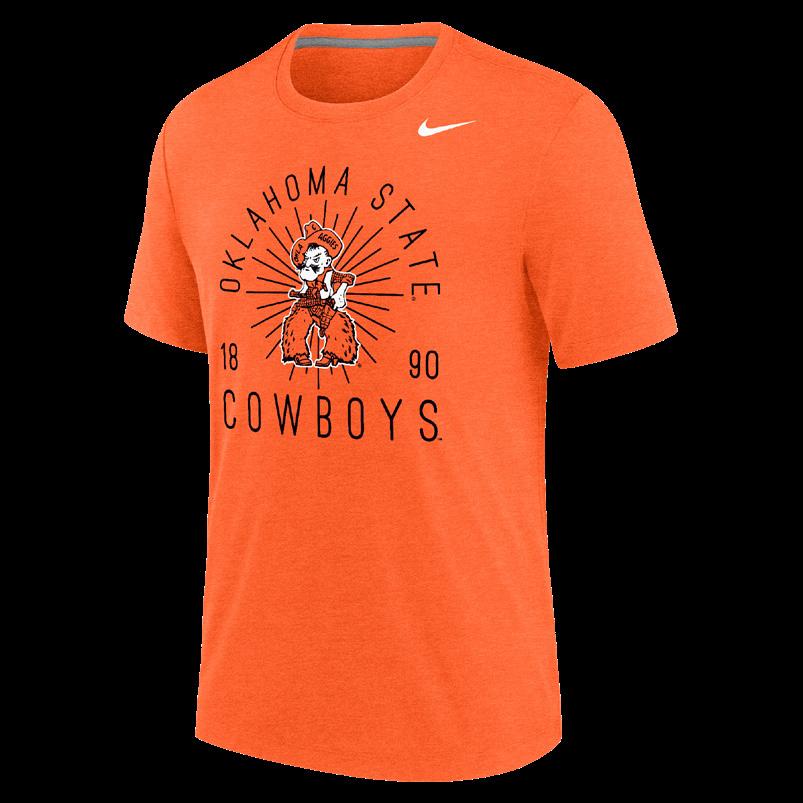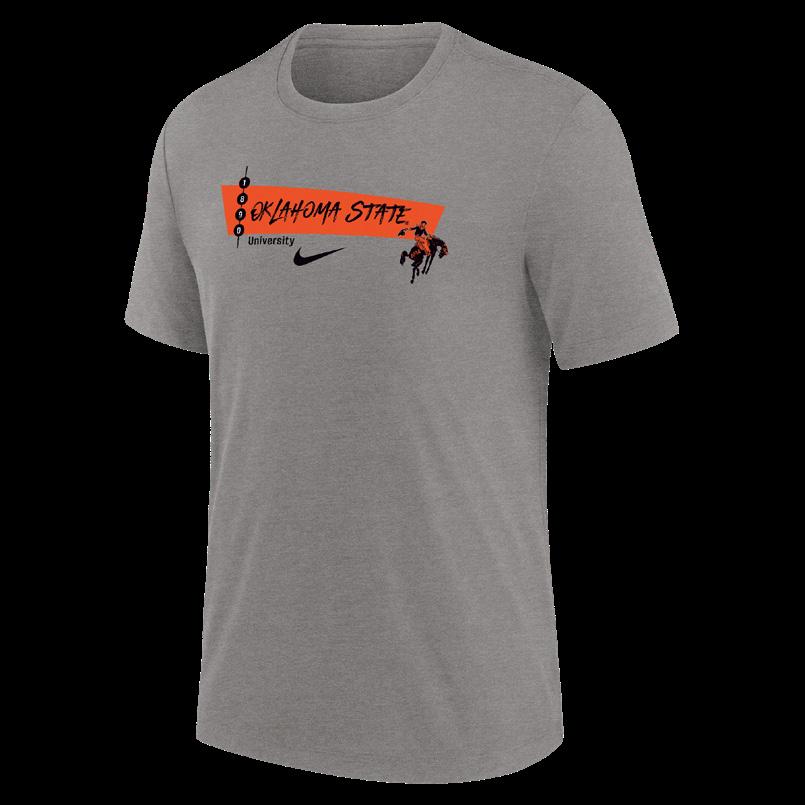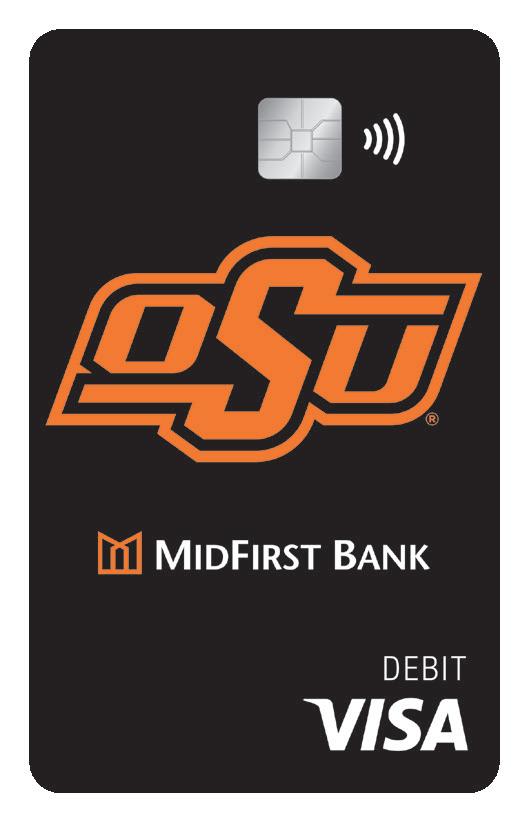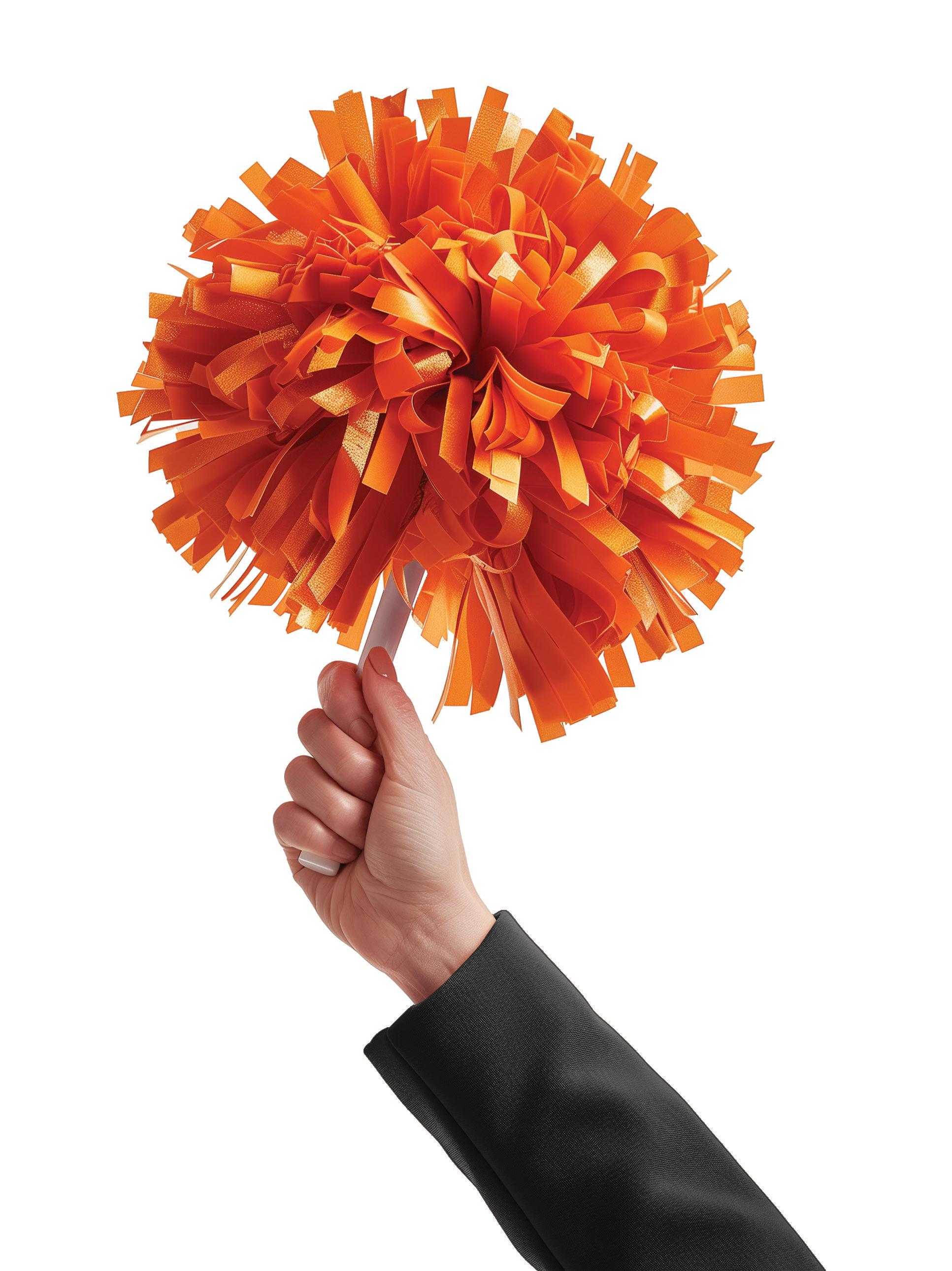

GO INSIDE OSU’S WRESTLING AND BASKETBALL COACHING SEARCHES












GO INSIDE OSU’S WRESTLING AND BASKETBALL COACHING SEARCHES









BY K E VI N K LI NT WO R TH
The beginning of a new school year is a time to look ahead with anticipation, but one event coming up this semester gives us the opportunity to also look back.
In December, former Cowboy receiver Justin Blackmon will be inducted into the National Football Foundation College Football Hall of Fame. The awards banquet is Dec. 10 in Las Vegas. Membership in the NFF Hall of Fame is the pinnacle for a college football player. And Blackmon’s swift entry into the exclusive club further illustrates just how much of a phenomenon the Plainview High School product was for Oklahoma State.
This year’s Hall of Fame class includes the likes of receivers Larry Fitzgerald and Randy Moss, quarterbacks Alex Smith and Tim Couch, running back Toby Gerhart and defensive linemen Julius Peppers and Dewey Selmon . Overall, the class, including coaches, is 21 strong.
And the youngest inductee is Justin Blackmon.
Already a member of the OSU Athletics Hall of Honor, Blackmon’s career included just two seasons as a starter, 2010 and 2011 (his sophomore and junior years of eligibility). But those two seasons were good enough to solidify him as college football royalty. In 26 games over those two campaigns, Blackmon caught 38 touchdown passes. He led the nation in that category as a sophomore and was second as a junior. He caught 233 passes during that time, and he averaged 148 receiving yards per game in 2010 and 117 per game in 2011. His 1,782 receiving yards in 2010 set an NCAA record for sophomores.
Blackmon’s statistical accomplishments are endless. But as much as the statistics tell the story, they also can’t tell the entire story. Blackmon’s biggest moments came in the biggest games, making his career truly one of the best in OSU history.
With just a couple of games as a starter under his belt in 2010, Blackmon and quarterback Brandon Weeden teamed up for a 45-yard touchdown midway through the fourth quarter for the game-deciding points in a tight home win over Troy.
At Texas Tech, the Cowboys were trying to end one of those “OSU hasn’t won there since” streaks when Blackmon got loose for a 62-yard touchdown to break the back of the Raiders while giving a hint of what was to come, including more wins in Lubbock.
In one of those “OSU should never beat this team” games, Blackmon’s 67-yard TD reception on a pass from Weeden gave OSU complete control at Texas and launched a new era of fun times for the Cowboys in Austin.
He was the MVP of the 2010 Valero Alamo Bowl against Arizona when he had nine catches for 117 yards with two scores to clinch the first 11-win season in Oklahoma State history.
The following year Blackmon was target No. 1 for opposing defenses. It was the right idea, but not one opponent was able to execute it. When the dust had settled, Blackmon had his second consecutive Biletniko Award as America’s best receiver. He was once again a unanimous All-America selection . And he was also a Big 12 champion as Blackmon, Weeden, running back Joseph Randle and an opportunistic defense led the Cowboys to the league title and a final ranking of No. 3 in the Associated Press and BCS polls, the highest in school history.
The first marquee game of that 2011 season saw Blackmon grab 11 passes for 121 yards and a touchdown in OSU’s monster road comeback at No. 8 Texas A&M. He even scored two points for the Aggies — on purpose.
In a terribly tense back-and-forth a air with Kansas State, Blackmon had a
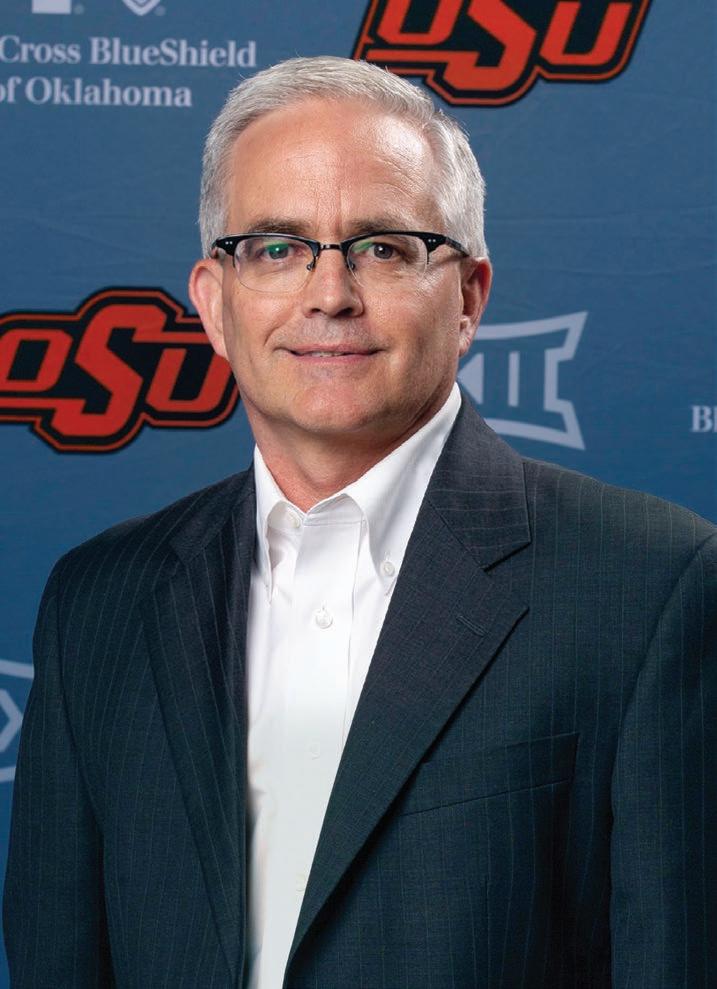
gigantic score on a 54-yard TD reception in the final five minutes of OSU’s 52-45 win over the Wildcats. It was the night that an earthquake famously rocked the stadium just minutes after the final whistle.
In the Fiesta Bowl victory over No. 4 Stanford, Blackmon was once again the game MVP. He didn’t get going in the desert until the Cowboys had spotted the Cardinal a 14-point lead. Consecutive scoring plays by Blackmon, covering 43 and 67 yards, signaled the arrival of OSU and the beginning of the end for the Cardinal.
On Oklahoma State’s final scoring drive of regulation, Weeden hit Blackmon for 21 yards and a first down on a fourth-andmust-have-or-game-over conversion.
The final statistics in OSU’s 41-38 overtime victory saw Blackmon with nine catches for 186 yards and a Fiesta Bowl record three touchdowns as an exclamation point on the first 12-win season in school history.
Blackmon is the eighth OSU player inducted in the College Football Hall of Fame. He joins coaches Lynn “Pappy” Waldorf and Jimmy Johnson, and former student-athletes Bob Fenimore, Terry Miller, Leslie O’Neal, Barry Sanders and Thurman Thomas. Each man not only earned individual accolades, but they helped lead their teams to historic accomplishments.
Waldorf coached the A&M Aggies to a 34-10-7 record. He was 3-0-2 in Bedlam and is the last coach to lead the University of California to a Rose Bowl.
Jimmy Johnson’s rebuild of the program would have included three bowl games in five years if not for lingering NCAA sanctions he inherited in year one. Not only did he flip the script in Stillwater,
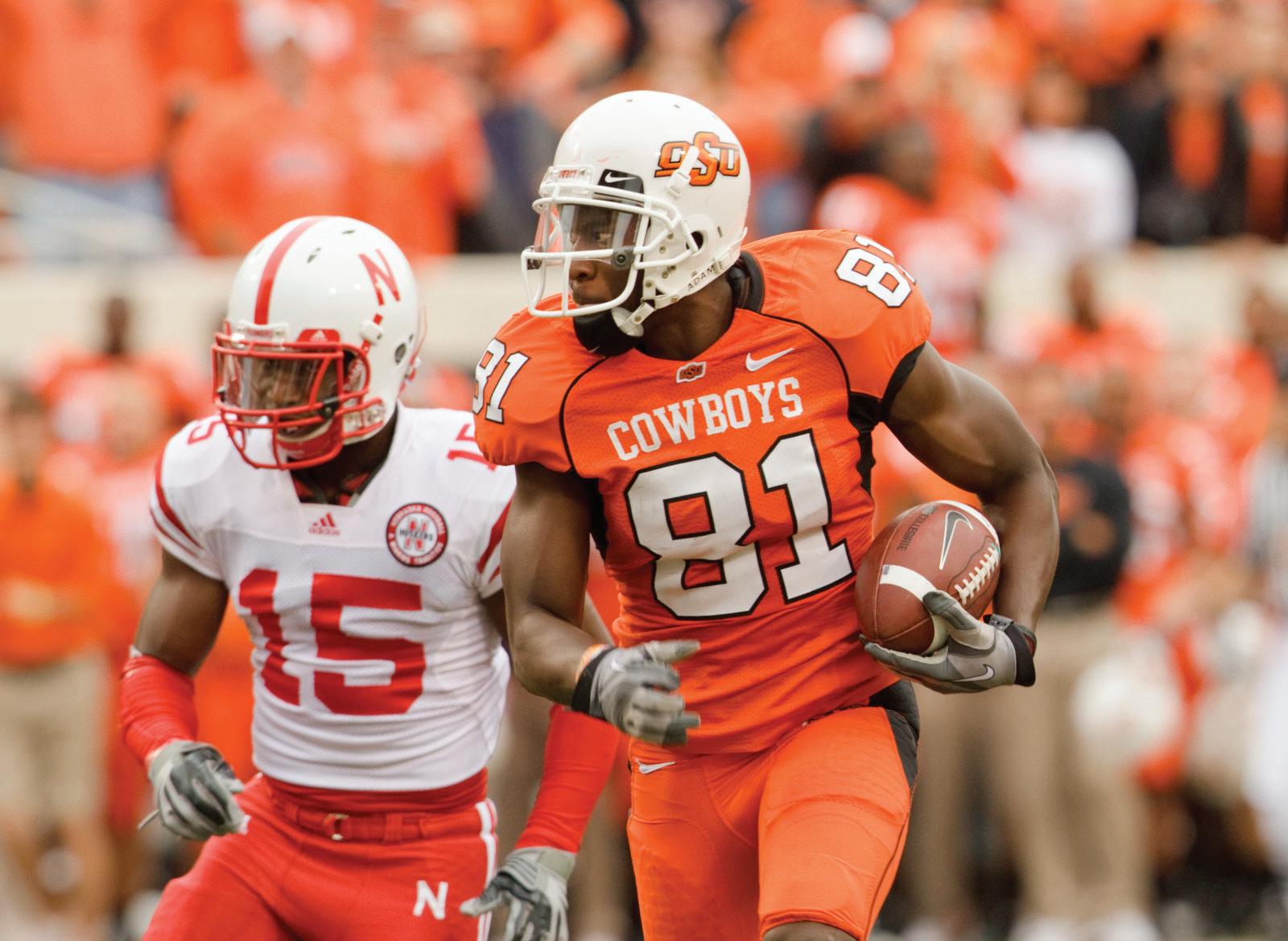
column.
Heisman Trophy runner-up Terry Miller helped lead the Cowboys to the 1976 Big Eight title. He and his teammates lifted OSU Football to its highwater mark between the Fenimore era and Pat Jones’ string of 10-win teams in the 1980s.
Thurman Thomas played on the first two of Jones’ 10-win teams. At Tailback U., his 5,001-career rushing yards still top the charts.
Barry Sanders remains as OSU’s only Heisman Trophy winner after his historic 1988 season. He also played on a pair of 10-win teams. Sanders and Thomas are also members of the Pro Football Hall of Fame for the rare Hall of Fame double.
Leslie O’Neal, who will join OSU’s Ring of Honor in 2024, anchored perhaps the best defenses in school history, allowing just 34 touchdowns over two seasons. He still holds the OSU record for career quarterback sacks with 34, a full 40 seasons after his last game as a Poke.
Justin Blackmon is up next in the college hall, but he won’t be the last . At some point in the not-too-distant future, the group of eight Cowboys immortalized by the National Football Foundation will be joined by another OSU alum who made program-defining moments and impacted the direction and success of Cowboy Football. Someone who defined their era. Somone who became a household name in college football circles.
Someone like Justin Blackmon.
RYAN SCHOPPE BECOMES A LEADER FOR COWBOY CROSS COUNTRY AND TRACK
CHAD WEIBERG’S TWIN COACHING SEARCHES LEAD TO STEVE LUTZ AND DAVID TAYLOR
LILY CORBIN SPLITS HER DUTIES BETWEEN EQUESTRIAN AND ROTC 30
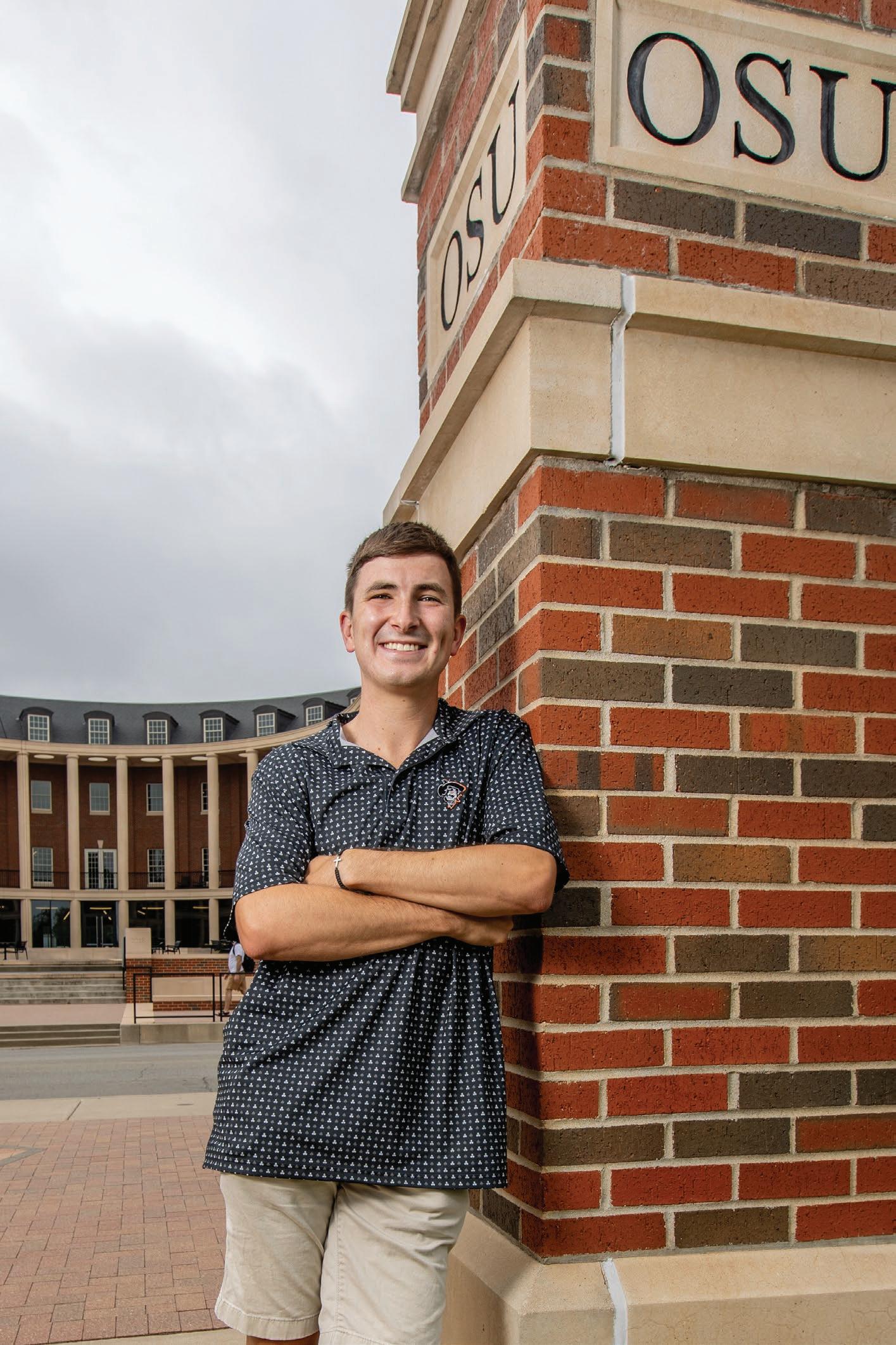
HOW MAKING THE RIGHT CHOICE LED STEVE LUTZ TO STILLWATER 40
CALVIN AND LINDA ANTHONY’S PRESCRIPTION FOR A WONDERFUL LIFE 50

THE “MAGIC MAN” DAVID TAYLOR TAKES OVER COWBOY WRESTLING

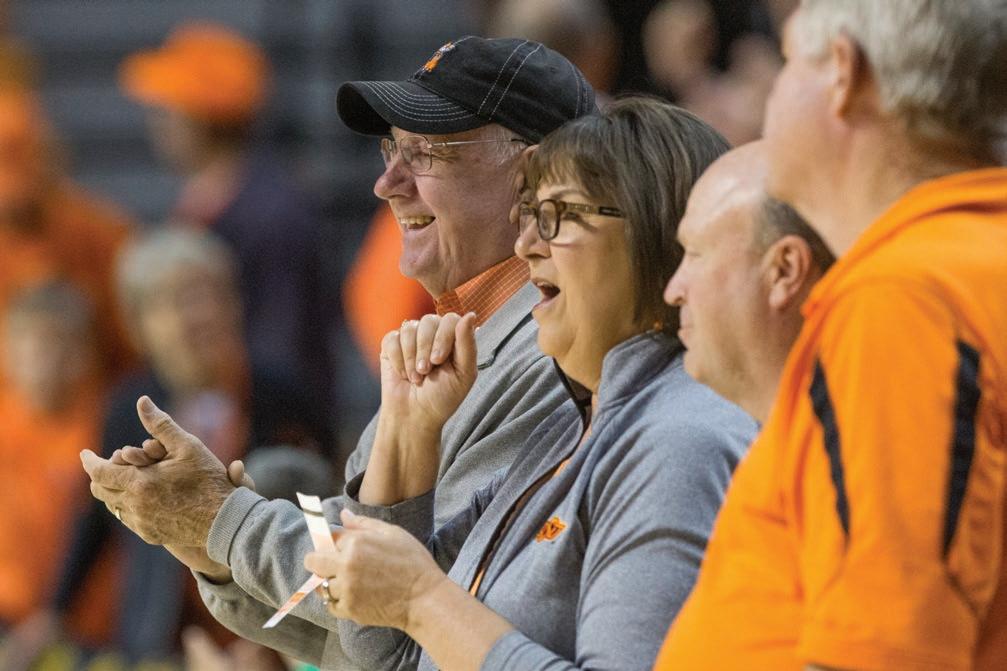
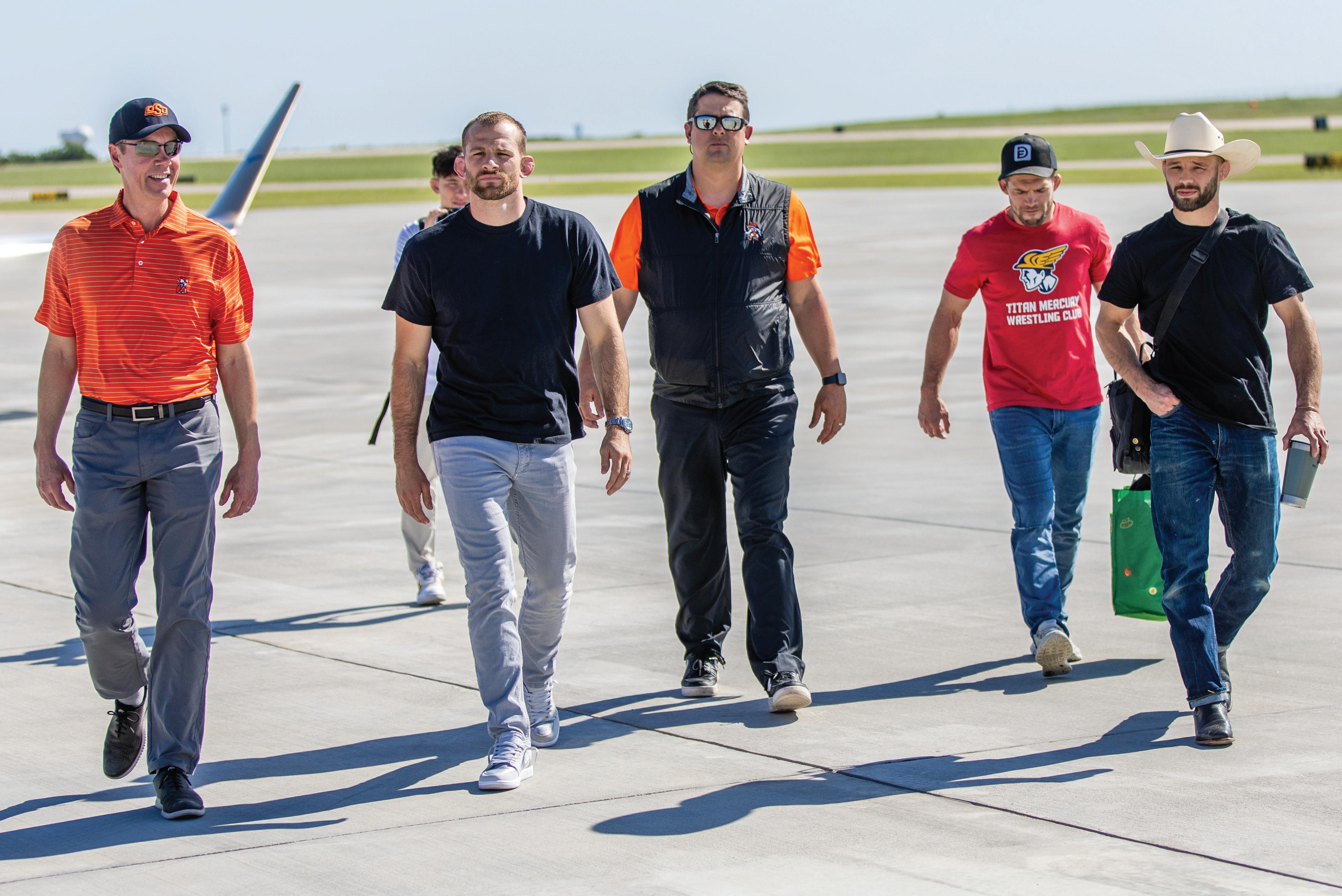
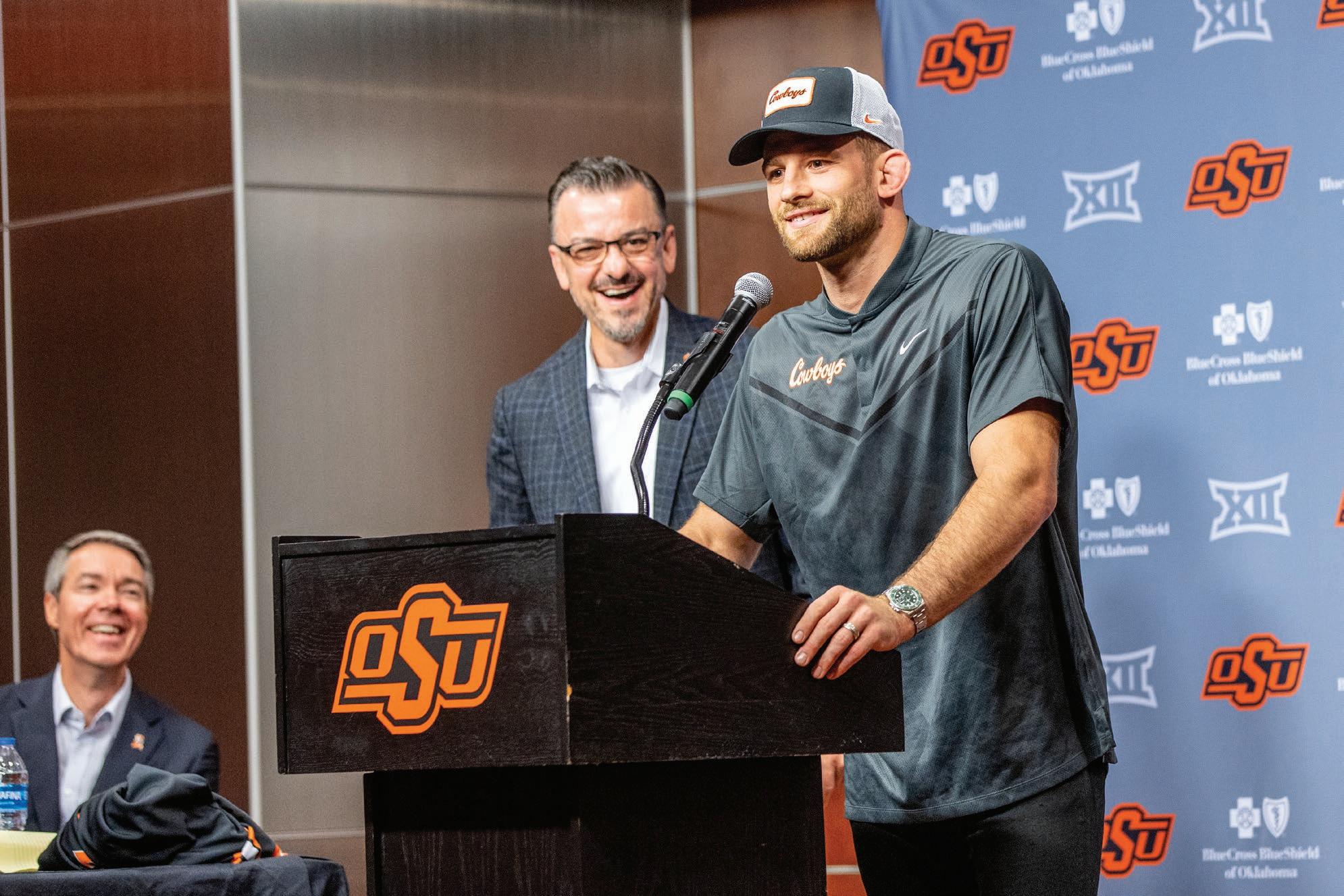
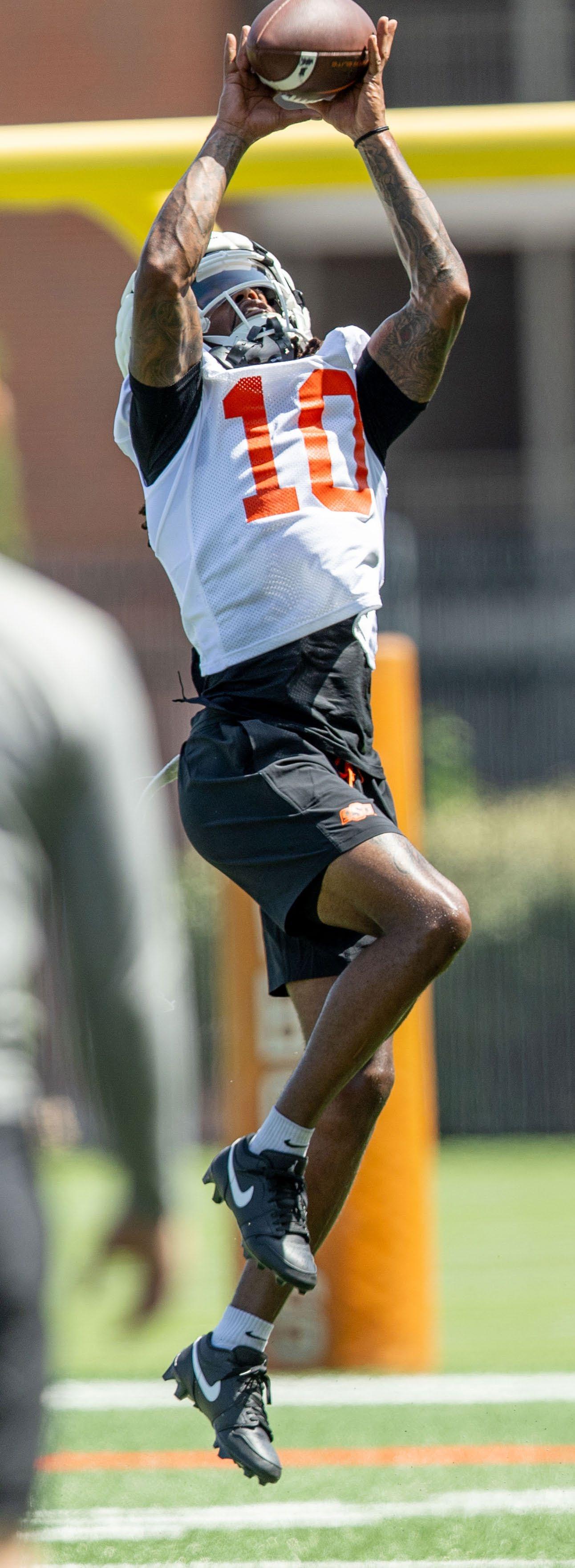
POSSE Magazine Sta
EDITOR-IN-CHIEF / SENIOR ASSOCIATE ATHLETIC DIRECTOR KEVIN KLINTWORTH
SENIOR ASSOCIATE ATHLETIC DIRECTOR JESSE MARTIN
ART DIRECTOR / DESIGNER JORDAN SMITH
PHOTOGRAPHER / PRODUCTION ASSISTANT BRUCE WATERFIELD
ASSISTANT EDITOR CLAY BILLMAN
CONTRIBUTING PHOTOGRAPHERS CLAY BILLMAN, LANDRY BLEDSOE, LEAH BWOLF, JAIDEN DAUGHTY, MASON HARBOUR, JEROD HILL, GARY LAWSON, DANNY PHILLIPS, TONY ROTUNDO, PHIL SHOCKLEY, ADDISON SKAGGS
CONTRIBUTING WRITERS CLAY BILLMAN, JENNI CARLSON, HALLIE HART, KEVIN KLINTWORTH
ASSOCIATE AD / ANNUAL GIVING ELLEN AYRES
PUBLICATIONS COORDINATOR CLAY BILLMAN
ASSOCIATE AD / DEVELOPMENT BRAKSTON BROCK
ASSISTANT DIRECTOR OF ANNUAL GIVING STETSON DEHAAS
ASSOCIATE AD / DEVELOPMENT MATT GRANTHAM
ASSOCIATE AD / DEVELOPMENT DANIEL HEFLIN
SENIOR ASSOCIATE AD / EXTERNAL AFFAIRS JESSE MARTIN
SENIOR ASSOCIATE AD / DEVELOPMENT LARRY REECE
ASSOCIATE AD / DEVELOPMENT SHAWN TAYLOR
ASSISTANT DIRECTOR OF ANNUAL GIVING ADDISON UFKES
ATHLETICS PROJECT MANAGER JEANA WALLER
102 ATHLETICS CENTER STILLWATER, OK 74078-5070
405.744.7301 P 405.744.9084 F OKSTATE.COM/POSSE POSSE@OKSTATE.EDU
ADVERTISING 405.744.7301
EDITORIAL 405.744.1706
At Oklahoma State University, compliance with NCAA, Big 12 and institutional rules is of the utmost importance. As a supporter of OSU, please remember that maintaining the integrity of the University and the Athletic Department is your fi rst responsibility. As a donor, and therefore booster of OSU, NCAA rules apply to you. If you have any questions, feel free to call the OSU O ce of Athletic Compliance at 405-744-7862 Additional information can also be found by clicking on the Compliance tab of the Athletic Department web-site at okstate.com
Remember to always “Ask Before You Act.”
Respectfully,
BEN DYSON
SENIOR ASSOCIATE ATHLETIC DIRECTOR FOR COMPLIANCE
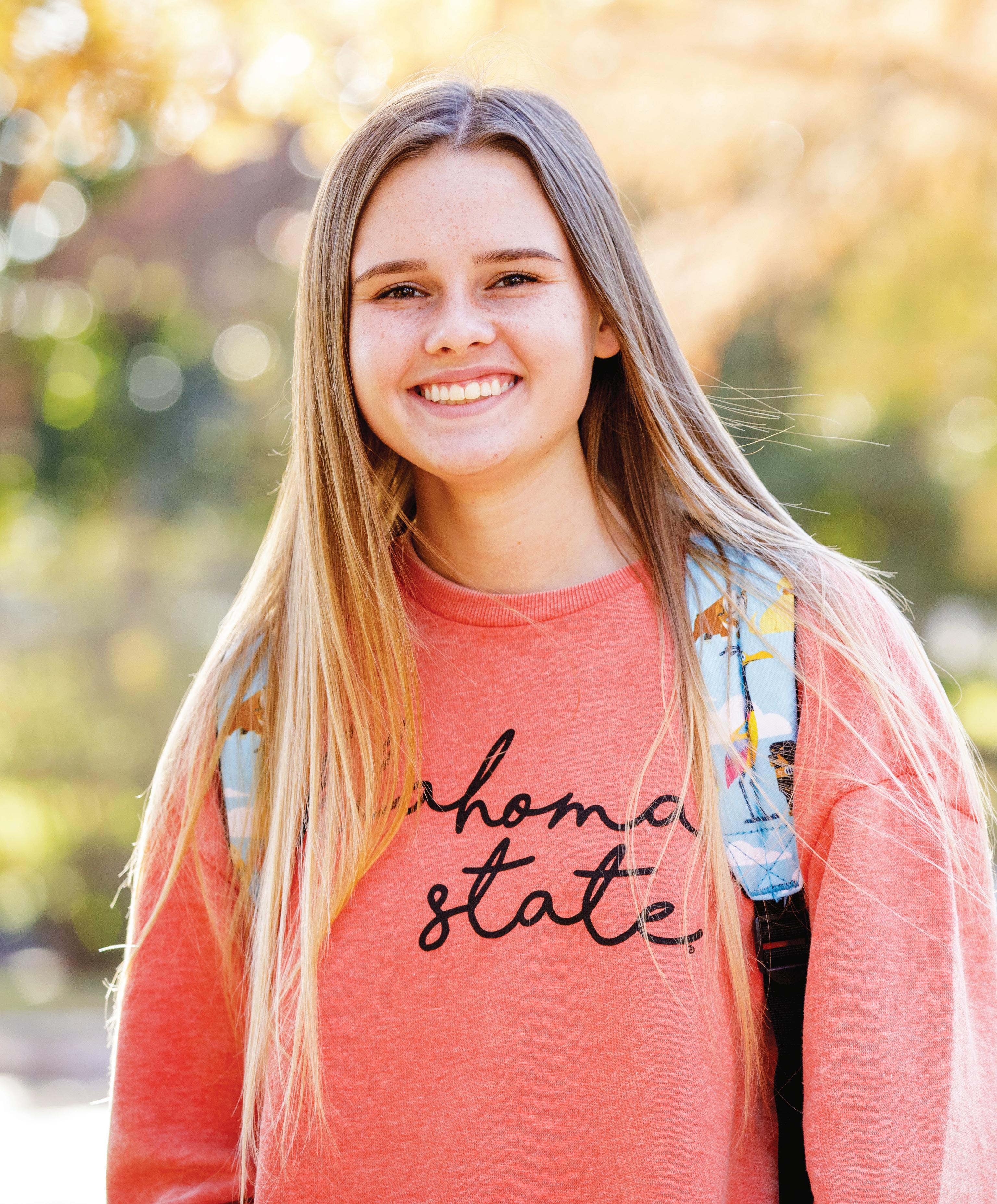
Football fans will notice some significant upgrades to gameday comfort and convenience at Boone Pickens Stadium this fall. Focusing on the south side seating areas, the final phase of a multi-year, $55 million upgrade includes AirFlow mesh chairbacks in midfield sections. These state-of-the-art seats are designed to stay cooler in the Oklahoma sun and dry quickly after rains. The remaining south stands feature comfortable, contoured bleachers to match the west endzone and north stands (completed prior to the 2023 season). Additional aisles with handrails have been added for easier ingress and egress. New wheelchair and companion seating areas are also included. Underneath the stands, bright LED lights, video screens and two grab-and-go concession areas will liven up the plaza level.
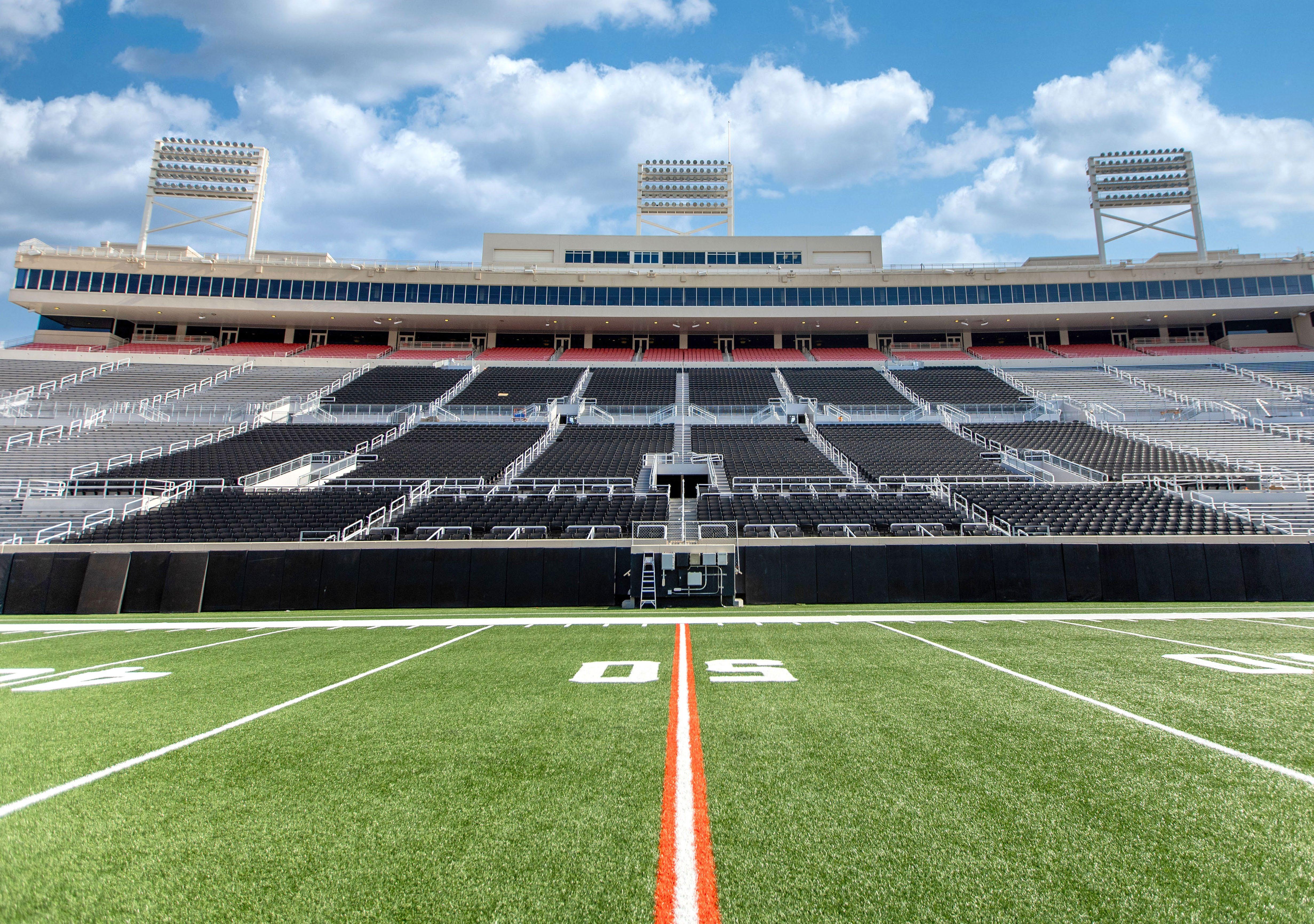




New defensive line coach Paul Randolph instructs freshman defensive end Armstrong Nnodim (94) and his teammates during drills in fall camp. With 26 years of collegiate experience under his belt, the veteran coach arrived in Stillwater in January after most recently serving as Indiana's d-line mentor. Despite losing several key contributors to graduation, the position group has reloaded with a combination of experienced returning players and talented newcomers.
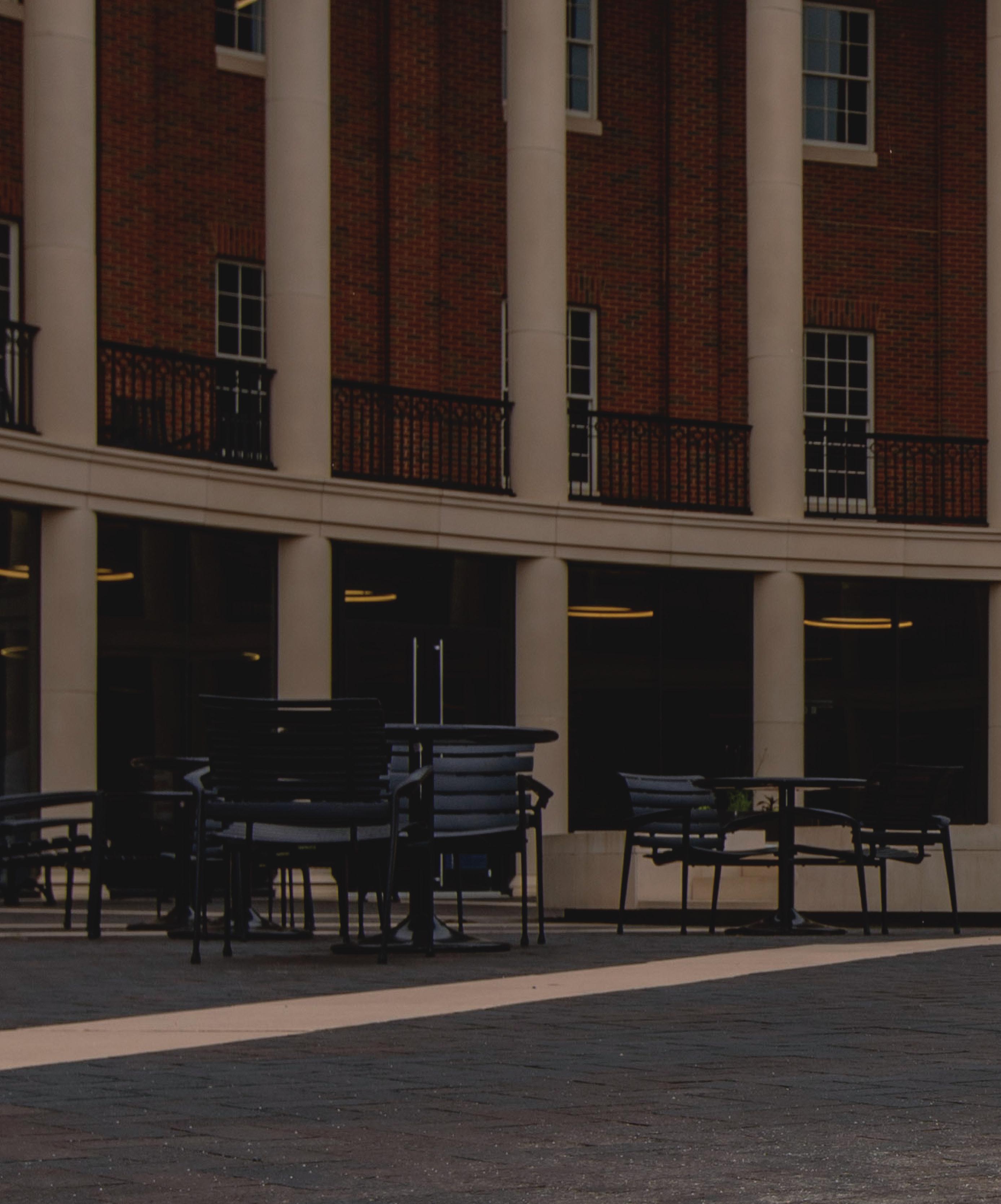
RYAN SCHOPPE GROWS INTO “ROCK SOLID” LEADER FOR COWBOYS
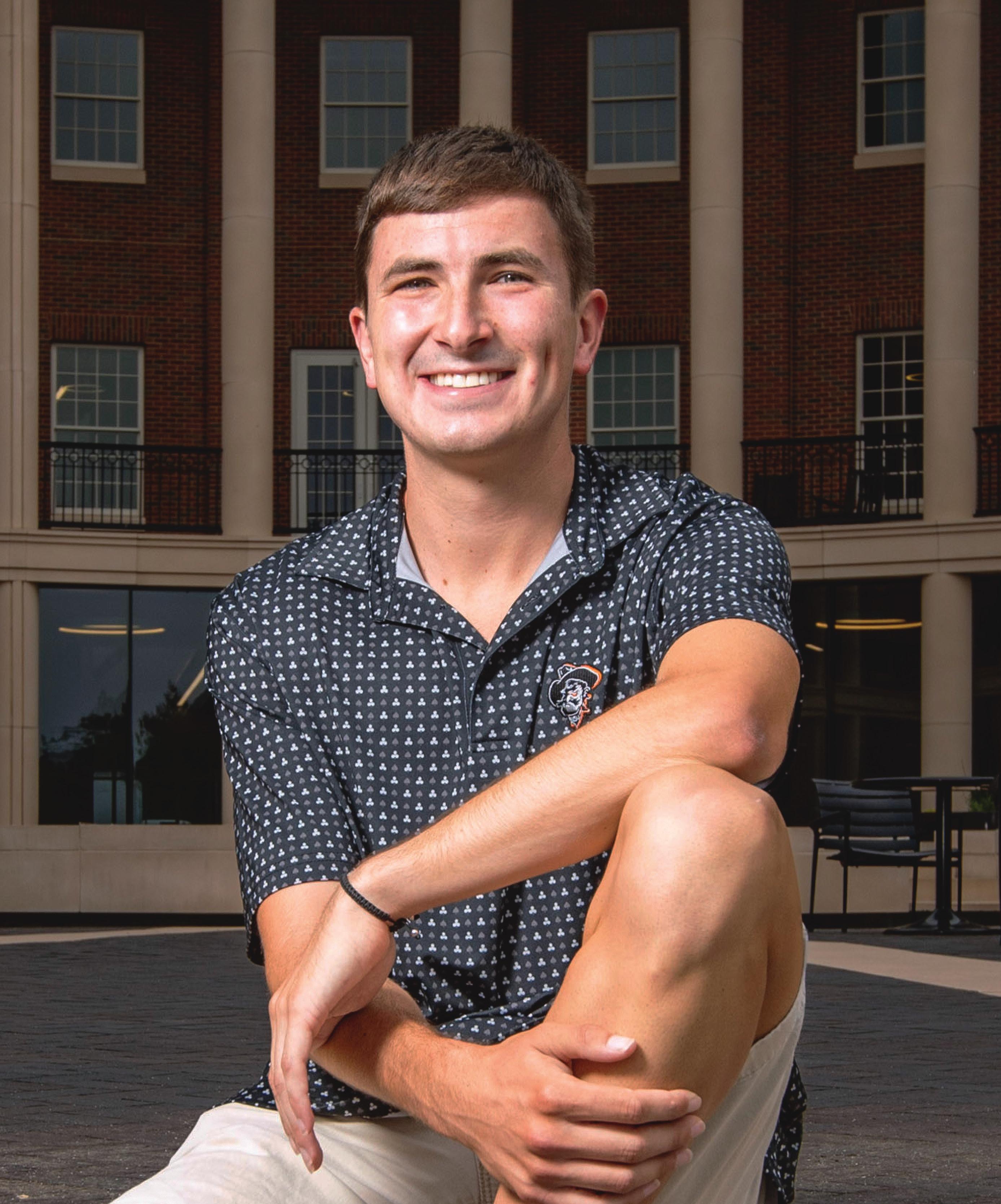
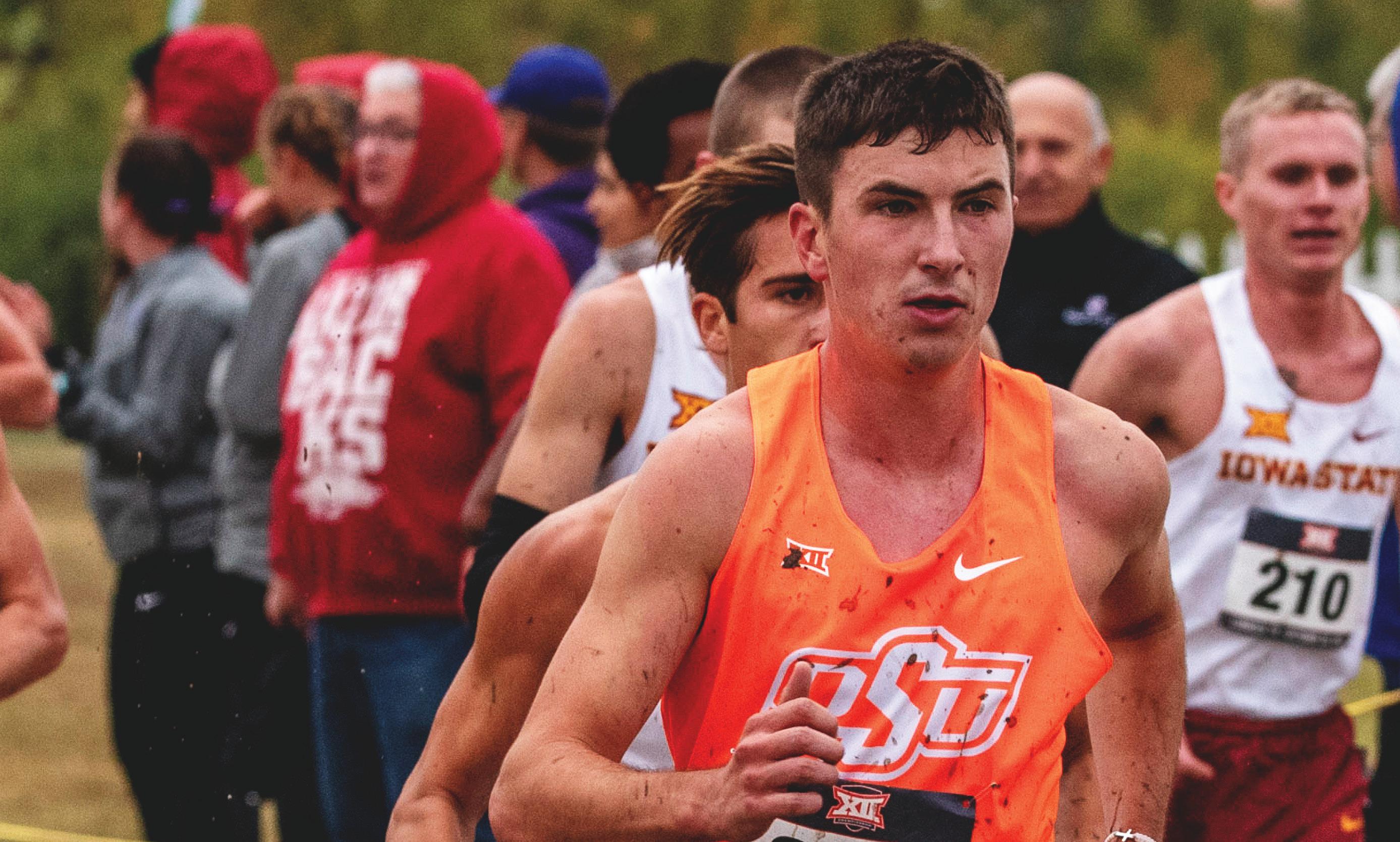
Ryan Schoppe inherited either a blessing or a curse at the NCAA Indoor Track & Field Championships in March. Only he could determine which it was.
With a swift baton exchange from Mehdi Yanouri, Schoppe carried a narrow lead into the anchor leg of the men’s DMR. From Oklahoma State coach Dave Smith’s perspective, Schoppe faced the most daunting task of anyone running those final eight laps in Boston.
The easygoing distance runner from LaPorte, Texas, had no one to pursue, which meant everyone was pursuing him His coach compared the precarious situation to swimming in the ocean with unseen sharks.
But Smith, often a bundle of nerves and energy during track meets, didn’t have to fret about the feeding frenzy. The Cowboys knew what to expect from Schoppe, their anchor man.
“He is a competitor,” Smith said. “He does not want to let anybody down. He wants to be there for his teammates. His whole facial expression and his posture, everything changes. You can just see this heroic look come across him when he gets that baton.”
Entering his fifth year at OSU, Schoppe has proven himself through versatility. During the 2023 outdoor season,
he clocked a 13:37.06 in the 5,000-meter race at the Bryan Clay Invitational, setting a personal best to rank seventh in the Cowboy record books. One year earlier at the same meet, he shattered German Fernandez’s program record in the 1,500, finishing in 3:37.43. With a collection of All-Big 12 honors, Schoppe is poised to also play a major role this fall for a Cowboy cross country team defending a national title.
Amid his many talents, the DMR stands out as Schoppe’s tour de force, the event that elevates him from a solid athlete to an awe-inspiring champion. Schoppe, an aspiring coach, keeps the Cowboys grounded as a veteran leader with youthful positivity, someone who takes care of business in the classroom but doesn’t let thoughts bog him down on the track.
It’s only fitting that he thrives as OSU’s metaphorical and literal anchor.
“It was just up to me to claim that position my sophomore year, and then I just kept it ever since,” Schoppe said. “I love that role, and I don’t want to lose it. I feel comfortable in it.”
With his outstanding performances on the biggest stage, Schoppe has ensured the spot belongs to him. He’s a back-to-back national champion in the DMR, including this year’s race in Boston, when he fended o Georgetown runner Camden Gilmore’s bell-lap surge for an exhilarating finish.

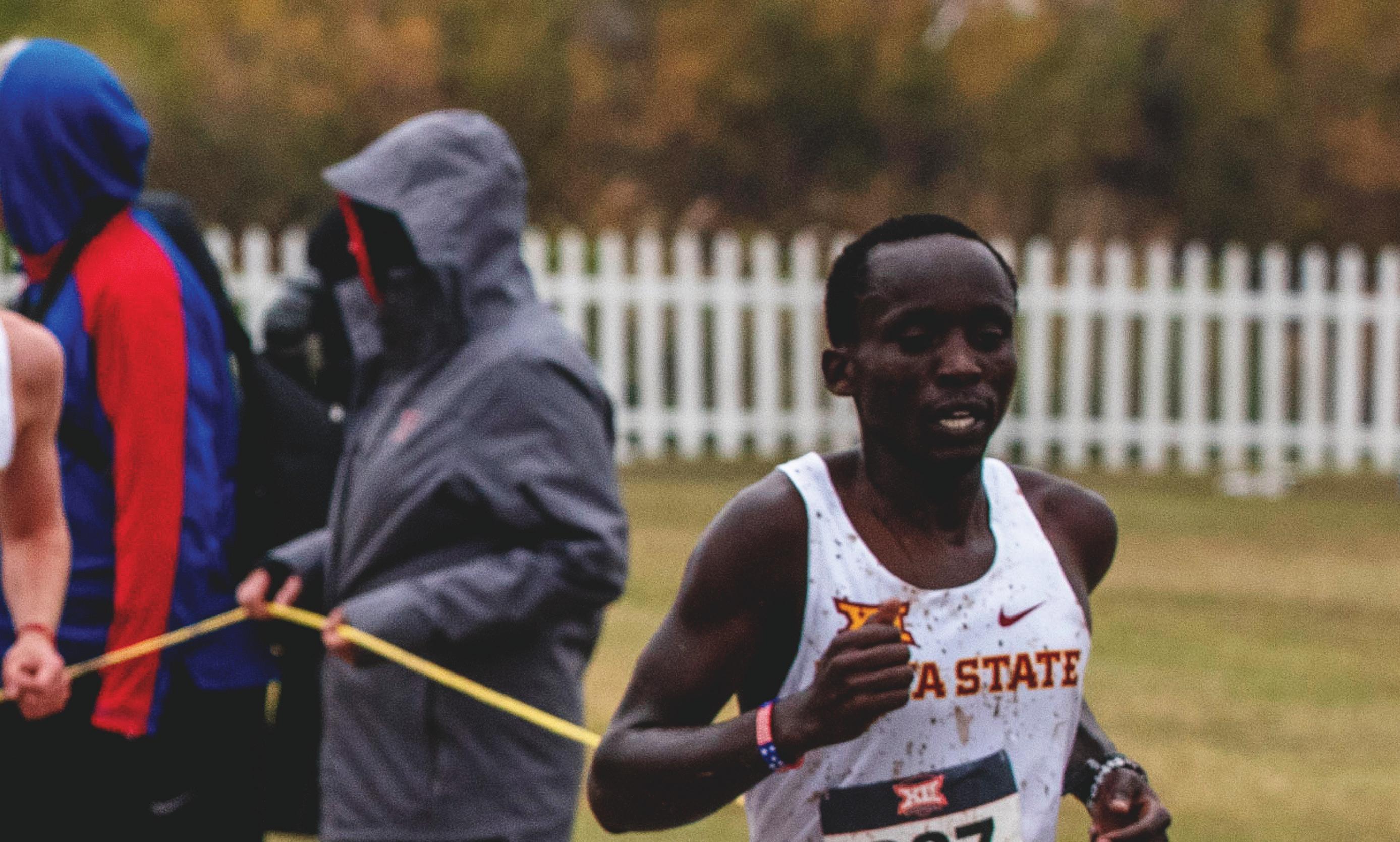
“When I’m free and not thinking about it, that’s when I’m at my best.”
— RYAN SCHOPPE
Schoppe runs with a paradoxically calm sense of urgency. He understands the immensely high stakes but doesn’t let them rattle him. Schoppe knows in a matter of minutes, he could secure gold for his teammates or destroy the lead they cohesively worked to build.
He simply refuses to let the latter happen.
Dave Smith realized he had no choice.
As he assembled his DMR team for the 2022 indoor season, he knew the Cowboys were low on depth. With the rest of the team set, they had no anchor. A bit reluctantly, Smith turned to a lanky sophomore named Ryan Schoppe, who hadn’t developed the strength or speed of his seasoned teammates.
“He’s young,” Smith recalled. “He’s inexperienced. He’s not the best guy we’ve got, but this is the way it’s gonna have to go.”
Despite those doubts, Smith saw tremendous potential. The coach had recruited Schoppe because of his achievements at La Porte High School, where he twice won state in the 3,200
and, during cross country season, logged a 5K time of 14:14.02 for a Texas high school record. Still, could Smith count on a sophomore to handle the longest leg of the DMR, a 1,600-meter push?
He was about to find out.
At nationals, the Cowboys struggled through the DMR, so Schoppe had slim chances of winning by the time he secured the baton. Although the sophomore couldn’t create a miracle, he made a valiant burst toward the front, bringing OSU back to finish fifth. Briefly, he held the lead, showing Smith a thrilling vision of his team’s future.
The Cowboys had identified their anchor.
“I don’t know if Ryan’s the best guy in the NCAA,” Smith said. “He probably isn’t, but when you get a baton in his hand, when someone’s relying on him, when he’s got other people that are depending on him — he is phenomenal. He finds something deep down inside him where he can be really, really good.”
Although Schoppe appeared at ease in the race, he had never competed in the DMR until that year at OSU. The event wasn’t part of Texas high school meets, but in college, it served as an outlet for the competitiveness that had driven him since childhood.
As an active kid in the Lone Star State, Schoppe dabbled in a variety of sports: basketball, tennis, swimming and baseball.
With a knack for memorizing plays, he also tried his hand at quarterback. Schoppe sheepishly grinned at the memory.
“I shouldn’t have done football,” Schoppe said. “As a little scrawny kid, I was never built to be a football player.”
Instead of starring under the Friday night lights, Schoppe gravitated toward the oval surrounding the gridiron. His unmistakable talent caught the attention of Smith, who took a recruiting visit to LaPorte before Schoppe’s senior year of high school.
Quickly, Schoppe endeared himself to Smith.
“Having a guy like that around is just a benefit to everybody,” Smith said. “I think of him as like a puppy that when you walk up, and he starts wagging his tail, he pees on the floor because he’s so excited to see you. He’s just this very happy-go-lucky, charming, positive kid.”
Schoppe carries himself with boundless enthusiasm, but it doesn’t mean he’s nervous. The Texan has the free-spirited vibes of a California surfer dude, content with venturing o the beaten path and finding solace in nature. For Schoppe, who also enjoys golf and pickleball, running on a quiet dirt road is almost a form of meditation.
“When I’m free and not thinking about it, that’s when I’m at my best,” Schoppe said.
Schoppe realized he could channel that clear mindset in Stillwater, where the college-town setting o ers a relaxed contrast to the hustle-bustle of the Houston suburb where he grew up. Add in Smith’s leadership, and OSU o ered the ideal environment for Schoppe to build his career in cross country and track.
After nearly five years in Stillwater, Schoppe continues to radiate the “puppy dog” personality Smith noticed on the initial recruiting trip, but the distance runner has also shown his serious side on several occasions.
Is his laid-back persona a clever disguise for his fierce competitiveness, or is the heroic competitor an alter ego that surfaces only when he’s racing toward a finish line? Perhaps the true Schoppe is a combination of both, fueling success on and o the track.
Schoppe maintained his upright posture as Camden Gilmore rapidly gained on him.
The OSU distance runner’s legs kept churning. His head never swiveled. Catching a glimpse on the big screen of the approaching Georgetown senior, Schoppe simply bolted

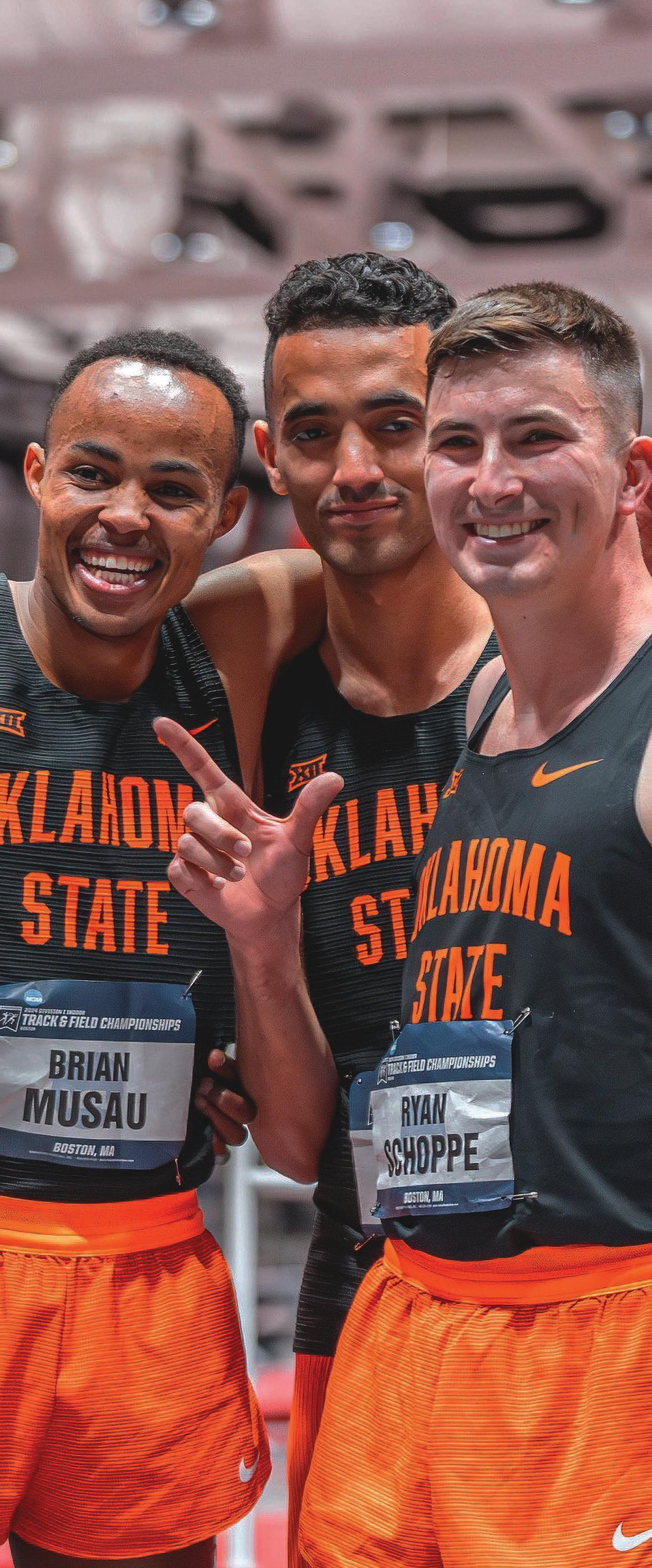
toward the finish line, clasping the baton in his right hand as if it were the source of a superpower.
A last-minute scare only provided more motivation.
“I don’t like giving people a free opportunity, slowing it down and making it a tactical race,” Schoppe said. “I want people to work for it. I was pretty confident when I got the stick in the lead, and I knew that we had a really good shot at winning if I just ran my race.”
With a time of 9:25.24, the Cowboys secured their second straight national title in the DMR, repeating as relay champions for the first time since 1965 and ’66. Brian Musau gave OSU a flying start with a time of 2:54.86 in the 1,200-meter leg. DJ McArthur kept up the momentum, covering 400 meters in 45.60. Yanouri followed with a time of 1:49.20 in the 800, propelling the Cowboys to a lead Schoppe wouldn’t surrender.
OSU’s depth had increased since Schoppe’s sophomore year, so Smith wavered in his DMR order ahead of the race, tinkering with combinations as if he were solving a logic puzzle in math class.
He didn’t have to wonder where Schoppe would fit.
After his breakout in 2022, Schoppe won his first NCAA title in the DMR as a junior, helping the Cowboys surge to a three-second victory.
In February of 2023, OSU made world history. Fouad Messaoudi, Hafez Mahadi, McArthur and Schoppe won the DMR at the Arkansas Qualifier in 9:16.40, shattering Oregon’s previous mark by three seconds to set an unofficial indoor world record. Schoppe blazed through the anchor leg in 3:52.84 to finish the job.
He carried that momentum into this past indoor season, securing OSU’s fourth straight Big 12 title in the DMR. Musau, Ben Currence, Laban Kipkemboi and Schoppe finished in 9:29.41 before Schoppe scorched through the mile in 4:02.73 to add an individual conference title.
Given this recent history, Smith had no doubt Schoppe would handle the anchor leg at nationals.
“He’s just rock solid in those situations,” Smith said.
“Rock solid” could also describe Schoppe in the classroom. In March of 2022, he won the Elite 90, the NCAA award given to an individual who has excelled in academics and advanced to the national championship level in athletics.
“It was pretty special,” Schoppe said. “I try to balance it perfectly between free time, athletics and academics. It’s something I’ve learned, how to budget my time over the years.”
A sports management and marketing student in OSU’s Spears School of Business, Schoppe wants to stay close to sports after graduation. He aspires to run professionally, and he has also considered marketing for an athletic company.
Smith provides inspiration for Schoppe’s other dream: being a coach.
This past cross country season, as the Cowboys secured their first national title since 2012, Schoppe served as a coach-like motivator within the team. With Smith’s guidance, he made the mature decision to redshirt, recognizing OSU’s depth and choosing to preserve his eligibility.
That didn’t mean Schoppe could sit back and relax. In the hours leading up to any race, Smith could have burned the redshirt, though it didn’t end up happening.
“His role was, ‘Be ready to go,’ and he was, up until that final deadline at 20 minutes to go,” Smith said.
With enough eligibility for two more cross country seasons, Schoppe must continue to stay ready and build confidence. Smith said the only time he has seen Schoppe’s self-belief waver is when it comes to cross country. Schoppe will say the sport isn’t his forte, but his coach disputes that opinion. The distance runner just needs the same level of determination he has when he seizes the baton and closes out the DMR for his teammates.
“Maybe we should just make him run with a baton,” Smith joked.
He has a point. The baton turns the Cowboys’ beloved goo all into a heroic figure, a focused leader who will not accept failure.
With a reliable anchor, Smith doesn’t tell Schoppe’s DMR teammates they need to win. Instead, this is their motivational line: “You just have to keep Ryan Schoppe close.”
Schoppe can surge from behind, or if the Cowboys give him the lead, he won’t sweat the pressure.
An early advantage might doom some runners. Schoppe chooses to treat it as a blessing.
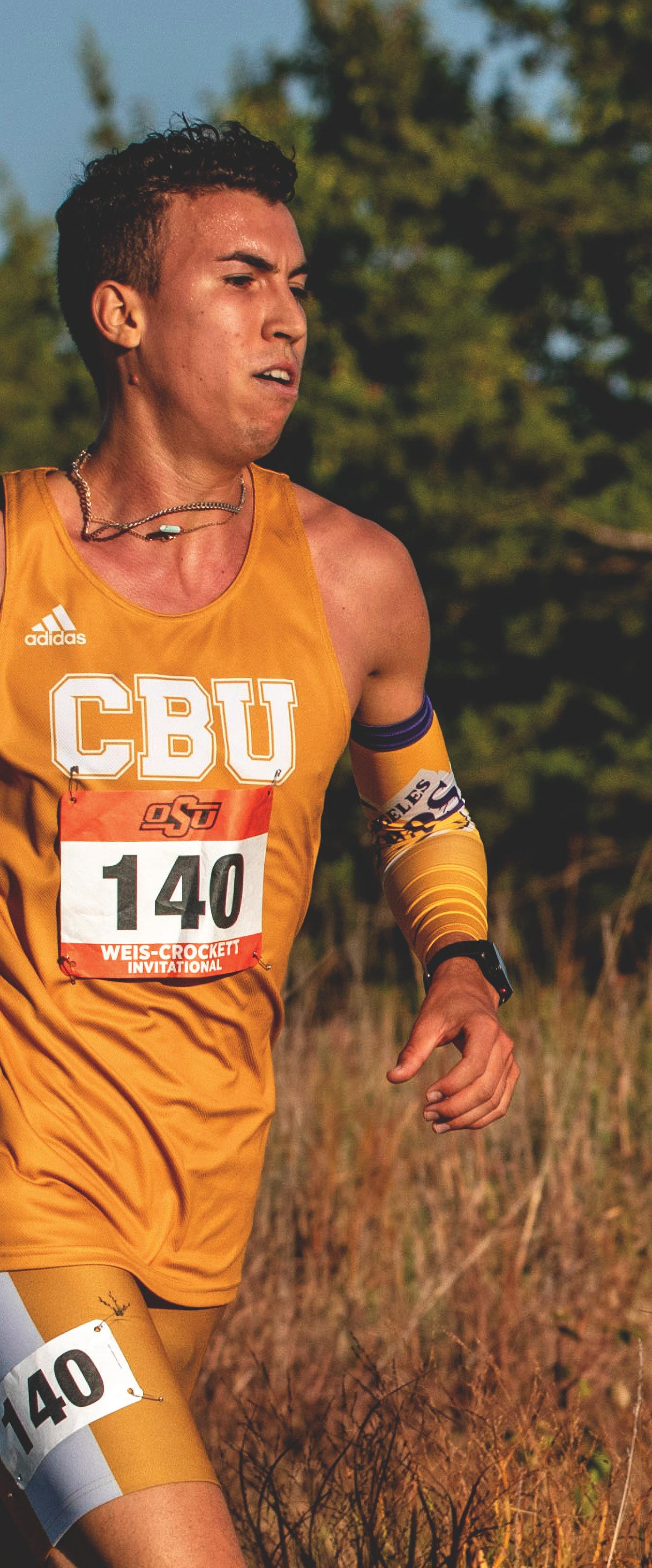

Senior Jilyen Poullard celebrates with Oklahoma State softball head coach Kenny Gajewski as she rounds third base on a home run trot. Poullard's power helped No. 4 OSU knock o the second-ranked Sooners 6-2 in Norman on Saturday, May 4. The victory clinched the final Big 12 Bedlam series for the Cowgirls, who took two out of three games at the newly-minted Love's Field. Poullard hit the go-ahead homer in Friday night's opener to lead the Pokes to a 6-3 victory that set the tone for the weekend.
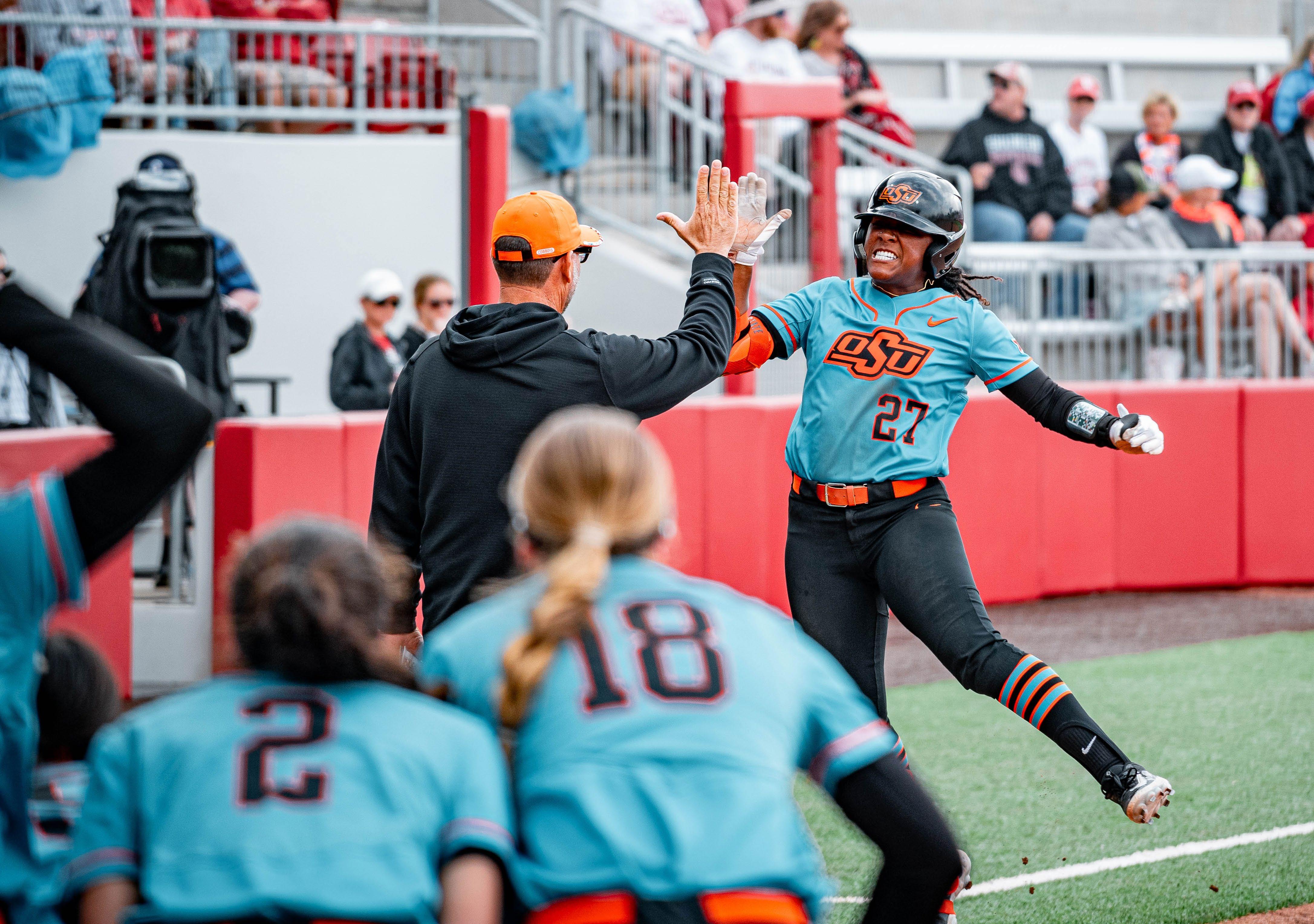

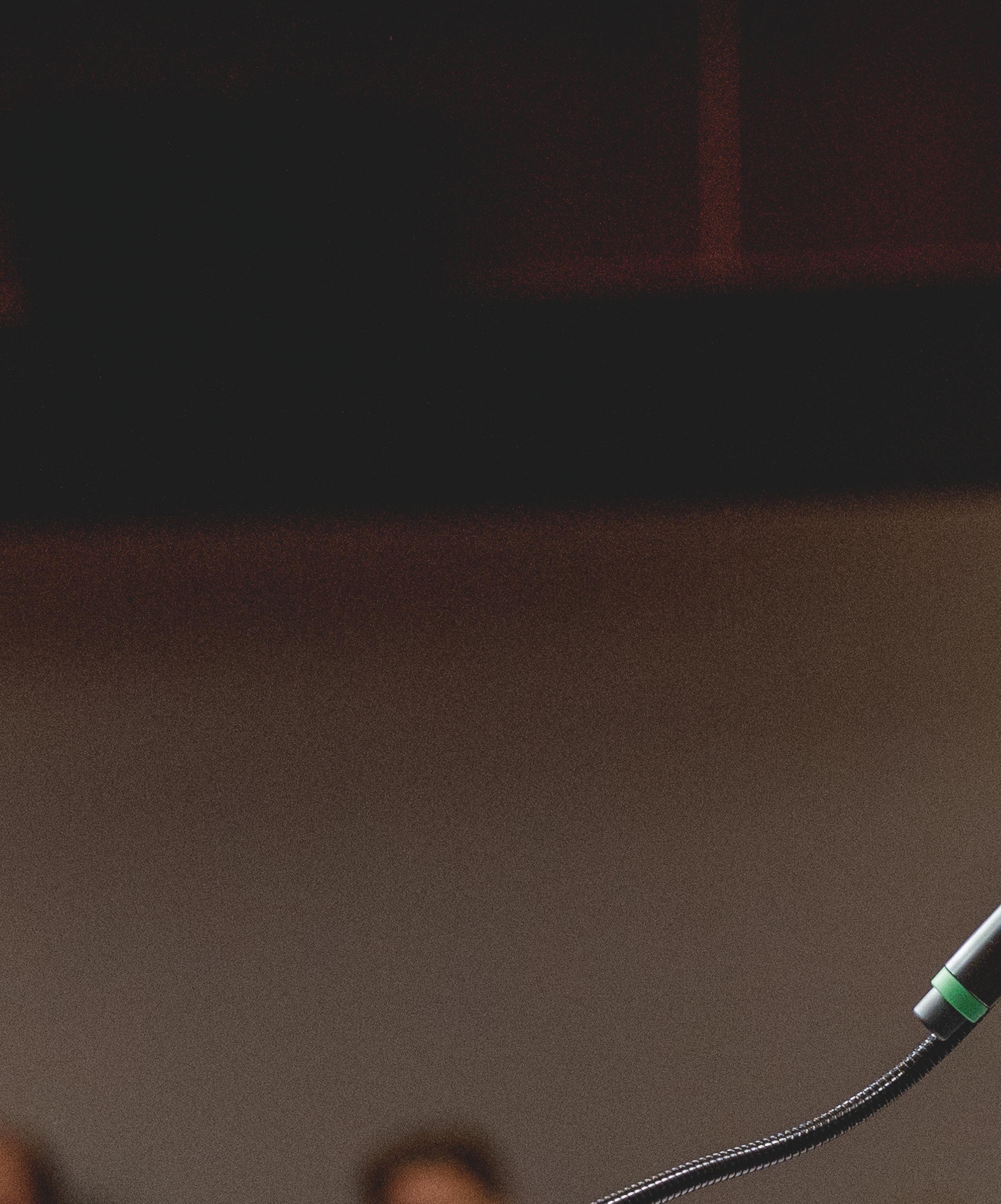
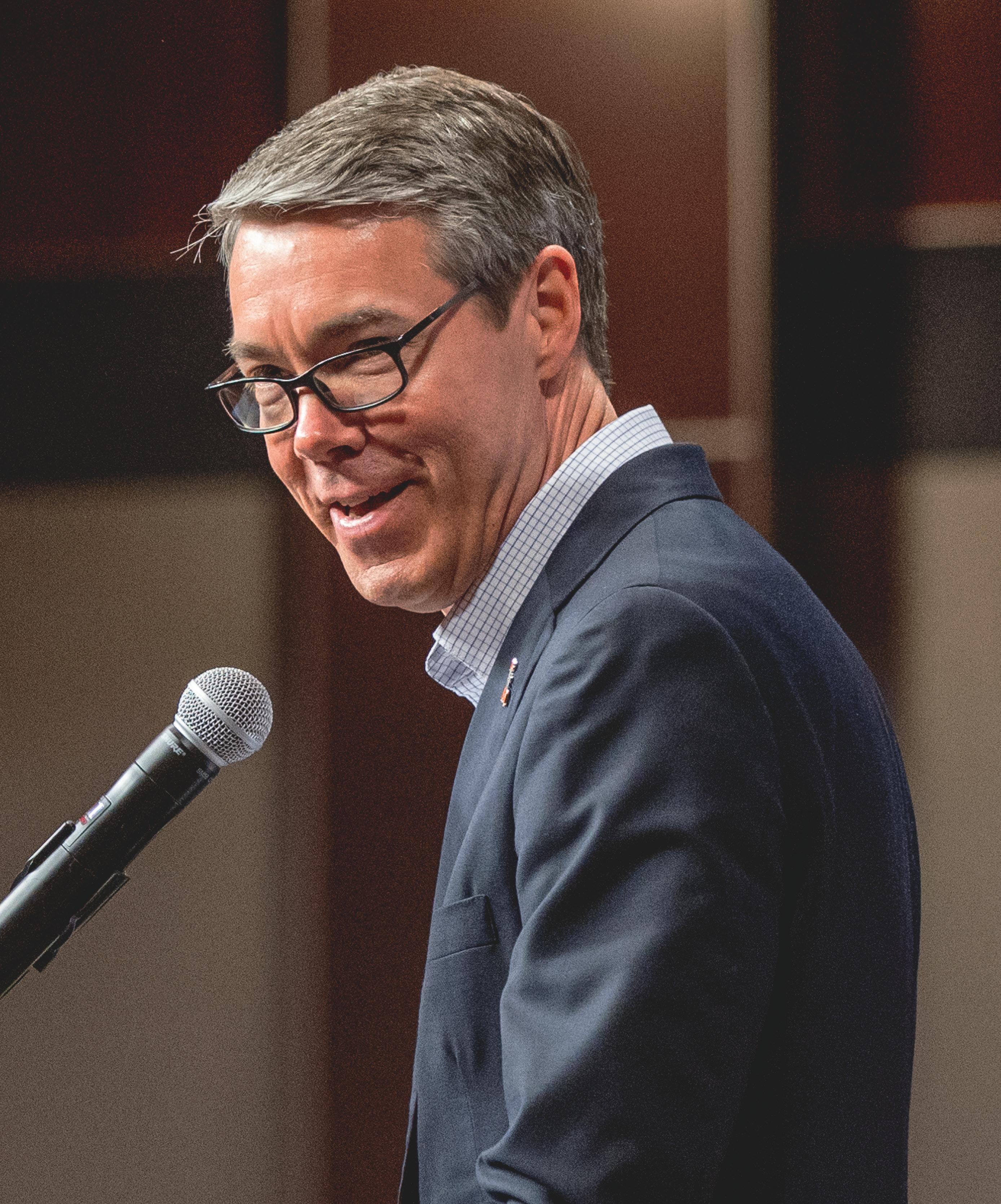
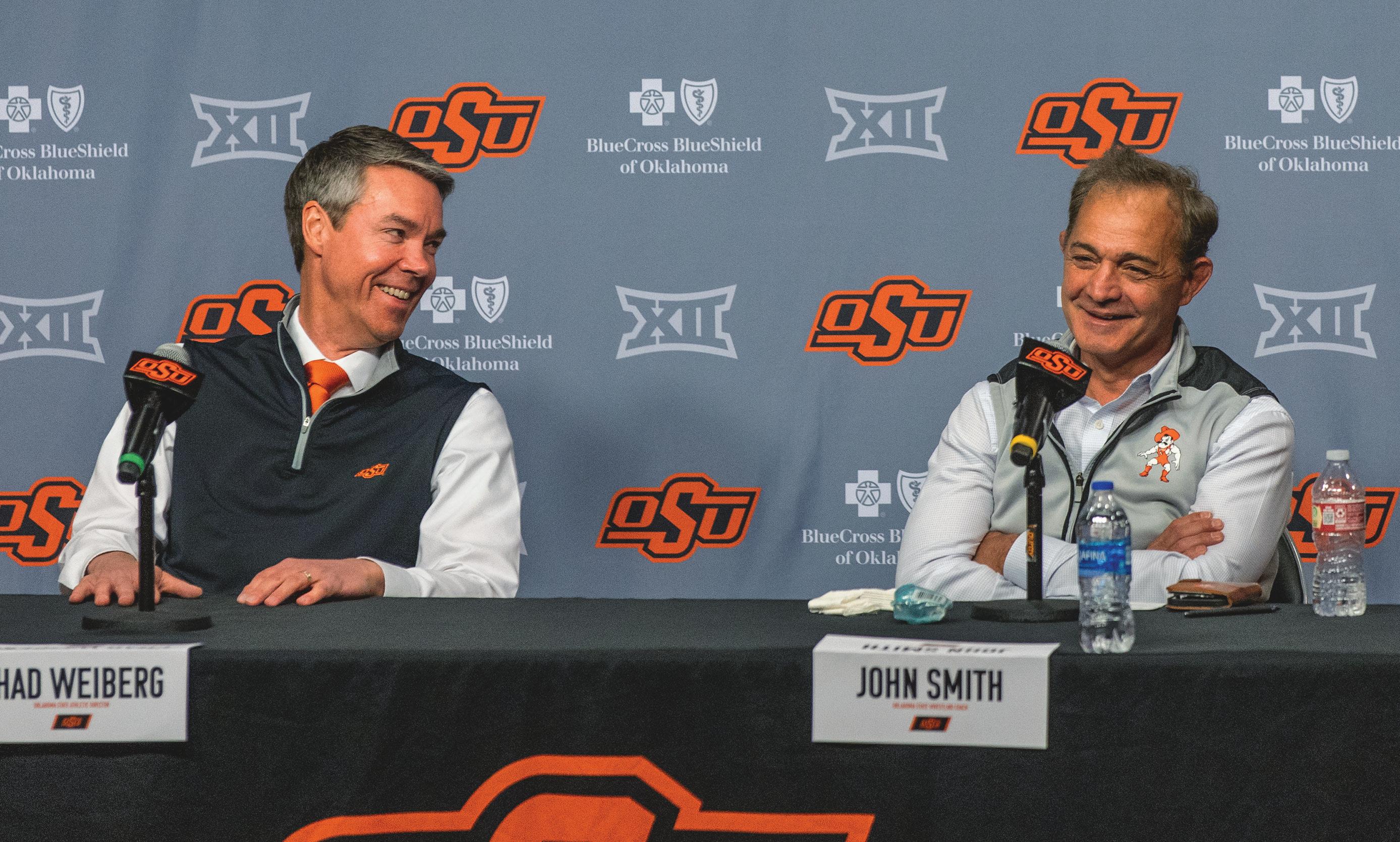
On April 4, 2024, Oklahoma State athletic director Chad Weiberg was enjoying some quiet time in his Gallagher-Iba Arena o ce. He had recently completed the 17-day search process for a new head men’s basketball coach and was preparing for the afternoon news conference in which he would introduce Steve Lutz to the Cowboy family.
Mission accomplished. But only temporarily as it turned out.
Enter John Smith into Weiberg’s sanctuary.
On the same day that Lutz was launching his OSU career, the legendary Cowboy wrestling coach broke the news to Weiberg that Smith’s just completed 33rd season in charge of the program was his last. For the first time in more than 100 years, Cowboy Basketball and Cowboy Wrestling would change head coaches in the same school year.
And Weiberg, after a very brief pause, would once again be shopping for a head coach.
Any search for a Division I head basketball coach is high profile and heavily scrutinized on a local, state and national level. And any time Cowboy Wrestling goes looking for a head coach, every corner of the wrestling universe stops and takes notice. Worlds were colliding. OSU Athletics was about to experience the bright lights of both spotlights within days of each other.
It was on March 14th that Weiberg made the announcement that Mike Boynton would not return to lead the OSU basketball program, o cially opening Search Number One. On May 7th, David Taylor was announced as the successor to Smith, o cially closing Search Number Two.
In between, there were numerous phone calls, multiple flights, partnerships with two search firms, stacks and stacks of unsolicited feedback and input and some wise counsel.
The result was two hirings that have been virtually universally applauded
“I thought they would both be very good fits for OSU in their own ways,” Weiberg said of Lutz and Taylor. “They are obviously di erent people in di erent sports from di erent backgrounds, but they are very relatable. They have families that are important to them, and I think they are both good fits for their programs, for our university and our community.”
Lutz comes to Stillwater having already turned around programs in his two previous stops as head coach at Texas A&M-Corpus Christi and Western Kentucky. Taylor is a first-time head coach and just 34 years old. But his hiring sent shockwaves throughout the wrestling world, and by all indications, reignited the OSU fan base.

Two men with two di erent backgrounds for two di erent programs from two di erent and not-quite-butalmost synchronized searches.
“In a basketball search, there is a lot of tra c because a lot of searches are being run simultaneously,” Weiberg said. “In wrestling, everyone was watching what we did.”
Chad Weiberg is the son of a coach, and it would be fair to describe him as a coach’s athletic director. If he had had his druthers, there would not have been any searches during the spring of 2024, and certainly not two of them. Boynton was a popular campus figure and had endeared himself to the OSU community with his support of anything and everything orange. He had lots of people rooting for him and his young team, including Weiberg.
“I was hoping that we would show some signs of momentum,” Weiberg said of the Oklahoma State hoops program. “I was looking for something that indicated we were heading in the right direction, something that indicated we
should let things play out another year. But it just didn’t happen. There wasn’t just one clinching thing, but it became clear to me that we needed a fresh start.”
At the conclusion of the 12-20 season, which ended in the first round of the Big 12 Tournament, Weiberg made the move, initiating his first search of the spring.
Seventeen days later, when John Smith brought his decision into the athletic director’s o ce, Weiberg took a boxer’s approach of stick and move.
“I really just wanted to buy some time,” he said. “The NCAA championships had basically just ended, and I know there is always a lot of emotion involved when a season concludes. I thought maybe if he could just get away from it for a while, it might get his competitive juices flowing again — if he got some rest, some energy. I asked him to take a bit of time.
“And by the way, I am introducing our new basketball coach later today, and I need some time,” Weiberg laughed.
John Smith, considered by many to be the LeBron James or Tom Brady of his sport, acquiesced to the AD in the short term, but his decision had been made. The rest was a formality.
There is a public perception, or maybe misconception, about the role search firms play in the hiring process for head coaches. Those firms do not do the hiring or even the recommending of a hire, but they help with due diligence by handling the road work and paving the way for dialogue. They are a resource for potential candidates, and they help universities determine who has serious interest as opposed to those using an opening to garner a raise at their current school. And perhaps most of all, they keep athletic directors from spending time chasing down rumors, gossip and false reports.
For the men’s basketball search, Oklahoma State chose to work with Turnkey ZRG
“I’ve pretty much been around all of them at some point,” Weiberg said. “I chose this one for several reasons. Our point person, Katie Young Staudt, was in Tulsa. Her dad was a big OSU fan. She was from Enid, and she’s very familiar with basketball and our program. Her husband works for the NBA. She had great knowledge of our institution and our situation. All of those factors appealed to me for that particular search.”
In the early going of any search, phones are the instrument of choice. So Weiberg and Deputy Athletic Director Reid Sigmon (and their cell phones) made the trip to Kansas City for the early stages of the NCAA Division I Wrestling Championships. As it turned out, they stayed for just one session before relocating to Dallas for the bulk of their manhunt.
“A significant part of the search was conducted in Dallas,” Sigmon said. “It is an easy place for candidates to reach with direct flights everywhere. Coaching searches can have lots of changes and the location gave us flexibility.”
The OSU program drew plenty of attention. Along with the history of Cowboy Basketball, from Iba to Sutton to Gallagher-Iba Arena, there was also the lure and challenge of competing in the Big 12 Conference, long considered the nation’s best basketball league.
And every coach wants to work for an athletic director who can appreciate the challenges a new sta will face, someone who truly understands the inner workings of his or her sport. Weiberg is the son of a long-time basketball coach (Mick, a former OSU assistant) and the brother of another coach, Brett, who is the men’s head coach at Southwestern Oklahoma State in Weatherford. Another sibling, Jared, was one of the 10 members of the OSU basketball family who was lost on Jan. 27, 2001.
Chad Weiberg is also about to become the first OSU athletic director to sit on the prestigious NCAA Division I Men’s Basketball Committee. On Selection Sunday, he will
be in Indianapolis helping seed March Madness — another bonus for a basketball coach who is shopping for just the right boss.
Despite the rumors, false media reports and insinuations to the contrary, which seem to surface in every search since the invention of electricity, Weiberg, Sigmon, and the folks at Turnkey ZRG kept the buttoned-down coach hunt running in an orderly and quiet fashion. In fact, the lack of leaks regarding the search likely led to the information vacuum being filled by those with little or no information or confirmation.
“I never felt rushed to make a decision for fear we were going to lose out on someone,” Weiberg said of the process and a timeline that saw several power conference schools looking for coaches simultaneously. “There were some really good candidates in this cycle and a lot of them wound up with really good jobs. And I think they all wound up at places that fit them.
“I think we ended up with a guy that really fits us the best,” he added, “which is one of the things I liked about Steve Lutz from the very beginning.”
“NO EXPECTATION IS TOO HIGH FOR OUR PROGRAM. WE ARE NOT INTERESTED IN TALKING ABOUT FINISHING SECOND.”
— Chad Weiberg
Lutz was born in San Antonio, grew up in Texas, played basketball at Texas Lutheran, earned an advanced degree at Incarnate Word in San Antonio and cut his coaching teeth at the likes of Stephen F. Austin and SMU, along with his assistant stints at Garden City Community College, Creighton and Purdue. His first head coaching job was at Texas A&M-Corpus Christi
“Certainly, his familiarity with the region was important,” Sigmon said. “But he is also straightforward and a hard worker. His success of three-straight NCAA Tournament trips at two di erent schools without a lot of history is impressive.”
Media, social and otherwise, began reporting that Oklahoma State had zeroed in on Lutz, although the announcement was not made o cial for several days after those reports.
“The truth is we were not finished with our process,” according to Weiberg. “The minute we visited with Steve Lutz, he was very, very high on our list, but we still had a process to finish. And by doing that, it a rmed our initial impressions of Coach Lutz. When you find someone that you think might be your person, you do not stop in the middle of the process. It’s another way of a rming your choice.”
John Smith was one of the longest tenured coaches in Oklahoma State history, along with men’s tennis coach James Wadley and Mr. Henry Iba. Despite his years of service, Smith’s departure was still a jaw dropper, and it launched a search process that took an unexpected turn.
“Our wrestling job had not been open in 33 years,” Weiberg said. “You realized when it was happening that it was historic. Oklahoma State is the capital of wrestling. I felt that we needed to turn over every rock and see where it led and trust that it gets you to the right place.”
In Weiberg’s own words, he suspected the search process would take him eventually to internal candidate and Cowboy alum Coleman Scott. “But I also knew it was Oklahoma State and there would be tremendous interest. I told Coleman I had a responsibility to run a search. I mean, this is Oklahoma State wrestling,” Weiberg said.
For the second search, Weiberg went with Bowlsby Sports Consultants, led by Kyle Bowlsby, the son of former Big 12 commissioner Bob Bowlsby.
“I’ve known the family for a long time, and they are huge wrestling people,” Weiberg said. “Bob was a wrestler and a former athletic director at Northern Iowa, Iowa and Stanford before becoming the Big 12 commissioner. Kyle has been around it his entire life. I don’t think there is anyone who understands the wrestling landscape any better. He was someone I could bounce questions o and who could run interference for us.”
During the process, certain trends became evident. The name of David Taylor continued to surface. At the same time, OSU was having conversations with multiple candidates, including some sitting head coaches.
“David was getting ready for the Olympics, and I think everyone in the world thought he would be wrestling late into the summer, so it didn’t appear the timing would work out,” Weiberg said. “Our search was basically on hold during the Olympic trials. When the competition was over, the question was how much interest he had in being a college coach and leaving Pennsylvania for Oklahoma.”
Taylor was serving as the owner and operator of the M2 Training Center in State College, Penn., while still competing on the world stage. He created the center to help wrestlers achieve their goals on and o the mat while competing at the world level. As a competitor, his résumé included an Olympic gold, three world championships and two NCAA titles at Penn State.
Phone conversations revealed that Taylor was interested, especially in a situation with a high ceiling like OSU. Soon after, a Cowboy contingent, including Weiberg,
Sigmon, sport administrator Tony Petro and wrestling donor Chad Richison, headed to State College to meet with Taylor and his family in person. Taylor had spent his entire adult life in State College, a liated with or adjacent to Penn State wrestling.
“It was clear David had given the job a lot of thought and consideration,” according to Sigmon. “He had lots of questions. Our expected two-hour interview turned into five hours. It was a great opportunity to spend time with David and his wife, Kendra, and get a look at the life they had built there.
“That was a highlight for me. But if you ask Tony or Kendra, they will probably say it was the goat that kept trying to eat my sportscoat.”
For each of the searches, Weiberg was also focused on keeping his tight circle small, but well informed.
“It was important to keep the Board of Regents and the president informed during both searches,” he said. “That goes without saying, but there are certain stakeholders as well as donors that need to be in the loop as well.”
Regent Joe Hall played a role in both searches. OSU alum Ross McKnight was a resource on the men’s basketball side, and Richison was an important member of the wrestling search process.
“I don’t know if saying they were part of the process is even a fair way of putting it,” Weiberg said. “They were part of the solution.”
There were other constituents as well.
“I met with both teams and told them that it would take a little bit of time, but I would keep them as informed as I possibly could,” he said. “I told them to come and see me at any time, and some of them did. But it’s important to keep searches confidential. You have some candidates that are putting a lot on the line when they express an interest in your job, and you don’t want to betray them or put them in bad position.”
There was also the John Smith factor for Weiberg to consider.
“I wanted to keep him informed, but also not put him in an awkward position with respect to the sta that we already had in place,” Weiberg said. When you have someone with as much expertise and experience as Coach Smith, you want to use that as much as you can. As we began to zero in on David, I let Coach know the direction I thought we were going to go. He gave me his thoughts, which were fair.”
When the dust had settled on both searches, Weiberg, Sigmon and their search partners could look back with some satisfaction, not just at the outcome, but also on the winding road to the finish line.
Oklahoma State basketball is considered a program of great historical significance. But with recent struggles and the emergence of the Big 12 Conference as the country’s best for several years running, the climb back up the hill may not be easy — as Weiberg is fully aware.
“We have had some hard times lately, and things haven’t gone the way we wanted,” he said. “But it’s not like we are trying to sell something that is unprecedented. We have Final Fours and Sweet 16s in our not-too-distant past. We have two Hall of Fame coaches. We know it’s possible here, and the coaches we talked to knew it was possible. The first step is returning to the NCAA Tournament and then going from there. That is our expectation.”
“As for wrestling, as we have said publicly, no expectation is too high for our program. We are not interested in talking about finishing second.”
Since March, the only consistency for the men’s basketball and wrestling programs has been changes. The result of the turnover, from the rosters to the coaches, might be hard to evaluate for the OSU faithful. But early indications are that they are ready to ride with the Cowboys.
“The new energy brought to the wrestling program with the hiring of Coach Taylor has already been reflected in ticket sales, even in the heat of the summer,” said OSU’s assistant athletic director of ticketing Alec Proctor. “And I like where the numbers are for men’s basketball. We are seeing renewed interest from some of our most generous supporters. Many of them are former basketball season holders who had migrated to football only. Now they are ticket shopping for both programs.”
“There is great, untapped potential for Cowboy Basketball,” Weiberg said. “We’ve seen it before. The packed GIA with electricity in the air you can cut with a knife. The epic battles with Kansas, Iowa State and others. The tournament runs. And we need to get it back to that place. Coach Lutz understands the importance of the opportunity and, together with the support of the Cowboy Family, I’m confident he can get us where we all want to be.”
The searches are now behind both the candidates and the OSU administration. Sta s have been completed, rosters have been built, and the schedules are nearly finalized. Soon Steve Lutz and David Taylor will begin their maiden voyages in Stillwater.
And the athletic director can go back to one of his favorite things: not searching for head coaches.
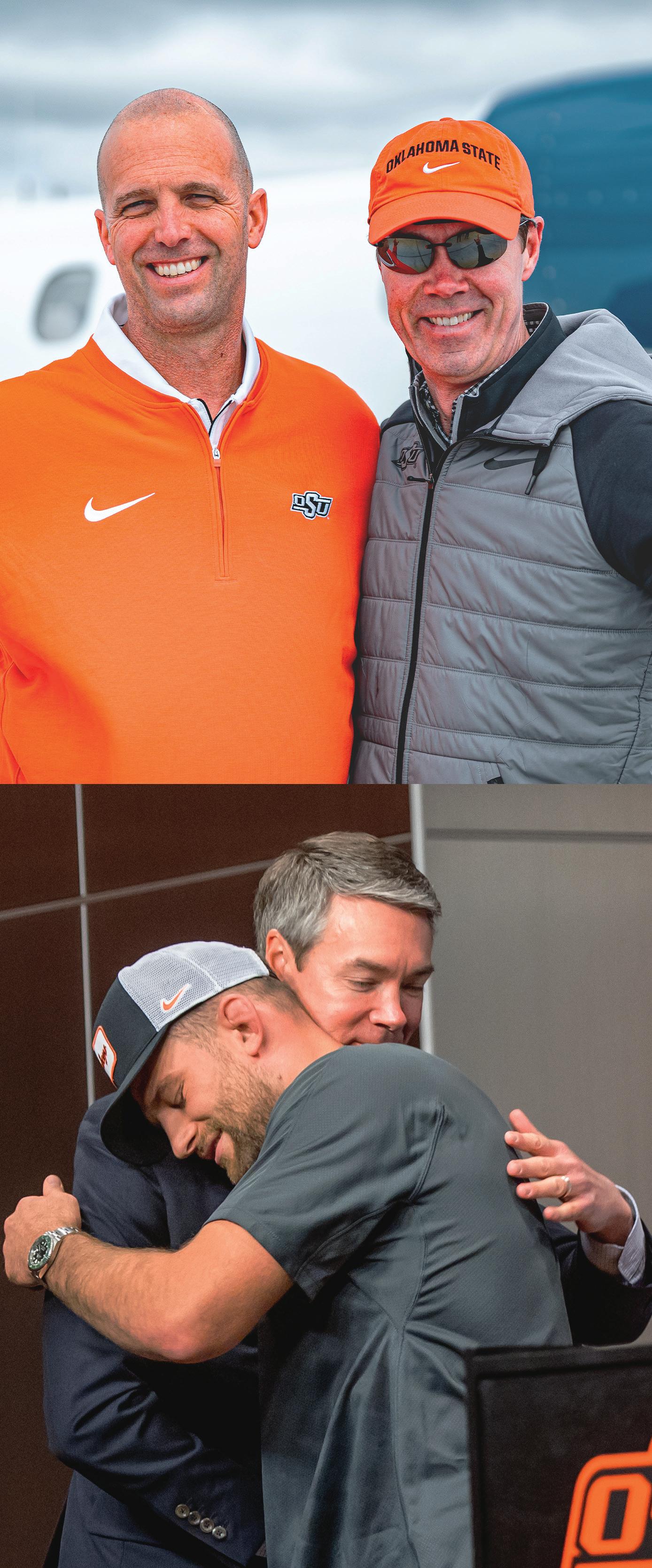
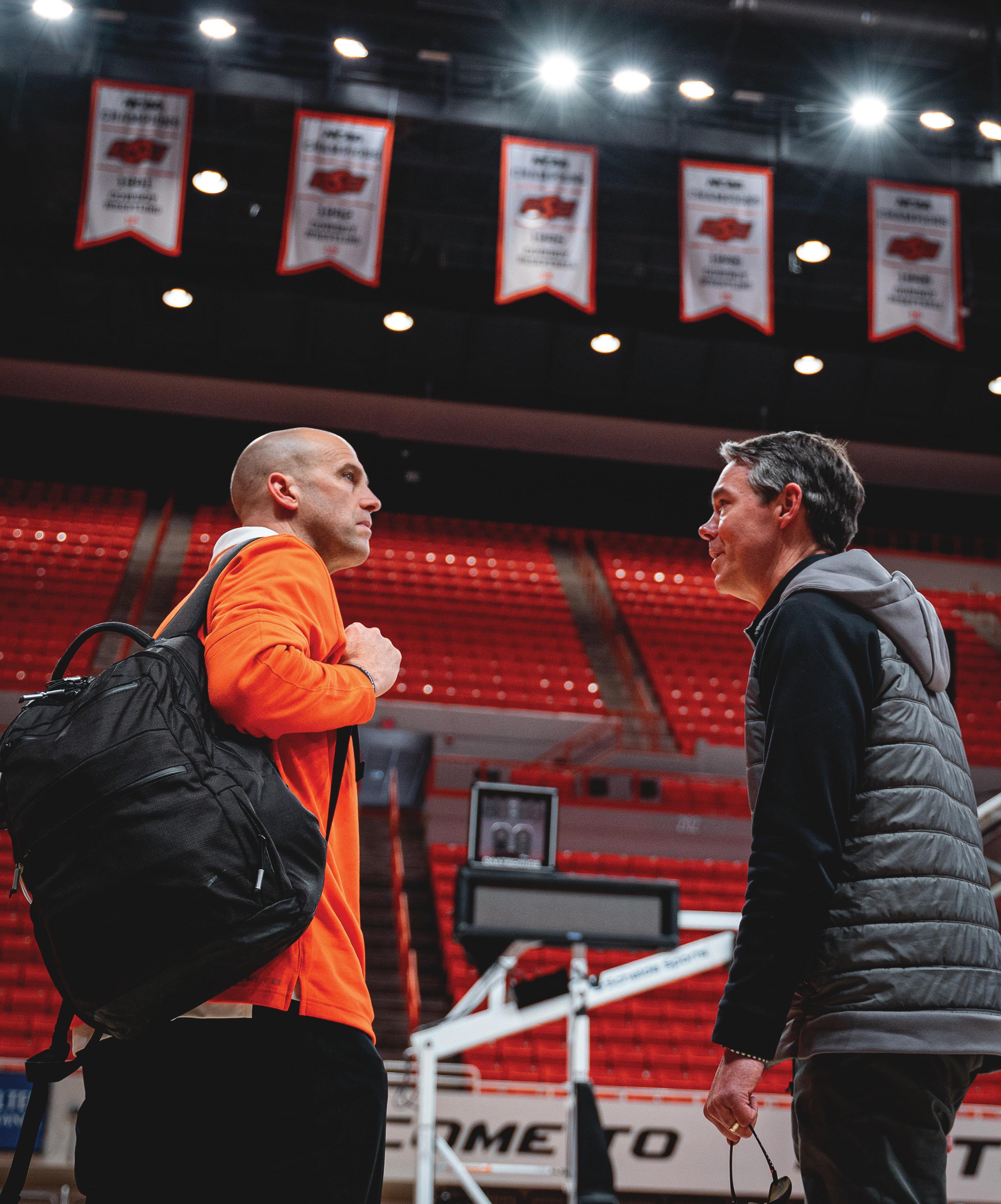


Quarterback Alan Bowman, along with Eddie Sutton Foundation co-presidents Dave Hunziker and Larry Reece and volunteer Kelly Allen, present the "Superwoman Award" to ESF treasurer Katie Schofield at the 2024 Cowboys vs. Cancer Classic Golf Tournament. The annual service award is named in memory of Matt Allen, an OSU graduate who died in 2013 at age 46 from brain cancer. Held May 20 at Stillwater Country Club, the event helped raise a record $195,000 to impact the fight against cancer, support families and provide meaningful experiences for those a ected. For more info, visit theeddiesuttonfoundation.com
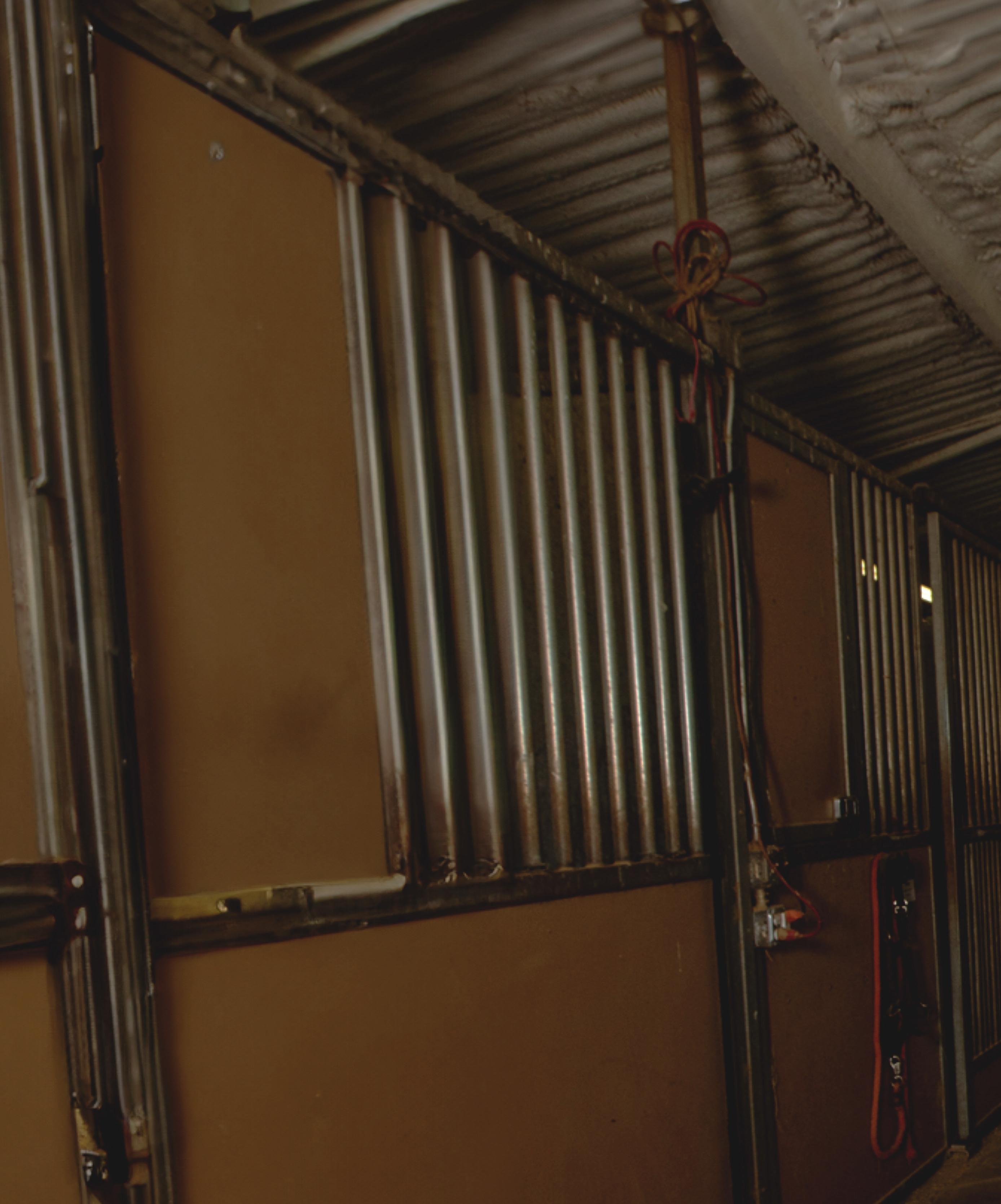


Some of Victoria and Todd Corbin’s favorite memories of their four kids growing up were when they played dress-up together.
Often the kids' costumes were the Corbins’ old Army fatigues.
“Some of our cutest pictures of them are in our uniforms,” Todd said. “They probably did that until I’d say maybe 10 or 11.”
Victoria interjected.
“Oh, make no mistake,” she said, “Lily was still princesses and stu like that.”
Lily Corbin was the oldest of Victoria and Todd’s children. The only girl, too. Even though she joined her brothers dressing up in their parents’ old military gear — a beloved family photo shows the kids posed by the pool, her three brothers in fatigues and Lily in a button-up dress shirt with the CORBIN nameplate still attached — she didn’t grow up as enamored with the military as her parents or her brothers.
Yes, she heard stories from her parents of their service, Victoria who was a captain in the Nurse Corps and Todd who was a captain in the Medical Service Corps. (They actually met at Fort Bragg when he went to the emergency room to investigate a patient complaint, asked for the nurse in charge, and the rest was history.) Sure, Lily was proud of her family’s service stretching back many generations.
But following in their footsteps?
“I wanted nothing to do with the military,” Corbin said. “Nothing.”
My, how things change.
Corbin, a junior on the Oklahoma State equestrian team, is a contracted cadet in the Army Reserve O cers’ Training Corps (ROTC) at OSU. That means she has already entered into a contract with the United States Army, agreeing to complete the ROTC program, become a commissioned second lieutenant upon graduation, and serve at least eight years of either active or reserve duty.
Her goal: become an aviator.
She wants to fly helicopters.
“Being an Army aviator is hard,” said Lt. Col. Bo Reynolds, who led OSU’s Department of Military Science for the past three years. “Our Army needs good pilots.
“But people like Lily, they’re fighters, they’re resilient, and those people to me are going to be successful.”
So, how did Lily Corbin go from wanting nothing to do with the military to wanting nothing more than to fly Army helicopters?
“It’s so hard for me to wrap my head around it,” she admitted.
But at the heart of it is something she has known since
she was little — she loves chasing goals, putting in the work needed to achieve something and doing everything in her power to be the best.
Lily Corbin was in kindergarten the first time she laid eyes on a horse.
“And it was love at first sight,” her mom said.
Victoria had ridden horses throughout her life and had told stories to the kids about her experiences. But when Lily saw that horse, something in her clicked: she wanted to ride Immediately.
So, she did what any 5-year-old would do — she begged.
“Please let me ride,” she would say to her parents. “Will you let me take riding lessons?”
The answer was always the same.
“No,” they would say.
Lily didn’t understand why not, so again, she did what any kid would do — she kept begging
“Please let me ride,” she would say.
“No, no, you’re not,” they would reply.
“Pleeeease.”
“No.”
The truth is, Victoria knew how amazing horse riding could be. It’s why she had done it for so many years. She loved it.
“But having grown up in that environment, I know what that involves,” she said.
The cost can be high. The time commitment can be intense. And for a young rider like Lily, safety can be a concern, too.
“You just don’t want to go head-down into this without really seeing if that’s what you want,” Victoria said. “So I purposely put her o .”
Victoria and Todd told Lily that she wasn’t allowed to ride for nearly two years. It wasn’t easy either, because every time she read about a horse or saw a horse on TV “or God forbid … saw one in person,” her mom said, Lily went gaga.
As Christmas rolled around during Lily’s second-grade year, Victoria and Todd realized her interest in riding wasn’t a passing fancy. They found a place where Lily could take riding lessons, and to let her know that she was going to be allowed to ride, they got her riding pants and boots for Christmas.
“When she opened those up,” Victoria remembered, “she went crazy.”
Her parents soon realized Lily wasn’t just a little girl fascinated with horses. She truly loved riding.
“WHAT I LOVE ABOUT LILY IS THAT SHE GIVES EVERYTHING. SHE’S ALL IN ON EVERYTHING SHE DOES.”
— LT. COL. BO REYNOLDS
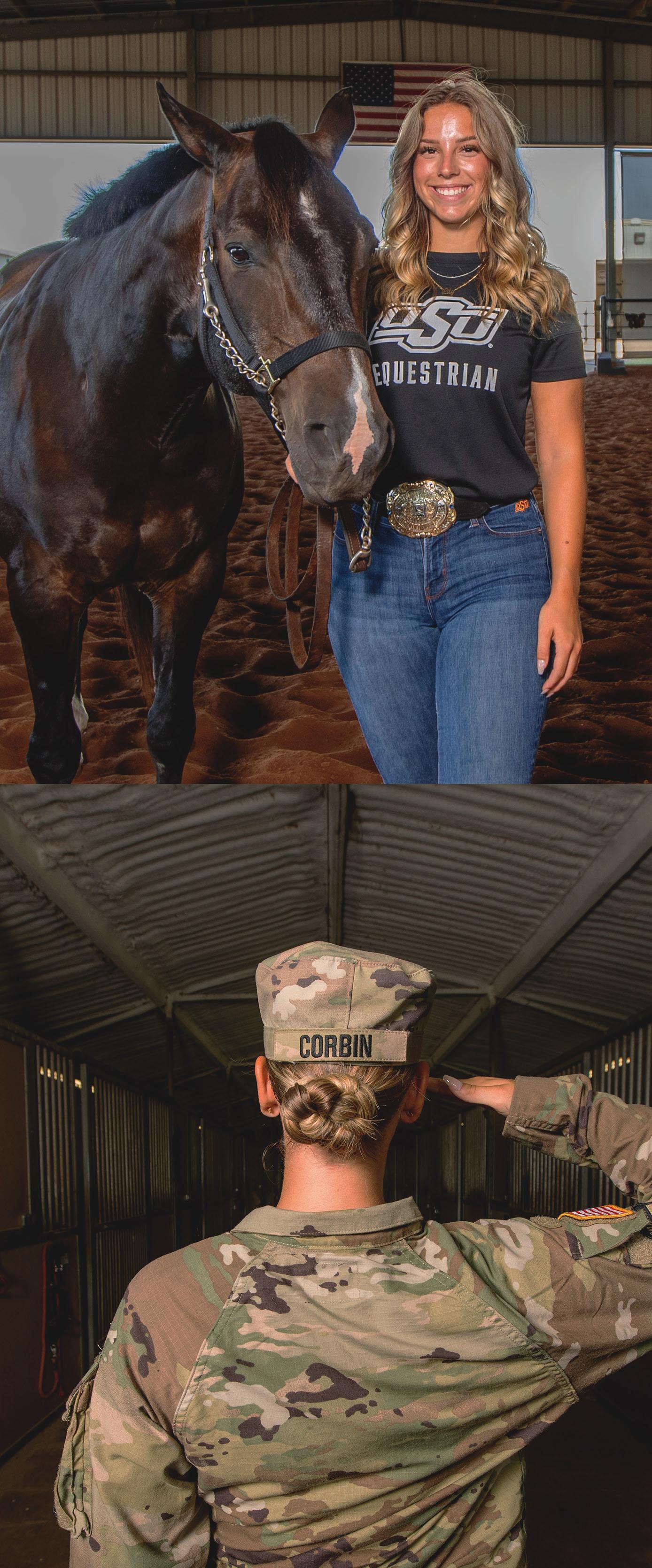
When Victoria would take Lily to her lessons, there was a gate that had to be opened for the car, then closed. Lily would get out to take care of the gate, and by the time her mom pulled through and parked at the barn, Lily would be running toward her.
“Seeing her run and the smile on her face running towards me, towards the barn,” Victoria said, “it was that way every single time we did a lesson.
“It’s her happy space.”
Lily loved riding, even when it was di cult. When she started, she rode English style, which meant she rode English horses. Many of the breeds used are big.
Gigantic, Lily remembers them being.
Her first horse was an Oldenburg that stood 17.1 hands tall, a measurement for horses from the ground to the withers, the ridge between a horse’s shoulder blades just behind the neck. A measure of 17.1 hands is roughly 68 or 70 inches from the ground to the withers, tall enough for a rider to be able to look down on the heads of riders on most other breeds.
Lily was aware of that horse’s size constantly. Even walking with him, a skill that would be used in competition, was a struggle.
“We’re going too fast,” she would say.
“It’s just walking,” her trainer would say. “You’re really OK.”
“I’m not OK.”
But nothing kept Lily from riding. Not the size of her horse. Not the fear she sometimes felt when she climbed into the saddle and realized how high she was o the ground. That’s because she enjoyed way more things about it than she feared.
Still, her passion went to a di erent level after she attended an American Quarter Horse Association show in Oklahoma City with her mom. It was the first time Lily, then 7 or 8 years old, had seen Western-style riding.
Or more succinctly, the first time she’d seen the Western-style outfits
“They were all wearing these sparkly jackets with cowboy hats,” she said, her smile wide, her eyes dancing. “I was like, ‘That is it. That’s what I want to do.’”
She laughed.
“So I switched.”
Even though she was initially enamored by the bling, she quickly realized the Western style fit her better. She got to ride smaller horses, Quarter Horses mostly, and being younger, she was physically able to handle the horses better and grasp the skills quicker.
Plus, Western-style riding was more about the show, the performance.
“That’s what I like to do,” Corbin said.
And the more she rode, the more she relished going into the arena and competing. Sure, she enjoyed practicing, being in the barn and caring for the horses, but the competitor in her loved nothing more than working to be the best.
Competing was her favorite.
“I love that it’s just me and my horse,” she said. “There’s no one else I can blame. If I mess up, it’s on me. If I win, it’s also because of me and my horse.
“The waiting in the arena, standing in the center line while they’re calling out placings at the very end of the class and you’re the last one standing in the arena, that’s the feeling that I am always chasing.”
And over the years, Corbin had that feeling several times. She won enough that by the time she was in high school, she was thinking about riding in college. Still, she knew she’d have to trumpet herself because even though she’d been successful, she’d never won a world title. Do that in the equestrian world, and the college programs call on you.
She didn’t assume coaches would be seeking her out.
She sent résumés and videos to nearly every college program in the country, and several wanted her to visit, including Georgia and Texas A&M, which have both won National Collegiate Equestrian Association (NCEA) championships in the past decade.
But all along, Corbin had a top option.
“OSU had always been on the top of my list,” she said. “I live in Oklahoma. I gotta be loyal and true.”
Still, Corbin had no way of knowing if the Cowgirls, also national champs in recent years, would want her.
Lily Corbin attended a riding camp at OSU the summer before her senior year of high school.
She got to ride several of the team’s horses and be around the coaches, though she had known Cowgirl head coach Larry Sanchez for a decade. He often judges shows and had seen Corbin ride many times over the years.
Still, when Corbin left the camp, she didn't expect OSU would o er a scholarship.
“Not even a little bit,” she said.
But a couple of days later — Corbin just happened to be back in Stillwater for a cheer camp with the Jones High School cheer team — she got a phone call from Laura Brainard. Brainard coaches OSU’s Western riders.
“Do you have a minute?” Corbin remembers Brainard asking.
“Actually, not right now,” Corbin said. “Can I call you in a little bit?”
Corbin laughs now, not believing that she put o Brainard.
When Corbin called back later, the coach had news.
OSU wanted Corbin.
She broke down, crying tears of joy and disbelief. The equestrian program wanted her to be a Cowgirl. It was like a dream. A wonderful, unexpected dream.
Lily called her parents, and her dad answered. She asked if her mom was around, and when he said that she was sleeping after working a night shift, Lily asked him to wake her up.
That set o alarm bells for both Todd and Victoria.
“He wakes me up … and I’m thinking, ‘Oh, my gosh, what’s wrong with Lily?’” Victoria said.
Once everyone was on the phone, Lily didn’t exactly assuage her parents’ fears. She was crying so hysterically that they could barely understand her.
“What happened?” they asked.
“It’s really OK,” she said through sobs. “OSU just o ered me.”
That prompted tears to flow on the other end of the phone, too.
“I really did think, deep down, she wanted to be a Cowgirl,” Todd said. “But … they weren’t as aggressive as some of the other schools. So it just caught us completely o guard.”
Lily didn’t commit to OSU right away; her parents encouraged her to wait a couple of days just to make sure it was what she wanted to do.
She followed their advice, but she only felt more sure as time passed.
“I already knew that I was gonna go there,” she said.
“Going to OSU, regardless of being on the team or not, I’d be set up for success. So when they o ered me, I was like, ‘This is perfect. This is exactly what I need.’ So it was a no-brainer when I accepted it.”
A few months later, she had another o er that wasn’t so clear-cut.
The summer before Lily’s senior year of high school, her twin brother, Jack, began the process of applying for a national ROTC scholarship.
Their dad thought she should apply, too.
“Just to see,” he said.
She agreed to apply, but she felt pretty certain nothing would come of it. After all, she’d seen all the things that her brother had been doing that would make his application stand out.
“My résumé is cheerleading for four years,” Lily thought of her only extracurricular at Jones.
Still, she sent o the application and even completed a mandatory physical test. But then, she put the whole thing out of her mind — because she just didn’t see any way she’d get recognized.
But in March, only a couple of months before high school graduation, she received a letter.
“You been awarded a three-year national scholarship,” it read. Her reaction?
“I have a meltdown,” she said. “I am crying — ‘I don’t want to do this.’”
Corbin had always shunned the notion of military service because she feared the worst outcomes of armed conflict and war. Injury. Pain. Death.
“I don’t want to die,” she thought. She was set on not accepting the scholarship.
But then, her dad reminded her of a few things. The national ROTC scholarship wouldn’t kick in until her second year at OSU. She could take the beginning military science class without needing to sign a contract with the Army or make any long-term commitments. That would allow her to take military service for a test drive.
If she liked it, she could sign up for more.
If not, she could walk away.
Turns out, she didn’t like it.
“I loved it,” she said.
ROTC at OSU felt familiar to Corbin.
“I think it reminded me a lot of home,” she said.
The structure was similar to what her parents demanded of Lily and her brothers — Victoria and Todd preached respect and modeled organization, keeping color-coordinated calendars to track all of the kids’ activities — but so was being a female in a male-dominated group. It’s what she’d grown up around, her dad being a stay-at-home parent and her siblings all being boys.
Sure, the male cadets sometimes made her roll her eyes, but they were supportive, too.
“These guys will push you to your limits,” Corbin said, “but they’re gonna get you there.”
Never was that more evident than the first time she attempted the Army Combat Fitness Test, or ACFT.
It wasn’t.
About halfway through the battery of tests came the sprint-drag-carry.
“Which is arguably the worst part of the whole thing,” Corbin said. “You have to sprint 25 yards down, back. You have to drag this 90-pound weight down, back. You have to carry these kettlebells down, back. Shu e down, back. Sprint down, back.”
Plus, there’s a time limit.
“I mean, it’s awful,” Corbin said. “You can’t feel your legs. You’re shaking. You’re throwing up.”
But at one point, she heard an upperclassman holler at her.
“Come on, Corbin!” he shouted. “Give it everything you got!”
It surprised her.
“I was shocked that anyone knew my name,” she said.
It pushed her to dig down and keep going, and before she knew it, it felt like all the other cadets there were cheering her on.
She had one of her best times ever on the sprintdrag-carry.
Remembering that moment still gives her chills.
“Even though it sucked and I was really regretting all my life choices in that very moment, I was like, ‘This is my family. They care about me. They want me to do well. No one’s gonna let me fail here,’” she said.
They were there for her, so Corbin decided she wanted to be there for them.
She signed her contract with the Army after the first semester of her freshman year, a semester earlier than she needed to. But she felt certain about what she wanted.
ROTC now. Army later.
But that also meant that she was a major-college athlete on the equestrian team as well as an ROTC cadet. That would be like having two nearly full-time jobs in addition to being a full-time student.
“I said, ‘You know it’s not gonna be easy,’” said Coach Sanchez. “I said, ‘As long as the ROTC understands and can be flexible on some things that we have, I will be as flexible as I can be with things that they have.’
“And she’s made it work.”
When the equestrian team’s morning conditioning conflicts with ROTC’s physical training, for instance, Sanchez is fine with Corbin doing ROTC’s workout. He knows she is likely doing something more strenuous with ROTC.
“She’s not losing anything,” he said.
Other times, ROTC has allowed equestrian to take precedence.
Last September, the equestrian team had its Orange and Black Scrimmage scheduled for a Friday night. The intrasquad meet is the first competition on the team’s calendar, so the riders spend weeks getting ready for it.
But Corbin realized ROTC had Field Training Exercises that weekend. Because of her equestrian commitment, she could’ve asked to be excused, but she figured the scrimmage was only on Friday. Maybe she couldn’t travel to FTX with the other cadets, but she could still make most of the weekend.
So, she figured out a compromise.
She was the first rider up at the scrimmage, and as soon as she finished, she ran into the barn and changed into her fatigues. Her parents then drove her to FTX south of Tulsa.
“I try to split up my time evenly,” Corbin said, “but also give 110 percent e ort to both.”
Her attitude has made it easy for the equestrian coaches and the ROTC o cers to work with her. Both believe her involvement in the other activity is beneficial.
“I knew bringing her in that we’d have limited time with her,” said Reynolds, who was himself a Division I athlete having been a wrestler and football player for Army at West Point. “We knew that NCAA sports was gonna be taking up a lot of time.
“But I see value in her having that experience and then using that as part of her shaping and building and leadership and experiences to be a great Army o cer, too.”
Sanchez said, “I always say my busiest kids are my best kids, and she’s definitely proven that to be the case.”
Lily Corbin marvels sometimes at how her outlook on the future has changed.
Two years ago, she wanted nothing to do with the military.
Now, she is excited about doing at least four years of active duty once she graduates from OSU.
While she isn’t sure what her specialty will be — the Army determines that based on numerous variables, including test scores, grade point averages and extracurriculars — her goal is aviation
Her dad had a chance to fly helicopters while he was in the Army, and while he talked about some of his experiences, a lot of what he told Lily and her brothers wasn’t exactly rosy.
“Flying is cool, right?” Todd Corbin said. “It sounds cool to everybody, but it’s serious when you’re doing it … When you’re flying a helicopter and you have four people in there and you’ve got to set that thing down right beside a fuel truck and you can’t make any mistakes, it’s scary.
“People think of Top Gun, they think of the flight suit, they think if you’re going into a bar you can pick up guys if you’re a girl … That’s a bunch of bull. I’ve tried to give her the reality of having the responsibility of flying.
“It’s not for the faint-hearted, and it’s not for the cavalier.”
So it is with riding a half-ton horse.
And being a Division I athlete and an ROTC cadet.
Lily Corbin knows a thing or two about staying focused and being responsible. She doesn’t just show up on time; she’s always at least 15 minutes early. She doesn’t just show up either; she’s engaged in anything she does.
“She’s one of our best as far as her attitude,” said Sanchez. “Her attitude never wavered. She seems to always have a smile on her face.”
Reynolds, the former head of military science, said, “What I love about Lily is that she gives everything. She’s all in on everything she does.”
Today, her focus is on equestrian and ROTC at OSU.
Eventually, she will turn all her attention to military service, the one thing she didn’t want to do as a kid that has become the next thing she can’t wait to do in her life.

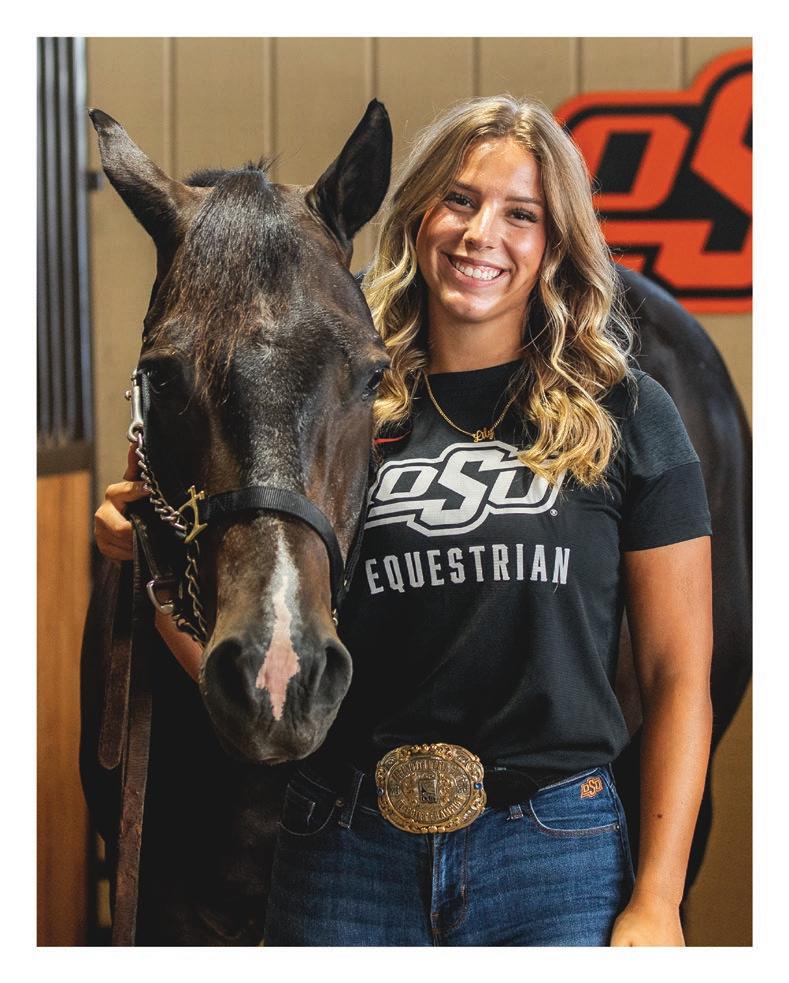

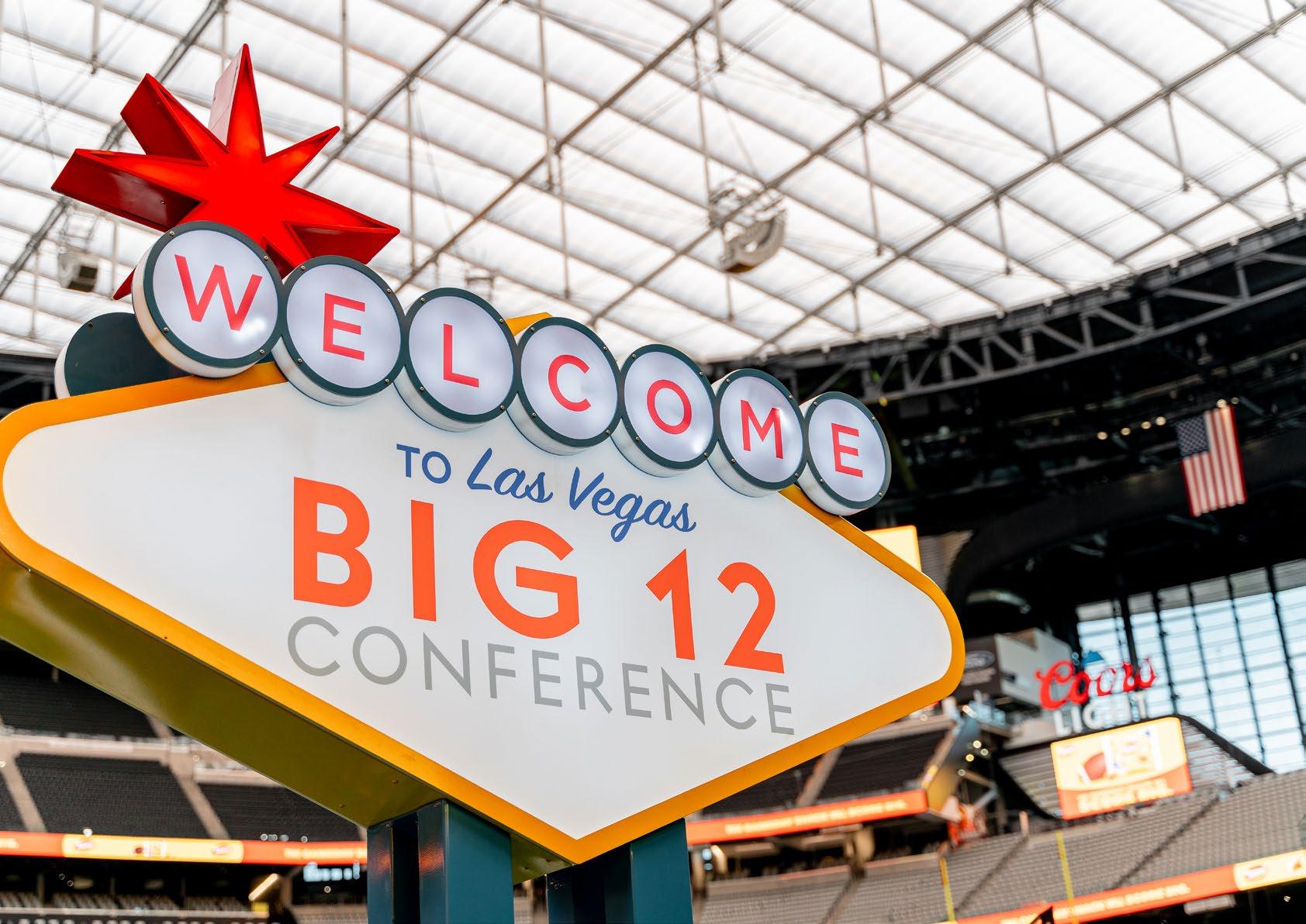
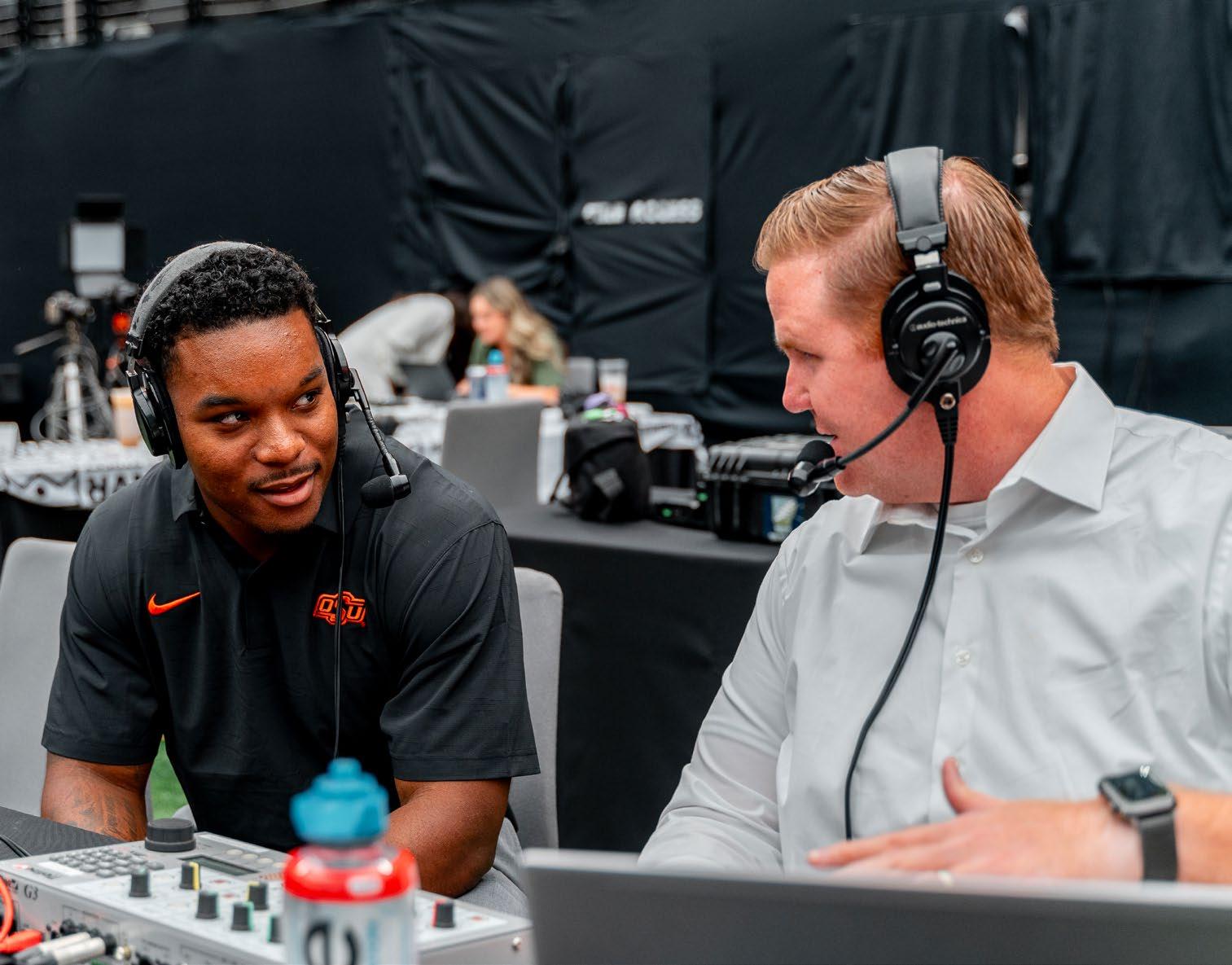



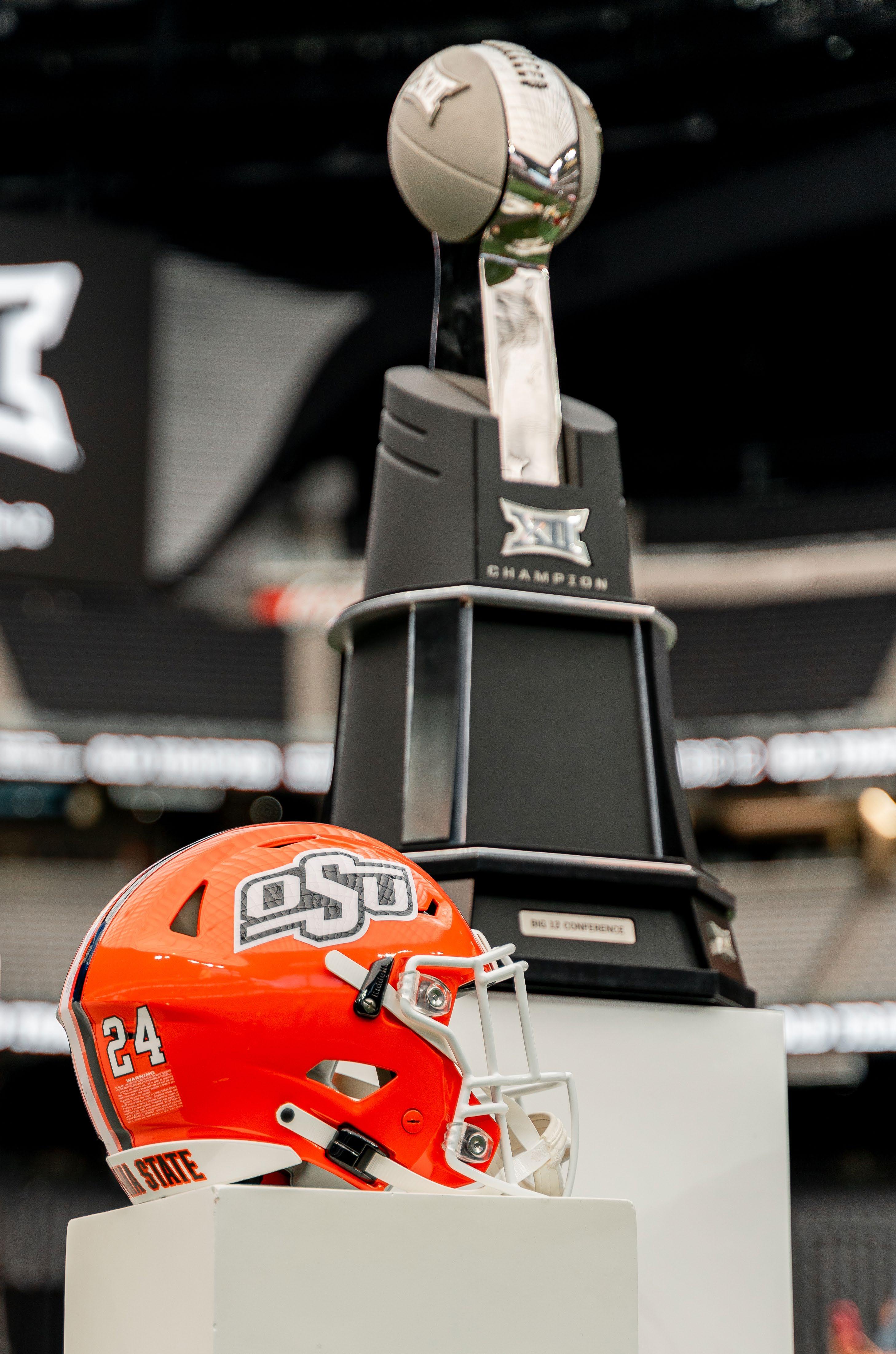
Big 12 Conference Football Media Days were held July 9-10 at Allegiant Stadium (home of the NFL's Raiders) in Las Vegas. Head coach Mike Gundy and Cowboy players Alan Bowman, Ollie Gordon II, Nick Martin and Collin Oliver met with the media ahead of the 2024 campaign. Commissioner Brett Yormark was among those mingling with the attendees, which included the four new members of the now 16-team conference.



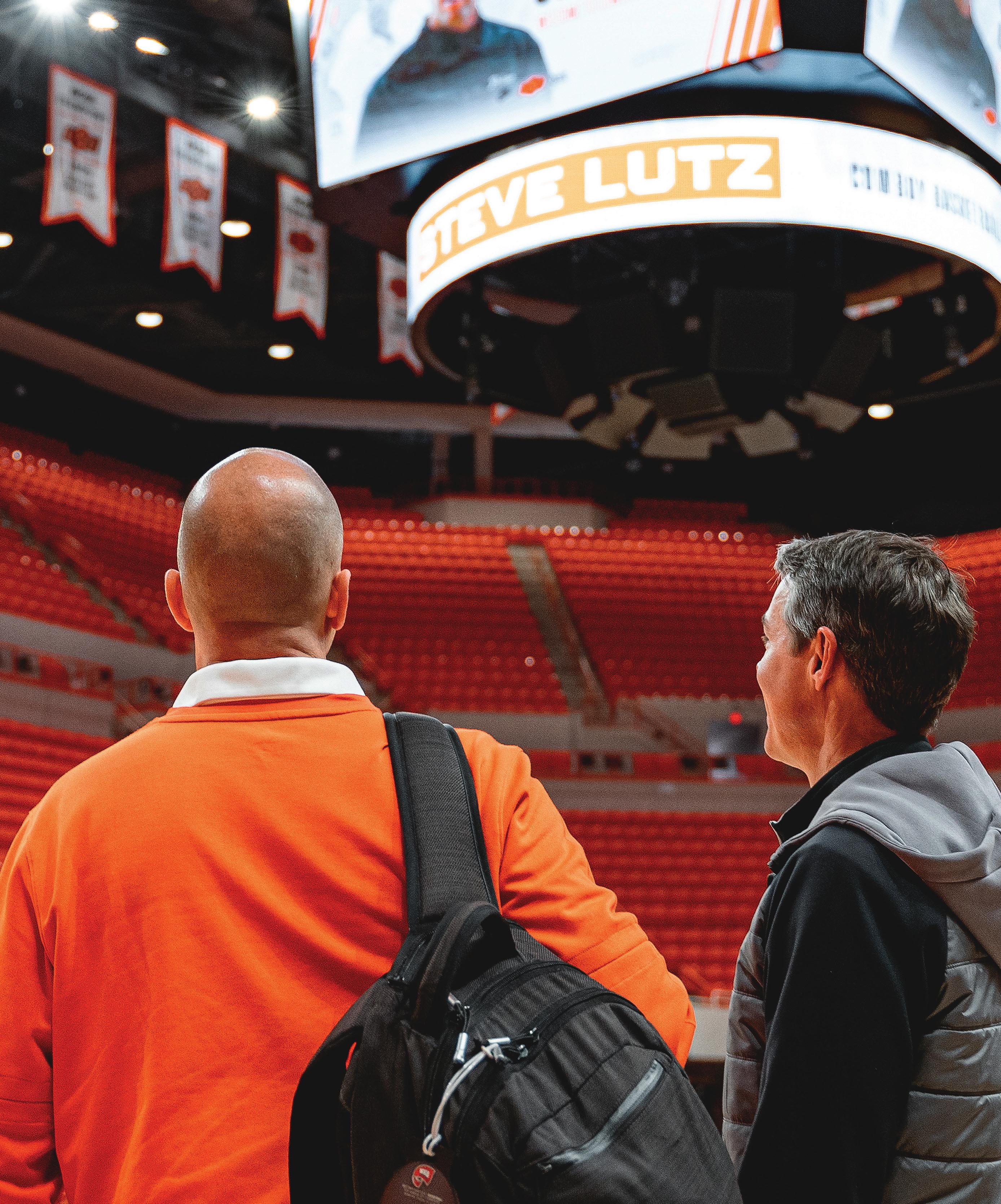
Steve Lutz was a high school freshman the first time he chose basketball.
Growing up on the east side of San Antonio, the youngest of six kids in a Catholic family, he had played every sport. Track. Baseball. Basketball. Competition was his favorite thing, so he kept doing it all.
But one spring day while playing baseball for San Antonio East Central High School, he hit a shot to left field. He was going to leg it out for at least a double, but as he rounded first, his cleat got stuck.
He was wearing interchangeable cleats — metal one day, plastic the next — that screwed in and out
“Well, like any other 15-year-old kid,” Lutz said, “I probably didn’t do it correctly.”
His cleat stuck, but his foot kept moving.
His ankle broke.
Several months later, after missing the summer AAU basketball season and falling behind his teammates, Lutz realized he didn’t want any other sport to get in the way of basketball. He was done with baseball.
Never mind that he was better at baseball. Or that his dad had played some summer pro baseball and had a heart for the sport.
“My dad was so mad at me,” Lutz said, “he didn’t talk to me for like two weeks.”
The new Oklahoma State men’s basketball coach chuckled as he sat, arm slung across the back of a couch, in his Gallagher-Iba Arena o ce talking with me one afternoon this summer.
“Baseball’s so slow, right?” Lutz said. “I was a pitcher, I was third base, I was a catcher, but what do you get on third base? You get three balls a game?”
“Maybe,” I responded.
(Something you learn quickly about Lutz is that when he asks questions, they often aren’t rhetorical.)
“It was just too slow for me,” Lutz continued. “I just got bored.”
That broken ankle caused an epiphany: Lutz didn’t want to spend any more time on something he didn’t love nearly as much as basketball.
It wouldn’t be the last time he chose the sport.
As Lutz prepares for his first season as the Cowboys head coach — and his first as a Power Four head coach — he faces a daunting task. Rebuild a once-proud program that has just one NCAA Tournament win in nine years. Retool a roster that returns only three players. Reengage a fan base that has largely deserted Gallagher-Iba Arena, leaving it more reserved than rowdy. And do it all in a conference widely regarded as college basketball’s toughest.
No pressure.
Lutz is undaunted.
“First thing is, it’s happened in the past,” he said. “The best predictor of the future is the past, right? So you’ve just got to figure out a way to emulate a little bit of what Coach (Eddie) Sutton did, right?”
“Sure,” I agree.
“And how did Coach Sutton do it?” Lutz said. “He had some really good players, but he also had some guys that were tough and would fight you and they played really good defense, and they played the right way.”
That’s how Lutz plans to do it, too, though his philosophies for how to play really good defense and really good o ense are di erent than Eddie Sutton’s. But the toughness and the teamwork that Sutton’s squads had? Those are non-negotiable for Lutz.
He wants guys who want to succeed above all else, and they’ll give the e ort it takes to get there. That, after all, is what Steve Lutz has always done.
The second time Steve Lutz chose basketball he was majoring in business at Texas Lutheran, a small private university in Seguin, just outside San Antonio.
He’d had a solid career at San Antonio East Central High School, but recruiters weren’t all that interested.
Lutz couldn’t understand why.
“I think that I’ve been overlooked, right?” he remembered with a wry smile.
He decided to show all those recruiters how wrong they’d been by going to Ranger Junior College. Instead, he quickly realized he was the one who’d been wrong.
He couldn’t keep up athletically or physically.
“I was lucky Texas Lutheran still had a scholarship,” he said.
Lutz joined the team and enrolled in the business school, thinking he’d eventually go into sales. You needed to be competitive and able to build relationships, two things he leaned into.
But after his first accounting class, his adviser called Lutz to his o ce.
“Hey, Steve, I know you worked at this pretty hard,” Lutz remembers the adviser saying.
It was true: Lutz had studied and worked and gotten tutoring.
But he only managed a C.
“HE’S
—
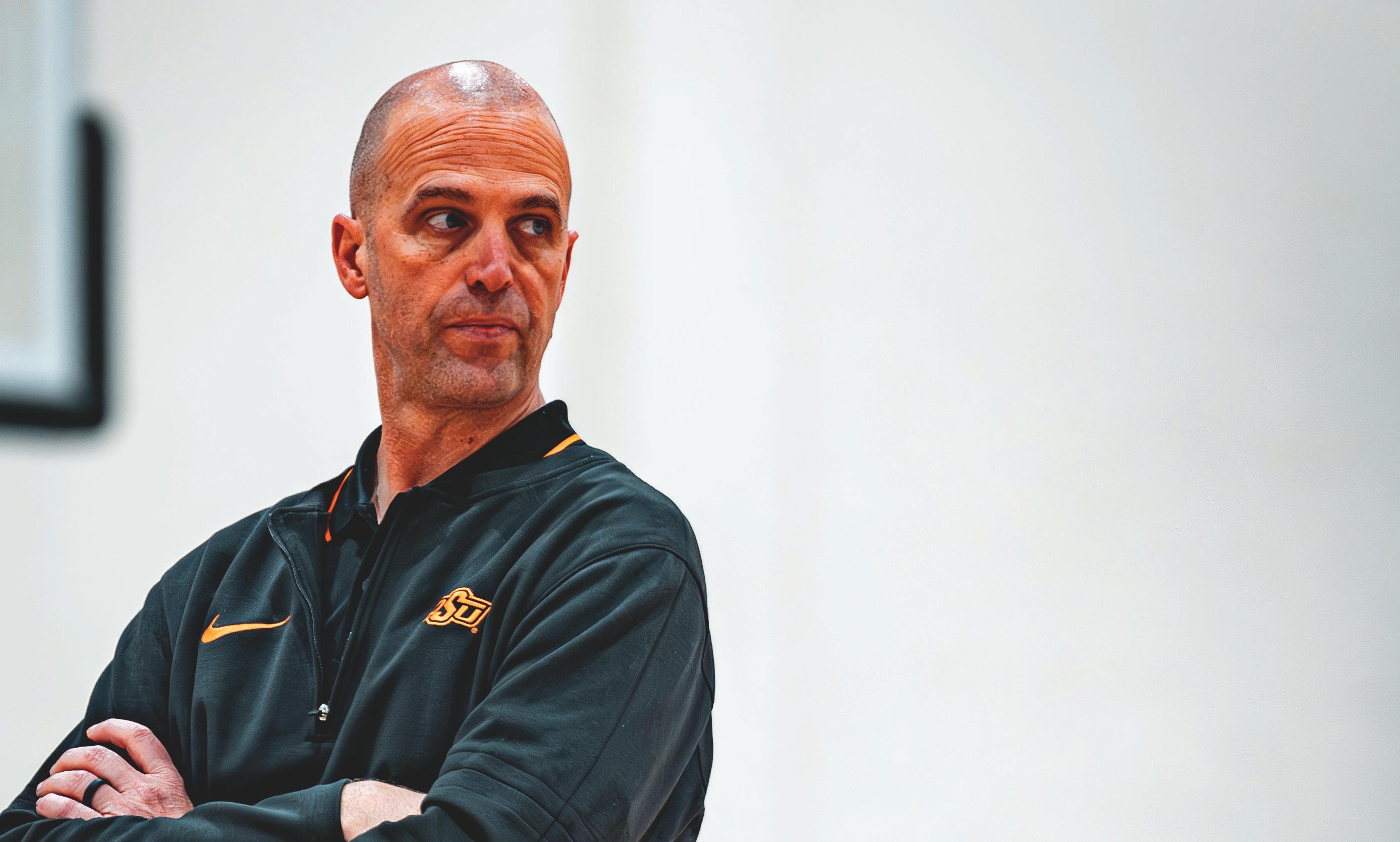
“And you understand that there’s managerial, there’s strategic …” the adviser said, rattling o a long list of more advanced accounting classes that Lutz would have to take. “There’s like five more that are twice as hard.
“Do you want to spend that much time of your college career doing this?”
Hard pass.
As Lutz started thinking about what he wanted to spend time studying in college, then doing after college, some of the same faces kept popping into his mind. His coaches at Texas Lutheran. His coaches from high school. Even his coaches from some of his Catholic Youth Organization teams.
Lutz decided he wanted to be a coach, too.
The truth is, he was already doing some of the things that a young coach might. Not that he was doing them on purpose. It was just his personality.
“When it was time to have pick-up, I made the pick-up teams,” Lutz said. “When it was time on the weekend to have open gym, I told the guys when we’re going to have open gym.
“Friday and Saturday nights when things maybe in college get awry, I made sure everybody got out of there and I kept the peace, so to speak.”
His senior year, he was a team captain.
Still, he wasn’t a standout, much less a star. He didn’t make headlines, and truthfully, those were rare anyway for Texas Lutheran. He knew he wouldn’t get his first coaching job after college because of clout or even name recognition.
So did the man who gave Lutz his first job.
“Hey, Steve,” Danny Kaspar once joked with him, “you played three years at Texas Lutheran, and when you came to apply for my grad assistant, I didn’t know who the hell you were.”
Kaspar was coaching at Incarnate Word in San Antonio, but Lutz, who had spent all but a few months of his life in the San Antonio area, was unknown to Kaspar. Worse, when Lutz reached out about that graduate assistant job, Kaspar had already filled it
Guy by the name of Chris Beard, who’s been the head coach at Texas Tech and Texas and is now at Ole Miss.
“I already got somebody,” Kaspar remembers telling Lutz, “and they only give me money for one GA spot.”
But a week or two later, Lutz returned to Kaspar’s o ce.
Lutz had talked to a few other schools in and around San Antonio — he planned to live at home while he worked as a GA and took classes for his master’s degree — but he kept coming back to the feeling he got from Kaspar about how he ran his program.
“It was business,” Lutz said.
He knew working for other programs and coaches might be more fun than working for Kaspar at Incarnate Word.
“Man, you had a lot of fun in college,” he thought to himself. “You either need to figure this out or not.”
Lutz had a proposal for Kaspar.
“Coach, what if I just volunteer?” Lutz said.
“I can let you do that,” Kaspar told him. “But Steve, understand that if you’re going to do that, you’re going to be like a walk-on. A walk-on gets no scholarship money, but has to do everything the scholarship guys do.
“If you’re going to take this job, I don’t want to hear, ‘Well, Coach, I came in late and you’re on me, but I don’t get any money.’ I’m not going to hear that.”
The first day Lutz came to work, he didn’t call recruits or watch video or help with practice. Instead, he and Beard were given paint and brushes and told to go paint the locker room.
“Both Beard and Lutz looked at me like I’m crazy,” Kaspar said.
But they did it.
Beard, of course, was getting paid. Lutz wasn’t.
But he just kept working.
“There’s a lot of young men that think they want to coach college,” Kaspar said. “They don’t understand the time, the work, the e ort that goes into it.”
Kaspar could see that Lutz understood. He proved it by always showing up, always working hard.
After a month, Kaspar rewarded Lutz with a $200 monthly stipend, though Lutz remembers it being a $2,000 yearly stipend with a slightly di erent monthly paycheck.
“$186.13,” he said, rattling o the exact number nearly 30 years later.
The pay was minimal. Glitz? Glamour? Nonexistent. Lutz loved it.
As much as Steve Lutz embraced being a volunteerturned-grad-assistant at Incarnate Word, he knew he couldn’t stay in the position forever.
Not if he ever wanted to move out of his parents’ house. And slowly but surely, Lutz started moving up.
Beard left for Abilene Christian the next year, and Lutz took over the vacated grad assistant spot.
Then the next year, Kaspar’s lead assistant coach moved to Texas A&M-Kingsville, and Lutz became a full assistant.
Salary: $20,000.
“I’m lovin’ life,” Lutz said. He even had enough money to buy a car, a Ford Explorer.
“And the payments are $406.84 a month,” he said with a smile.
While the salary increase was no small thing, Lutz knew he needed to continue to climb to expand his knowledge. Kaspar had taught him all about planning and strategy, but what about recruiting and competing and budgeting and all the other things that had to be done at the highest levels of college basketball?
Lutz decided to move to Garden City Community College in Kansas. At the junior college level, coaches are always recruiting, and players are always being recruited.
“So I expanded my network 10 times in 10 months,” Lutz said.
Jeremy Cox, who had met Lutz a few years earlier when they were assistants in the San Antonio area, wanted Lutz on his sta when he took over as head coach at Garden City. That’s because Cox knew he’d never be able to find anyone in college coaching who worked harder than Lutz.
“He’s a relentless, ferocious worker,” Cox said.
Cox rewinds to a night Garden City played a game three hours away in Co eyville. The team got back from Co eyville late, but early the next morning, Lutz was on his way to North Carolina.
“Drove out there that day,” Cox recalled, “and two days later, he was back in Garden City with a kid.”
A recruit, actually. Because Garden City’s recruiting budget was small, flying in recruits wasn’t an option. Someone often had to go get them, and Lutz never shied away from the duty.
The same went for recruiting.
Cox remembers going after a recruit from Manhattan, Kansas, about four hours from Garden City. Whenever he played a game, Lutz would be there to watch.
Often the recruit’s games were on Tuesdays and Fridays.
“He’d be back that night or early the next morning,” Cox said of Lutz.
That was because Garden City played on Wednesdays and Saturdays.
“The entire season, he never rented a hotel room, never stayed in a hotel room, just lived in a car, worked in a car, didn’t have a cell phone, stopped on the side of the road and talked on the pay phone and kept moving and never complained,” Cox said. “That was just the way it was, and that’s just the way he has been his entire career.” Today Cox has a new title, assistant coach at Oklahoma State.
Lutz kept grinding as an assistant for the next two decades. He went to Stephen F. Austin for six seasons — reuniting with Kaspar — then SMU for four, Creighton for seven and Purdue for four.
Lutz learned lots at all those stops, but more than anything, he refined his basketball vision.
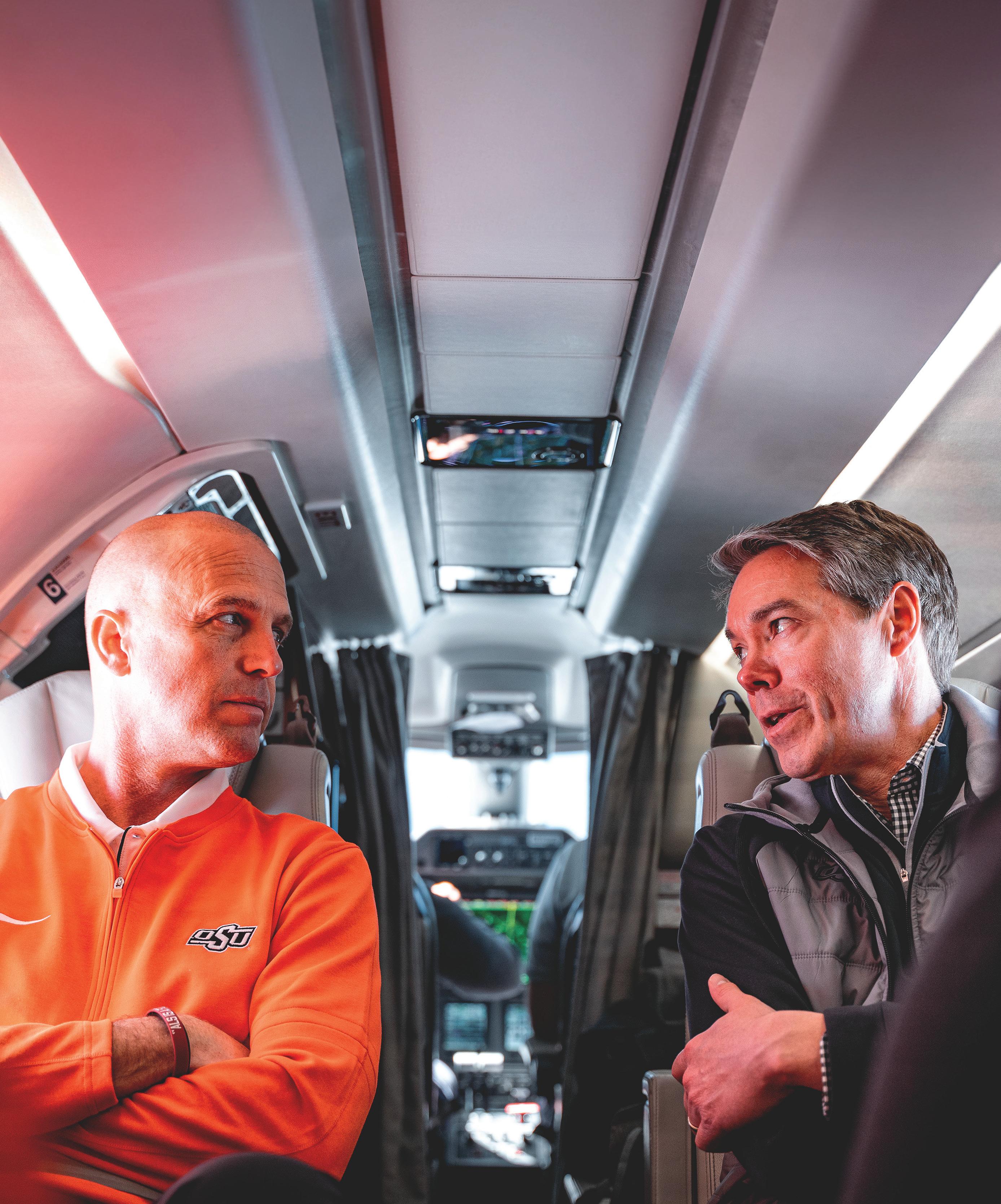
In other words: “When you get to choose how you’re going to play,” Lutz said, “that’s my druthers.”
And his druthers are aggressive defense and up-tempo o ense. His defensive philosophy will be familiar to Cowboy fans with heartstrings attached to Henry Iba and Eddie Sutton, but Lutz’s o ense will be something di erent.
Lutz’s first three seasons as a head coach — two at Texas A&M-Corpus Christi, one at Western Kentucky — those three teams averaged 78.0 points.
Two of them scored over 80 points a game.
In the past 20 years, OSU has had only four teams average more than 78.0 points a game. And the Cowboys had way more teams during that stretch average in the ’60s (nine) than in the ’80s (two).
Lutz’s style preference has nothing to do with his personality (baseball was too slow, remember?) or even his background. His high school coach, Stan Bonewitz, loved up-tempo o ense and averaged over 100 points a game many seasons. Creighton under Greg McDermott plays fast, too.
Rather, Lutz believes in playing fast because of the math.
“If you can get a 75-possession game versus a 63possession game, you’ve got 12 more opportunities to survive mistakes and 12 more opportunities to make a three,” he said. “You’re just giving yourself more opportunity.”
Maybe better opportunities, too.
“When you really look at basketball, your best opportunity to score is before the defense gets set, right?” Lutz said. “And let’s just be honest: in this league, there’s some really, really good coaches. So if you’re going to play in a chess match with them in the halfcourt, and you don’t have better talent or equal talent, you’re gonna have a hard time. So the more you can play in transition, the more you can play before things get set, you should have a better success rate.
“To me, that’s kind of the premise of it all.”
Steve Lutz has always chosen basketball even though it hasn’t always been easy.
Sure, his love for the game and his passion for coaching have never waned, but still, there have been di culties. Last year, for example, Lutz and his wife, Shannon, decided he would move to Western Kentucky when he got the job there while she and their two youngest kids stayed behind in Corpus Christi.
Their middle child, daughter McKenna, was soon to be a senior in high school, and they didn’t want to uproot her before that year, which would’ve been her third high school in four years.
Lutz believes it was absolutely the right decision, but man, was it di cult.
Lutz’s dream job, after all, is stay-at-home dad.
“Heck, yeah,” he said. “I love to tell my wife that all the time: ‘You can make all the money in the world; I’ll stay at home, have dinner every night, get the yard mowed, go pick up the kids.’
“I would have been fine with it.”
He still finds ways to be there as much as possible when his kids have big events, games or assemblies. He involves them as much as he can, too; oldest daughter, Caroline, used to pick out his ties before games, for instance, while son, Jackson, was there for a bunch of morning workouts this last summer.
It isn’t perfect.
“He’s made a lot of sacrifices just like anyone does in their career,” Lutz’s older brother, Mike, said.
“You have that dream and you just pursue it.”
Steve Lutz did just that. He chose basketball, then worked to make it the right choice.

Third baseman Aidan Meola hoists the Phillips 66 Big 12 Baseball trophy aloft as Oklahoma State celebrates the tournament championship at Globe Life Field in Arlington, Texas. The Cowboys captured the 2024 conference crown with a 9-3 win over Oklahoma. Carson Benge (an eventual first round draft pick by the Mets) was named the Most Outstanding Player of the tournament. The victory gave OSU its 35th conference championship in program history, with six of those coming in the Big 12. OSU finished 4-1 against the Sooners this past season, and head coach Josh Holliday owns a career 37-14 record against the Pokes' Bedlam rival.


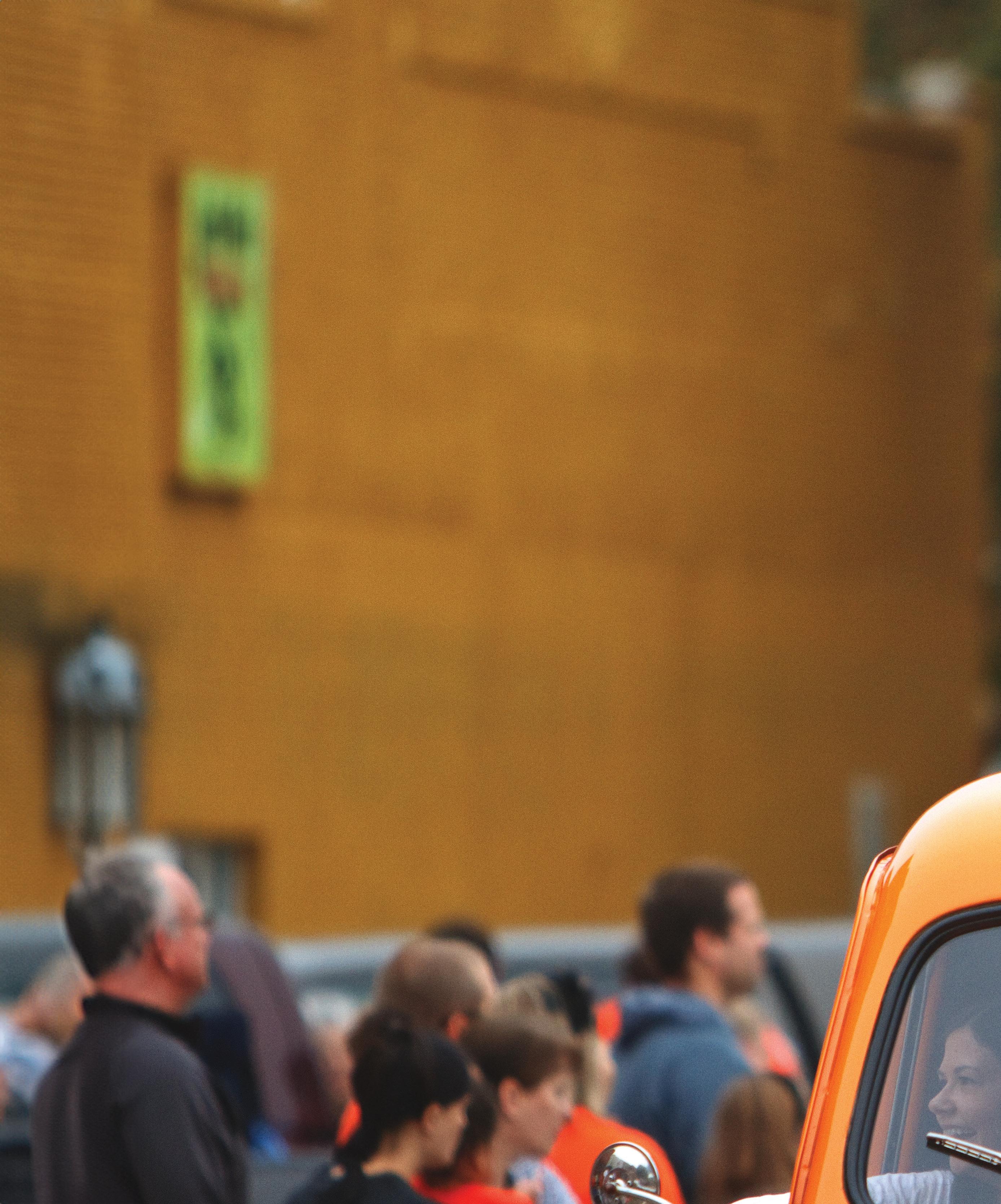


STORY BY
PHOTOS BY CLAY BILLMAN
BRUCE WATERFIELD
GARY LAWSON AND ANTHONY FAMILY
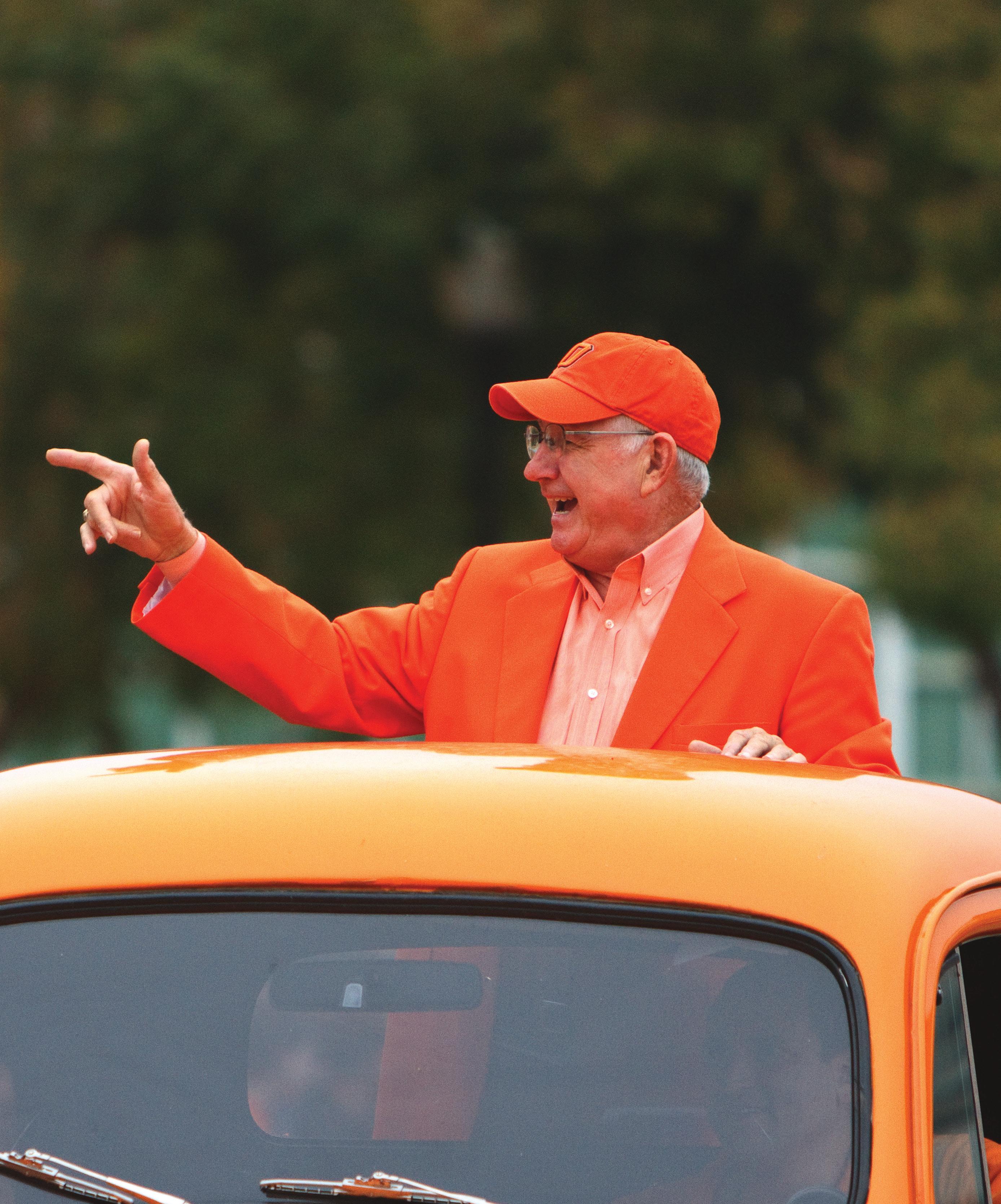
Everybody knows Calvin Anthony. (At least everyone who’s spent time in Stillwater over the last half-century does.)
- Perhaps the long-time pharmacist filled their prescription. If not, surely they recognize the familiar voice from decades of Tiger Drug commercials on local radio.
- Maybe he was their elected o cial. The soft-spoken statesman served in the Oklahoma House of Representatives and had a stint as Stillwater’s mayor in the 1980s.
- As a member of the Oklahoma A&M Board of Regents for two terms, Calvin may have overseen their time on campus as an Oklahoma State student, faculty or sta member.
- It’s likely they encountered Calvin at any number of OSU athletic events, home and away. Whether it’s the welcoming smiles tailgating outside Boone Pickens Stadium, encouragement coming from the box seats at O’Brate, or cheering courtside at Gallagher-Iba Arena, Calvin and his wife Linda rarely miss a game.
- Surely, they’ve seen the head-turning, orange ’48 Ford pickup in the Homecoming parade or tooling around town.
Ellen Ayres, OSU’s associate AD for annual giving (a lifelong Stillwater resident herself), knows Calvin in all of the above roles.
“As a pharmacist, as a Regent — my boss — as an OSU donor and ticket holder … Calvin is just a constant,” she says. “He and Linda are always here. Always smiling. Always supportive.
“There’s probably no ballgame, tailgate, postseason, away game or event that you wouldn’t see Calvin and Linda Anthony there. Every trip that I’ve been on, they were there. They’re always supporting, whether it’s through season ticket purchases or generous gifts that they have given. They always buy a table for the POSSE Auction. They’re everywhere.”
As Top 150 all-time donors to OSU Athletics, the Anthonys have left an indelible mark on the program, not to mention to the entire university.
Celebrating a lifetime of service to the state, Anthony was inducted into the Oklahoma Hall of Fame in 2020. In February, he joined the Class of 2024 in the OSU Hall of Fame, presented by the OSU Alumni Association.
“Calvin and Linda are genuine, kind and incredibly passionate when it comes to Oklahoma State University,” Ayres says. “They are the definition of Loyal and True.
“I’ve known Calvin my entire life as the pharmacist in town, part of the community,” she adds. “Growing up in a place like Stillwater, you had the grocer, the insurance agent, the barber, the pharmacist … For me, it was Dwight McCormick, Kent Houck, (Whisperin’) Richard Danel and Calvin Anthony. They were all very successful businessmen, but also just so incredibly kind.”
Calvin grew up about 20 miles south of Stillwater in Carney, “where the pavement ends and the West begins,” he likes to say.
The local population around that time was 225.
“There were 12 in my high school graduating class in 1963. When I was speaking publicly a lot, to pharmacists or other groups, I’d tell them I graduated in the top six!”
Truth be told, Calvin was valedictorian. School was important to the Anthony family, he says, despite his parents’ lack of formal education.
“They were good parents, but they hadn’t gone to college or anything,” Calvin explains. “My dad was from a family of 14 children, so they all went to work when they got old enough. My mother wasn’t educated but was very smart. They were merchants and owned a little country store — Anthony Grocery, Dry Goods & Feed. It was a precursor to Walmart, one of those old general stores that sold a little of everything.
“It was kind of the heartbeat of the little town because it was basically the only store.”
Calvin and his four siblings — brother Bobby and sisters Judy, Patty and Sherry — all helped out around the store.
When the boys weren’t in school or sacking groceries, it was all about baseball
“My brother and I would play catch on Main Street when we had time o . We grew up playing ball.”
Calvin was on the diamond constantly — from Pee Wee and Little League on up to high school at Carney, which had fall and spring baseball. In the summer, he joined American Legion teams from Chandler and Stillwater, competing against the likes of Johnny Bench and Bobby Mercer
“I was a pretty good ballplayer,” Calvin says matter-of-factly. “I had a good fastball. I struck out 20 batters in the state championship game back in 1962 and made all-state when it was just one team. I was the winning pitcher in the 1963 all-state game. My catcher was Freddie Moulder from Guthrie.” (A two-sport star, Moulder became the first Black player in Oklahoma to garner all-state honors in basketball and baseball, going on to play both at OSU.)
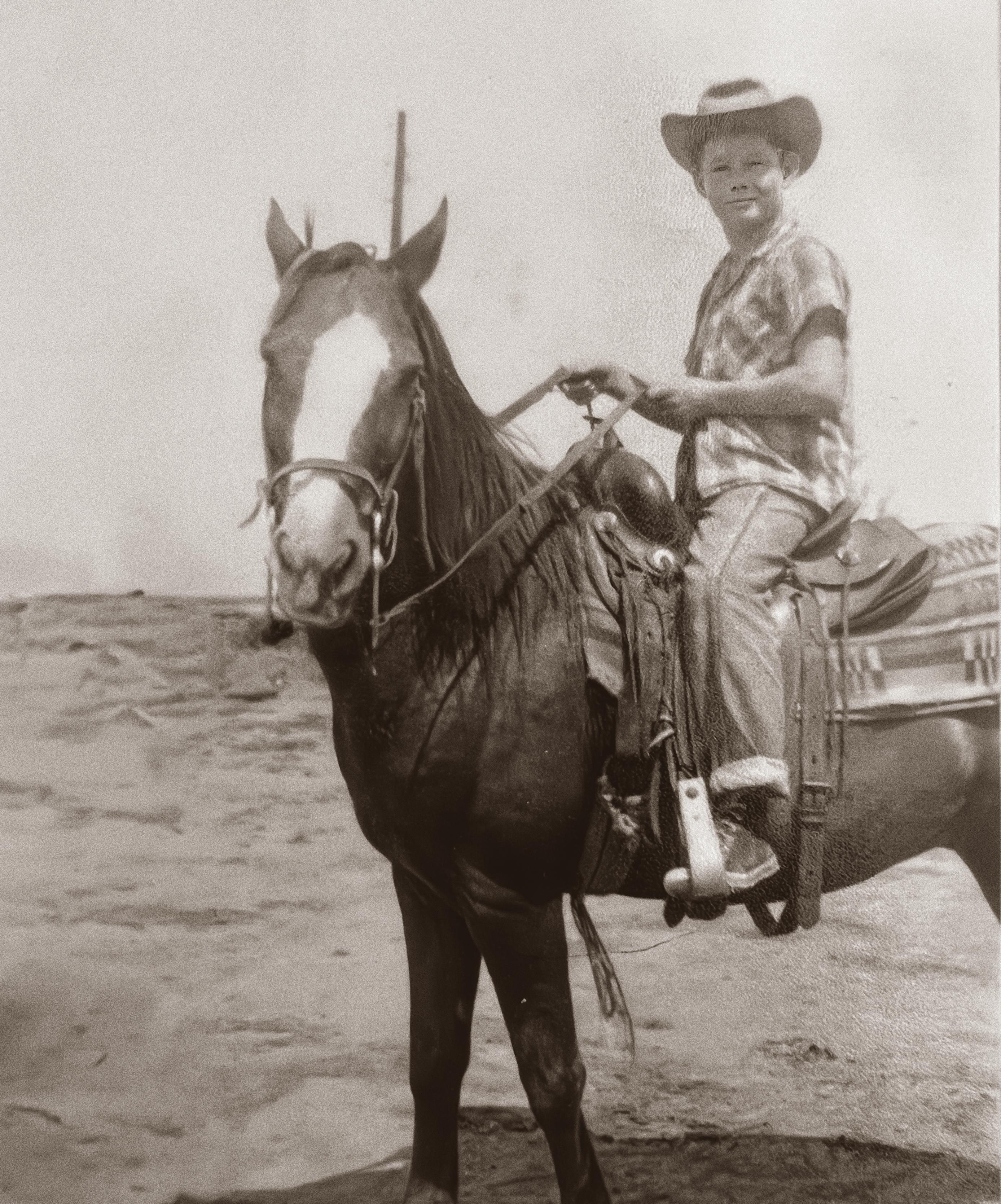
Calvin caught the eye of a Phillies scout but opted for Oklahoma State instead. He was recruited by coach Toby Greene, who had led the Cowboys to the 1959 College World Series title
“I came to OSU in the fall of ’63. I played third base and pitched. My freshman year was Toby’s last year.”
Greene, who retired prior to the 1965 season, was replaced by Chet Bryan
“Chet was a pretty gru old guy,” Calvin laughs. “Chet and Toby were di erent in so many ways, but they were both very successful coaches.”
After two years as a student-athlete in Stillwater, Calvin decided to focus on academic pursuits — down south.
“I was working as a soda jerk at Tiger Drug for one dollar an hour, and early in my second year of college I decided I wanted to go to pharmacy school. Norman was a little closer than Weatherford (Southwestern Oklahoma State), so I applied and got accepted at OU.”
Coach Bryan didn’t take the transfer news very well at first, Calvin says.
“Chet was ultimately gracious and told me, ‘If you want to continue playing baseball, I’ll see if I can get some help for you.’ But I had made up my mind that I was going to focus on my school work.
“Even after I enrolled at the OU College of Pharmacy, I continued to work weekends at Tiger Drug. I came home every weekend, worked at the drugstore and lo and behold, who would have thought, a few years later I’d end up owning the store.”
At the time, Calvin explains, pharmacy school was a three-year program, tacked on to two years of pre-pharmacy coursework. He earned his Doctor of Pharmacy degree in 1968.
“I don’t publicize it a lot, but I’m an OU grad,” Calvin says sheepishly. “But I bleed orange, and I think I’ve proven to be a good Cowboy.”
That first year out of school was an eventful one for Calvin, in many ways.
Calvin had been dating Linda Thomas, who coincidentally hails from Lincoln County as well.
“I grew up on a farm about five miles east of Carney. I went to a one-room country school for eight years, and then I went to high school in Chandler.”
“We got married in 1968,” Linda adds. “I was a student at OSU at the time. Calvin got his first job as a pharmacist back in Stillwater.”
“I went to work at the Humpty Dumpty grocery store at Sixth and Washington (later Consumers IGA and now Sprouts),” Calvin recalls. “They needed a pharmacist. I knew I wanted to own my own pharmacy someday, but I went to work there while Linda was in school. It was a good job.
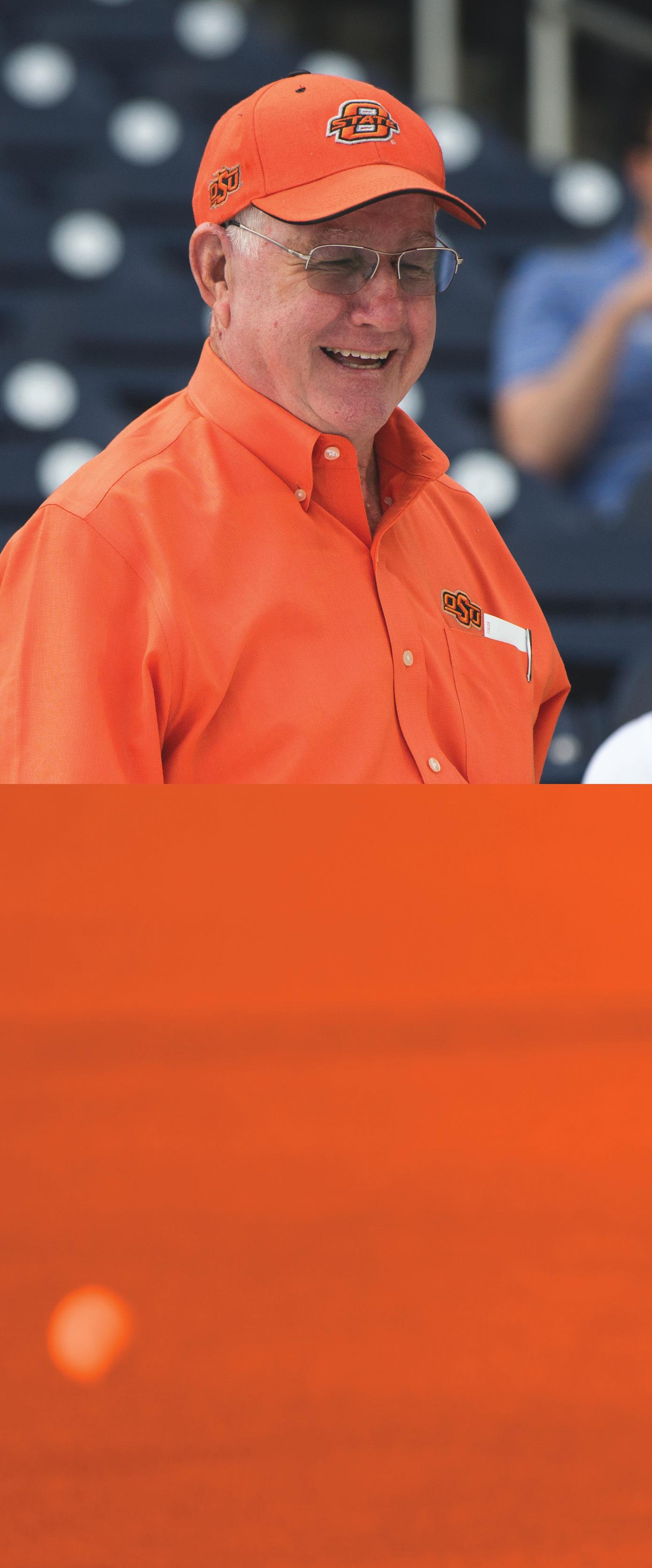
“Our community, and all the people associated with this university, have been really good to us. It’s a special community.” — CALVIN ANTHONY

“I started looking at businesses because of my background — my parents were in retail, and I knew a little bit more about the business side than most pharmacists normally would, beyond the medicines and the technical part of your education. But the business part of it was helpful to me having grown up in that country store.
“About six months after we got married, I got a call from Elmer Phillips, owner of Tiger Drug, and he called me and asked if I wanted to buy the store.”
Having worked there during school, Calvin knew it was an opportunity too good to pass up. The drug store had been a fixture in the community since 1908 — the early days of OAMC, hence the name Tiger Drug.
“I was 23, and Linda was 19,” he recalls. “Looking back, it seemed like so much money. I thought, ‘I’ll never get out of debt.’ But Mr. Phillips was willing to help finance it, and we had to come up with a down payment. Fortunately, I got through school with scholarships and help from my parents, so we didn’t have any college debt, but we didn’t have any money saved at that point.
“I had a couple of doctor friends who I’d gotten to know, and they encouraged me to take over the business … so we made a deal and bought Tiger Drug.
“We took charge in 1969, one year out of pharmacy school,” he says. “My brother Bobby was in medical school at the time, and I had thoughts about going to med school as well, but when we got the opportunity to buy Tiger, I thought it was the best thing that could happen for us.”
Around that same time, the newlyweds were shopping for home appliances downtown.
“Murphy’s hardware was on Main Street. We were down there looking at refrigerators, and RCA Victor Whirlpool was sponsoring a statewide contest. The guy who was running that store talked me into entering.”
About six months later, the prize drawing was held on Oklahoma City’s Channel 4 (then WKY-TV).
“Lo and behold, they drew my name out,” he says. “My phone started ringing, people calling saying ‘Congratulations!’ — at first, I didn’t remember even entering the contest.”
The grand prize was a new 1970 Volkswagen Beetle and a two-week European vacation, giving the Anthonys a honeymoon they’d never forget.
“Linda had never been on an airplane, and I had only flown once. It was quite a trip. We picked up the Volkswagen at a dealership in Frankfurt (Germany). They took some pictures, and then we drove it all over central Europe. Two weeks in this little Volkswagen. Then we drove back to the
airport — they told us where to park and to leave the keys in it — and then they paid to ship it to the US.”
The prize package also included trip planning, but Linda had a better idea for their itinerary.
“They would have made our reservations for us, or we could take $500 and make our own,” she recalls. “So we took the $500 and used a little travel book, ‘Europe on 5 Dollars a Day,’ to research where to go and places to stay. We bought lots of souvenirs and brought home 20 of their dollars.”
“We’ve been a lot of places all over the world since, but it was really a trip of a lifetime.”
The couple shares that story to convey their gratitude for the life they’ve lived.
“It sort of was a foretelling of how fortunate our lives have played out,” Calvin says. “We’ve been so blessed — from living in Stillwater, friendships and opportunities, being able to raise our children here, success in our businesses — I can think of so many things.
“Our community, and all the people associated with this university, have been really good to us. It’s a special community.”
As Calvin stood behind the counter dispensing pills and advice, Linda was right alongside, helping run the family business.
“I was an elementary education major, but when we got the store, I majored in Tiger Drug,” Linda says. “I worked there as a clerk, and I kept the books and did the sales tax and that kind of stu … We paid the store o in four years, as we were putting everything back into it.”
When children came along, Linda was active in their school activities.
“We raised three children (Rebecca, Luke and Drew) in Stillwater, and the two oldest went through all the public schools here. I was a home room mother every year, and I was PTA president. Then they all went to OSU. We couldn’t have picked a more wonderful place to live and raise our family.”
For the better part of six decades, the Anthonys grew the business, acquiring or opening new drugstores in Stillwater, along with the Perkins, Yale and Perry. They also opened a medical supply store that Linda managed.
“At one time there were five Tiger Drugs in Stillwater alone,” Calvin says.
From 1993-94, Calvin had served as president of the National Association of Retail Druggists. When the organization’s CEO retired in 1996, they tapped Calvin as the replacement. With an empty nest, the Anthonys made the move to Washington, D.C., where Calvin represented roughly 75,000 pharmacists and 24,000 drugstores nationwide.
In the role, Calvin testified before Congress and advised President Bill Clinton on the industry. But after seven years away from Stillwater, the couple decided it was time to come home.
“I really enjoyed being there in many ways,” Linda says. “We got to see and do lots of wonderful things, and we traveled all over the world. But I didn’t know how bad I missed home until I came back.
“I drove a car home from D.C. by myself, and I remember pulling into Boyer’s service station. John Boyer said, ‘Linda, it’s so good to see you,’ and I started bawling! I said, ‘John, you don’t know how wonderful it is to be back where people know my name.’”
… Where everyone knows their names.
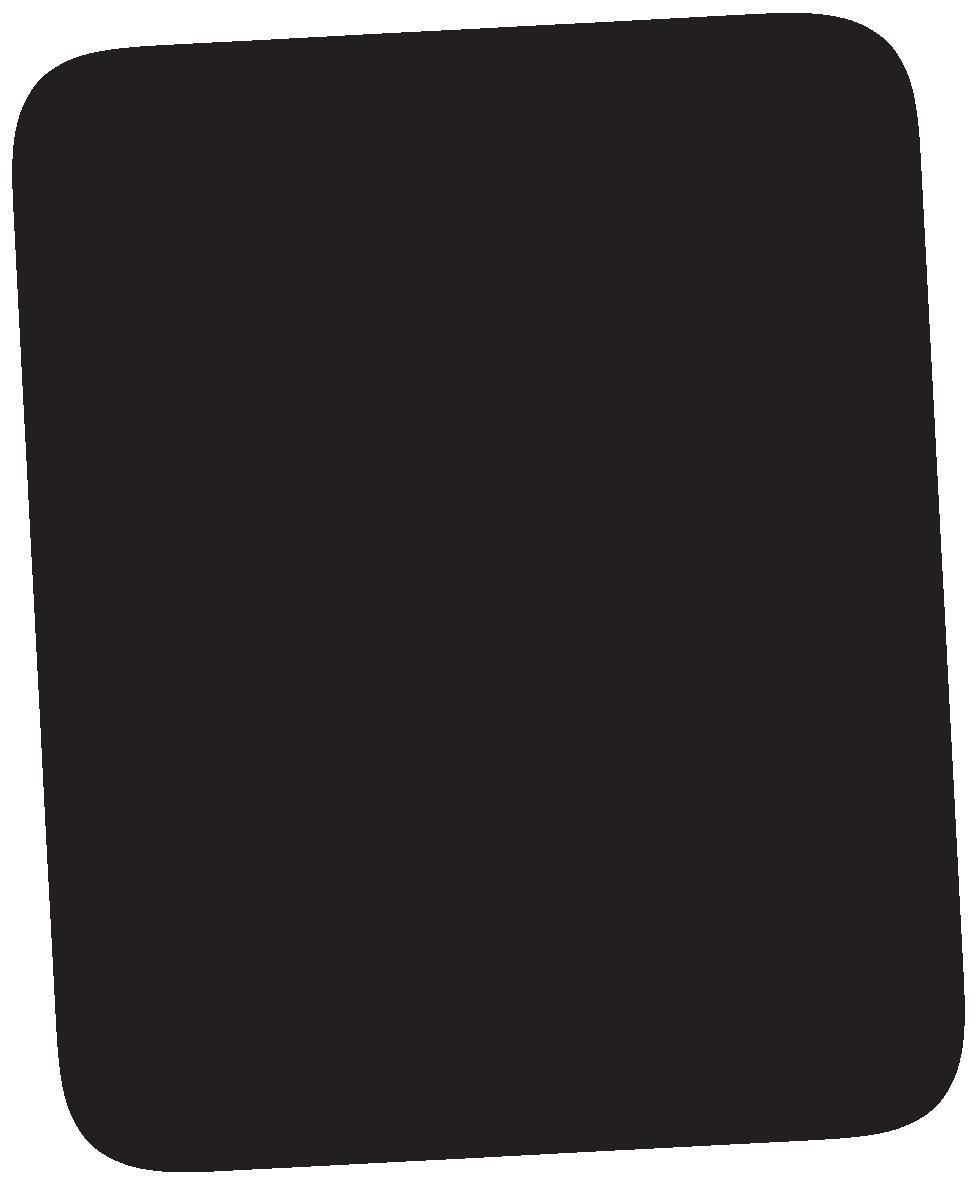
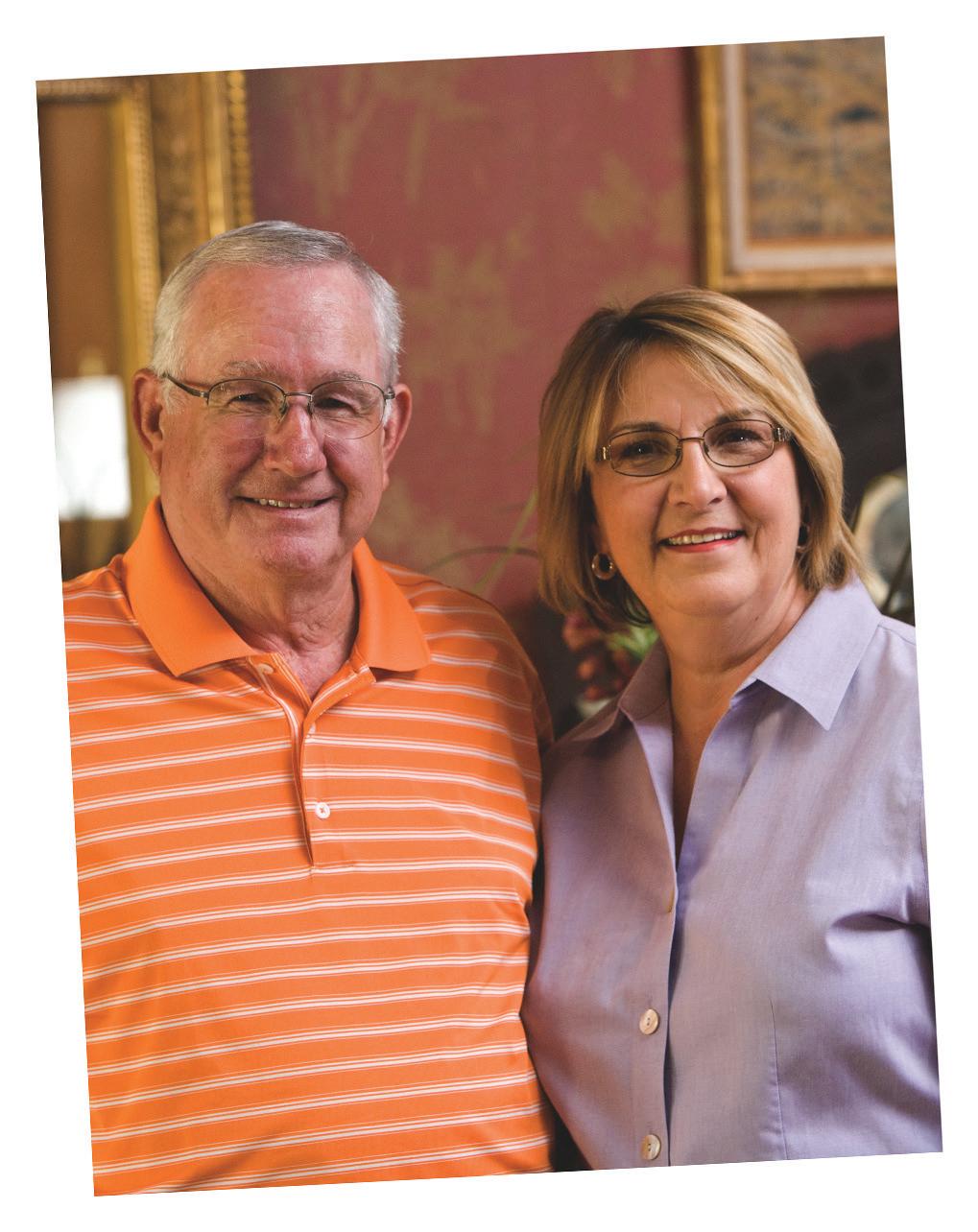
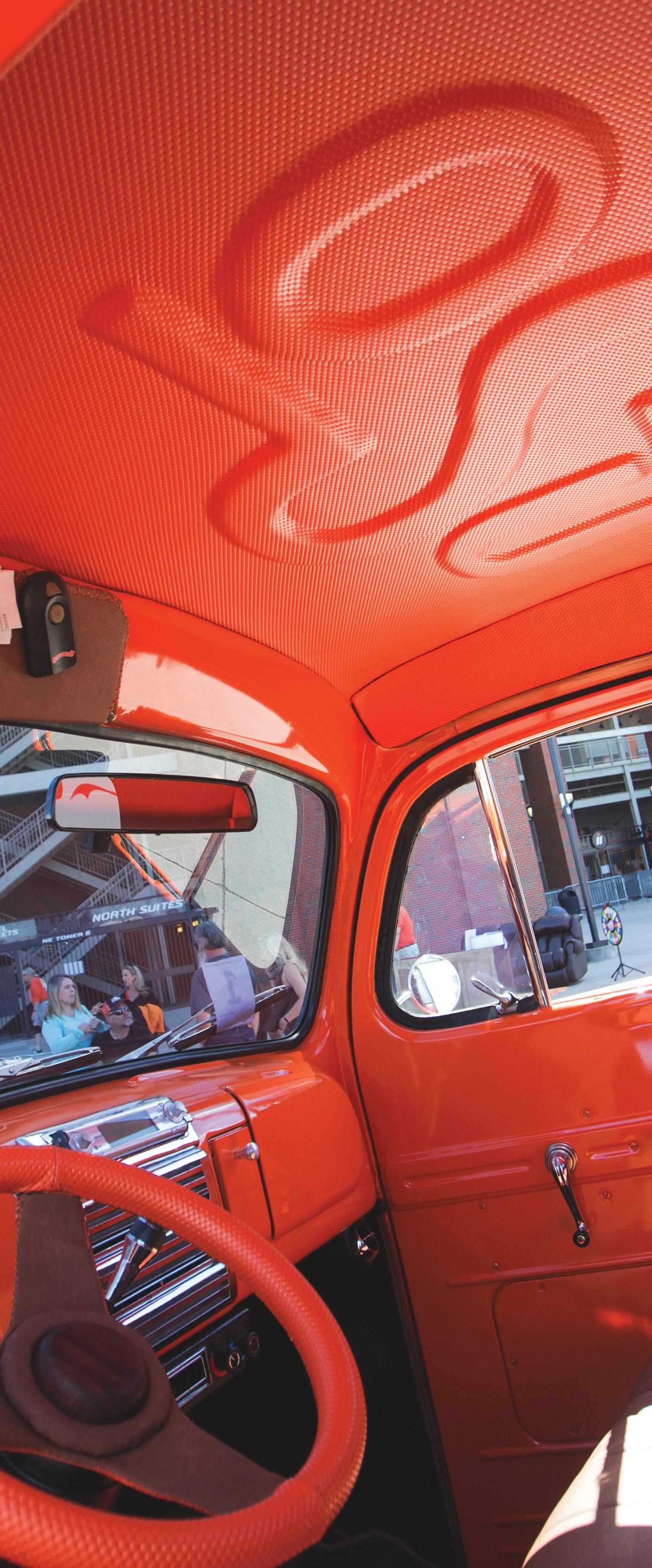
It was love at first sight.
“Our pride and joy,” beams Calvin Anthony
After Linda — his wife of 56 years — of course. And their three children. And eight grandchildren …
But there’s nothing like the bond between a man and his truck.
Especially when it’s a classic.
“It’s a 1948 Ford F-1, the first in the F series,” he says. “It’s all orange, in pristine condition. We park it right there by the stadium, so it gets a lot of visibility.
“I never thought I’d enjoy a toy as much as when Linda and I bought that truck.”
“Wish I had a nickel for every fan that wanted to take their picture beside it,” Linda quips.
“Linda’s brother found it down in McAlester. It was a little di erent shade of orange at the time, but he brought it up here knowing it was an easier sell in Stillwater.”
Calvin ended up buying the truck for himself.
He drove it often, eliciting honks and waves and “Go Pokes” pistol gestures from passing motorists.
But the Ford had seen better days. It wasn’t a show truck at the time, but it had the potential. It just needed a makeover. Enter Darren Shrum — yes, that Shrum. The First Cowboy had owned a custom fabrication business before his wife, Dr. Kayse Shrum, became OSU president.
“I had worked extensively with Kayse, both as a legislator and a Regent, and then when she became head of the OSU medical school, I got acquainted with Darren,” Calvin says.
“After I bought the truck, he said, ‘You know, if you want to spend a little money on it, I’d like to work on it for you.’”
“I had been working in the corporate world, then I bought a shop and started restoring old classic cars and hot rods and di erent things like that,” Darren explains. “I’d do anything for Calvin and Linda. They’re great people, and I wanted to do a good job on their truck.”
Calvin’s truck was “pretty tired,” Darren recalls.
“The orange was faded. The interior wasn’t in good shape. I told Calvin what I would do if it were mine … And basically, we touched every inch of that truck except the engine compartment, because mechanically it was in good shape.
“We got the paint code for the proper OSU orange. We added custom wheels and tires. It had a factory wood bed, and I actually bought maple and redid the bed myself. It’s beautiful.
We ran the gas tank through the bed, so that had to be custom fit over all the boards. Since Calvin played baseball for OSU, the upholstery has heavy pleats and orange stitching that kind of looks like a baseball glove. The headliner is beautiful with a retro OSU logo. It’s got orange carpet, door panels, even the steering wheel … It’s beautiful. I think it turned out awesome.”
Shrum also gave the tailgate a personal touch for the Anthonys.
“I made a custom aluminum rack that fits in the receiver hitch so they could just take that out when they’re not driving the truck or whenever they’re going to the game. It holds His and Her custom orange coolers with their names on them and leather straps that match the baseball theme. Calvin likes to make his famous punch, so one cooler holds ice, and one holds the punch.
“Linda likes to cook, and they always have a big crowd tailgating with them, so I took a pair of crutches — since they had a medical supply company — and cut them o to use as an adjustable support for a fold-out table. I wanted to give them something easy to use, lightweight and removable.”
“That truck is perfect,” Calvin says, “but we had one bad experience with it … Ironically riding with Darren and Kayse’s daughter in the 2019 Homecoming parade.”
It’s a funny story.
As Miss United States Agriculture for Western Oklahoma, OSU senior Kyndall Shrum was standing in the truck bed, waving to the thousands of onlookers along the Sea of Orange Parade route. Her father rode shotgun next to Calvin in the cab.
“We’re nearing the end of the parade in front of the Sonic and Shortcakes,” Darren recalls. “And I’m watching the gauges because I can smell this thing leaking. Calvin’s not real mechanical. He’s got his arm out the window, waving, and I’m like, ‘Calvin, this truck is getting ready to overheat. The motor is getting ready to lock up.’
“Oh, we’ll make it,” the ever-optimistic driver told him.
“Now the cab is full of radiator steam. You can’t see out the windows … but you know Calvin. He just kept smiling and waving.”
“I looked in my rearview mirror, and Kyndall was there, still smiling and waving right along through a thick cloud of smoke,” Calvin says. “She just kept waving like nothing happened.”
Fearing a catastrophic — and costly — engine failure, Shrum had seen enough. He reached over, grabbed the key and turned the truck o . Calvin pressed his foot on the clutch and put it in neutral.
Fortunately, several of Calvin’s friends — he has many, you recall — were witnesses and ran over to assist. Darren jumped out to help push. The bystanders managed to muscle the Ford into the nearby CVS parking lot where it safely cooled down.
“Later, we got that hose fixed and everything was okay, but I’ll always have that vivid memory of Kyndall waving like there’s nothing in the world wrong going on,” Calvin laughs. “That car was smoking hot!”
These days, the tricked-out truck is running smooth without incident and making lasting memories for Calvin and Linda.
“They’re probably the two sweetest people you could ever meet,” Darren says. “And they love Oklahoma State.”
Darren recalls a comment Calvin made in 2021 that sticks with him.
“Kayse had just been named the new president here at OSU, and we had gone out to dinner with Calvin and Linda. We’re walking out to the parking lot from the Ranchers Club, and he just stops and says, ‘Kayse, did you ever think two people, one from Carney and one from Coweta, would be living a life like this and representing such an awesome school?’”
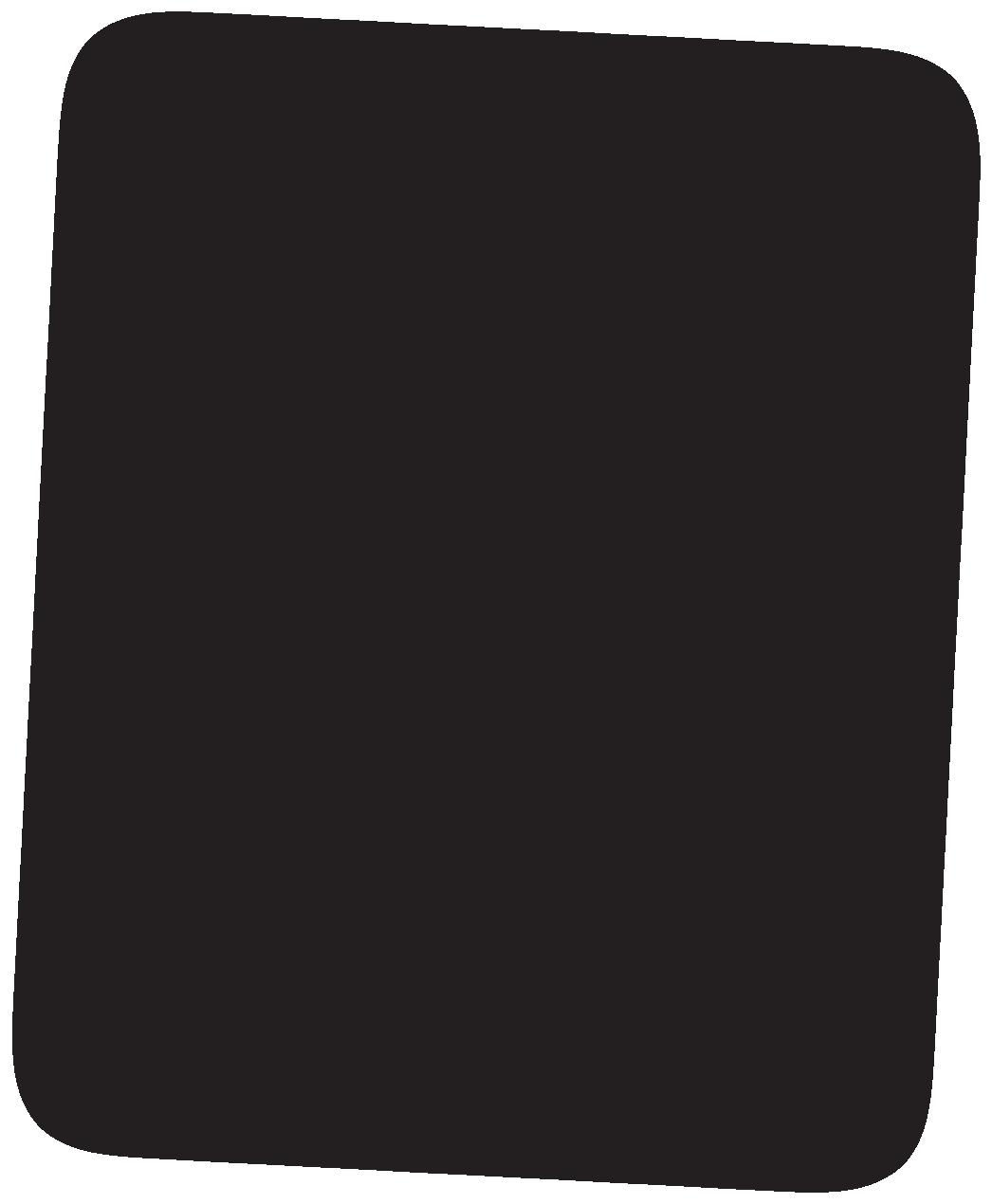



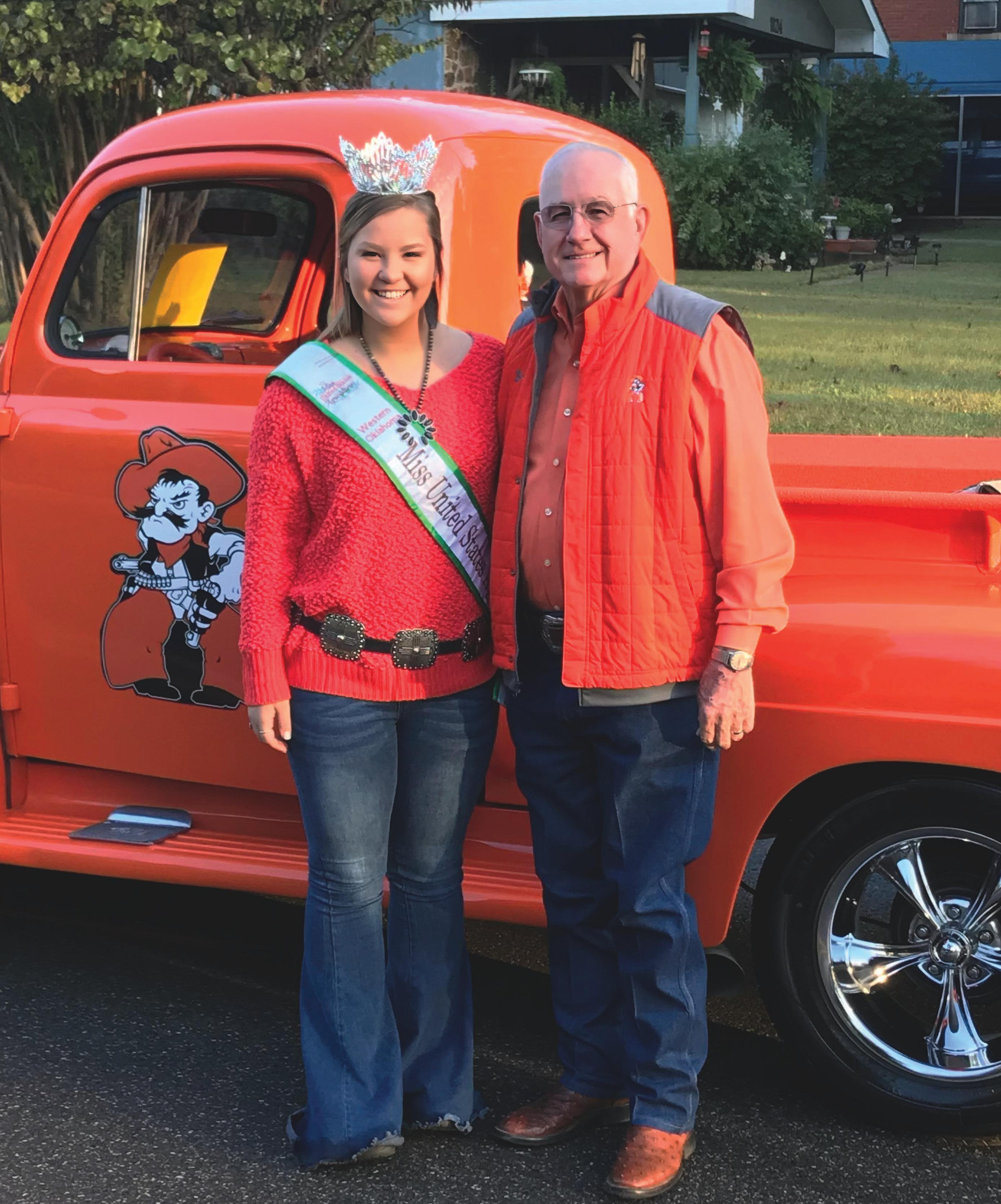
When OSU announced its scholarship endowment initiative, the athletic program was last in the Big 12. Now, more than halfway through the 10-year program, OSU leads the conference.
OSU awards 229 full scholarships to student-athletes each year at a cost of $4.5 million. Each dollar freed up through endowed scholarships goes back into our programs. Better equipment. Better facilities. Better support. Each dollar has a direct impact on the lives of our student-athletes.
This is the list of all the generous supporters who have helped to provide a bright Orange future.
They are our Honor Roll.
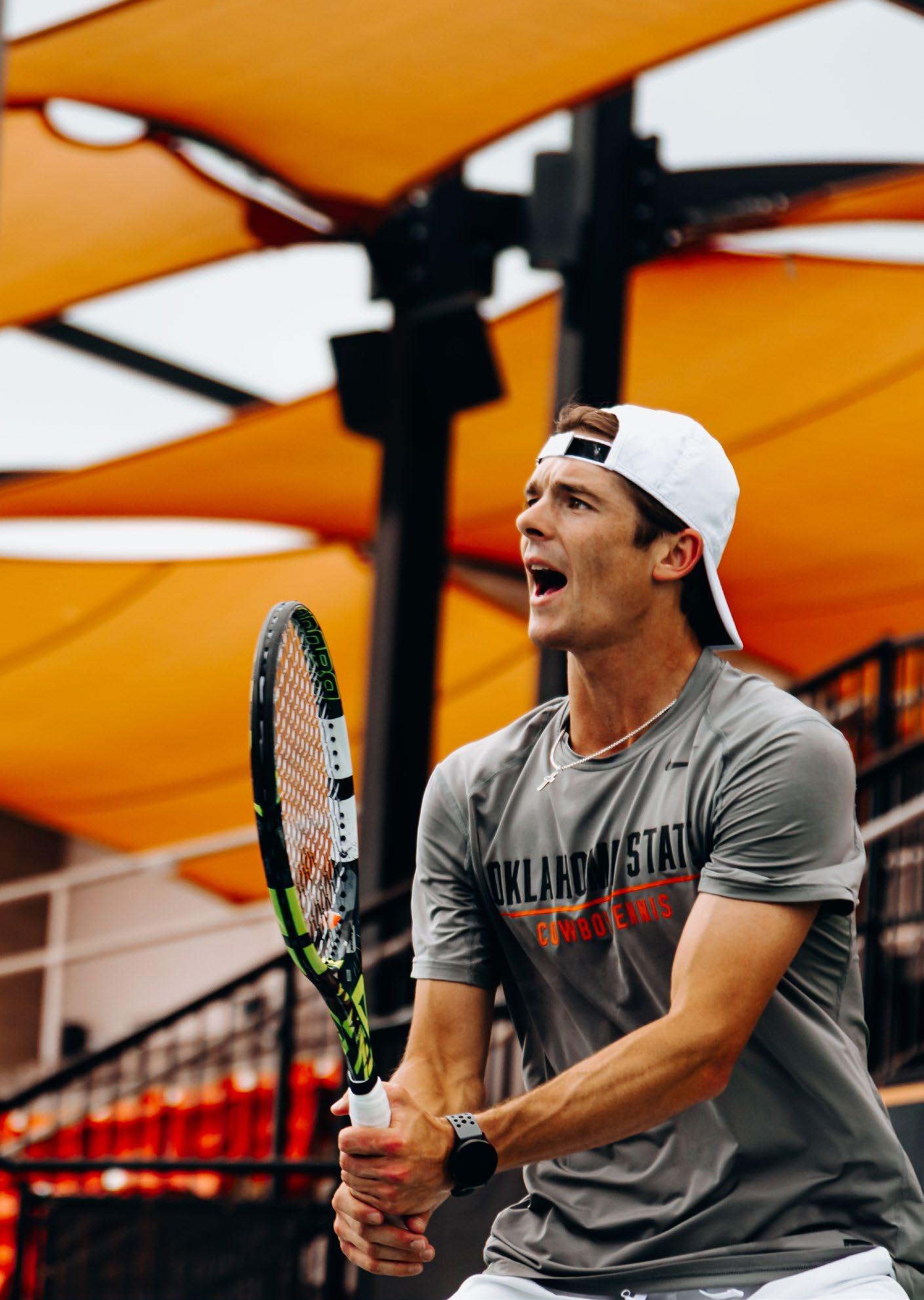
Baseball 10.25
FULL SCHOLARSHIP
Dennis and Karen Wing (2) | Hal Tompkins
Sandy Lee | Jennifer and Steven Grigsby
Mike Bode and Preston Carrier (2)
David and Julie Ronck
HALF SCHOLARSHIP
Sally Graham Skaggs
QUARTER SCHOLARSHIP
Bryant and Carla Co man
David and Grace Helmer | Jill Rooker
Martha Seabolt | Dr. Scott Anthony
John and Beverly Williams
Richard and Lawana Kunze
Equestrian 1.25
FULL SCHOLARSHIP
Baloo and Maribeth Subramaniam
QUARTER SCHOLARSHIP
David and Gina Dabney
Football 33.0
FULL SCHOLARSHIP
Bob and Kay Norris
Bryant and Carla Co man /
The Merkel Foundation
David LeNorman | Dennis and Karen Wing (2)
Dr. Mark and Beth Brewer
Ike and Marybeth Glass
Jack and Carol Corgan
Jim Click | John and Gail Shaw
Ken and Jimi Davidson | Leslie Dunavant
Mike and Kristen Gundy
Mike and Robbie Holder
Ron Stewart | Ross and Billie McKnight
Sandy Lee | Tom and Sandra Wilson
Wray and Julie Valentine
James and Mary Barnes
HALF SCHOLARSHIP
Cindy Hughes | Donald Coplin
Doug Thompson | Ed and Helen Wallace
R. Kirk Whitman | Greg Casillas
Jim and Lynne Williams / John and Patti Brett
Mike and Judy Johnson | Sally Graham Skaggs
State Rangers | Tom Naugle | Nate Watson
QUARTER SCHOLARSHIP
Al and Martha Strecker
Arthur “Andy” Johnson, Jr.
Arthur Couch | Barry and Roxanne Pollard
Bill and Ruth Starr | Brad and Leah Gungoll
Brian K. Pauling
Bridgecreek Investment Management LLC
Tyler Zink's collegiate tennis career came to an end in the Sweet 16 of the 2024 NCAA Doubles Championships, hosted at the Greenwood Tennis Center. Following the match, the graduate student reflected on his time at OSU: "I've met so many amazing people. I’m super grateful for everyone that’s been a part of the Cowboy family."
Bryan Close | David and Cindy Waits
David and Gina Dabney | Dr. Berno Ebbesson
Dr. Ron and Marilynn McAfee
Eddy and Deniece Ditzler | Flintco
Fred and Janice Gibson | Fred and Karen Hall
Howard Thill | James and LaVerna Cobb
Jerry and Lynda Baker | John P. Melot
Jerry and Rae Winchester
John S. Clark | Ken and Leitner Greiner
Kent and Margo Dunbar | Paul and Mona Pitts
Randall and Carol White | Shelli Osborn
Roger and Laura Demaree
Steve and Diane Tuttle
Tony and Finetta Banfield
General 1.25
HALF SCHOLARSHIP
Terry and Martha Barker
QUARTER SCHOLARSHIP
David and Judy Powell
Kenneth and Susan Crouch
Sally Graham Skaggs
Graduate Athlete 0.75
QUARTER SCHOLARSHIP
Bob and Joan Hert | Neal Seidle
Tom and Cheryl Hamilton
Men's Basketball 23.5
FULL SCHOLARSHIP
Baloo and Maribeth Subramaniam
A.J. and Susan Jacques
Bill and Marsha Barnes
Brett and Amy Jameson
Calvin and Linda Anthony
Chuck and Kim Watson
David and Julie Ronck (1.25)
Dennis and Karen Wing (2)
Douglas and Nickie Burns
Gri and Mindi Jones
James and Mary Barnes | Jim Vallion
Ken and Jimi Davidson
Kent and Margo Dunbar | KimRay Inc.
Sandy Lee | Mitch Jones Memorial
HALF SCHOLARSHIP
David and Julie Ronck
Dr. Mark and Susan Morrow
Jay and Connie Wiese | Sally Graham Skaggs
Stan Clark | Billy Wayne Travis
Holloman Family
QUARTER SCHOLARSHIP
Dr. Scott and Lynne Anthony
Gary and Sue Homsey
Michael and Heather Grismore
Rick and Suzanne Maxwell
Robert and Sharon Keating
Steve and Suzie Crowder
Terry and Donna Tippens
Men's Golf 6.25
FULL SCHOLARSHIP
David and Julie Ronck
Dennis and Karen Wing
Jack and Carol Corgan
Genevieve A. Robinson
Baloo and Maribeth Subramaniam
HALF SCHOLARSHIP
Simmons Bank
QUARTER SCHOLARSHIP
Bob and Elizabeth Nickles
Garland and Penny Cupp
Richard and Joan Welborn
Men's Tennis 0.75
QUARTER SCHOLARSHIP
Tom and Cheryl Hamilton
HALF SCHOLARSHIP
Jim McDowell Men's
Men's Track 0.75
QUARTER SCHOLARSHIP
Dr. Mark and Susan Morrow
Susan Anderson | Ken and Leitner Greiner
HALF SCHOLARSHIP
Mary Jane and Brent Wooten Soccer 1.0
FULL SCHOLARSHIP
James and Mary Barnes
QUARTER SCHOLARSHIP
Tom and Cheryl Hamilton
Richard Melot
Ann Dyer
FULL SCHOLARSHIP
Brad and Margie Schultz
Ken and Jimi Davidson
Mike Bode and Preston Carrier
HALF SCHOLARSHIP
Baloo and Maribeth Subramaniam
Don and Mary McCall
John and Caroline Linehan
Calvin and Linda Anthony
Mike Bode and Preston Carrier
QUARTER SCHOLARSHIP
Bill and Roberta Armstrong
Bill and Sally Cunningham
Donald Coplin | Jill Rooker
Richard and Linda Rodgers
Jo Hughes and Deborah J. Ernst
Richard Melot
Women’s Golf 3.0
FULL SCHOLARSHIP
Baloo and Maribeth Subramaniam
Genevieve A. Robinson
Louise Solheim
HALF SCHOLARSHIP
David and Julie Ronck | Dena Dills Nowotny
QUARTER SCHOLARSHIP
Amy Weeks | Kent and Margo Dunbar
Women’s Tennis 0.5
QUARTER SCHOLARSHIP
Jamie Maher
Richard Melot
FULL SCHOLARSHIP
A.J. and Susan Jacques
Bruce and Nancy Smith
Chuck and Kim Watson
Lon and Jane Winton
OSU Wrestling – White Jacket Club / Gallagher Endowed Wrestling Scholarship
OSU Wrestling – White Jacket Club / Myron Roderick Endowed Wrestling Scholarship
OSU Wrestling – White Jacket Club / Ray Murphy Endowed Wrestling Scholarship
OSU Wrestling – White Jacket Club / Tommy Chesbro Endowed Wrestling Scholarship
The Cobb Family
HALF SCHOLARSHIP
Mike and Glynda Pollard
Mark and Lisa Snell
Bobby and Michelle Marandi
QUARTER SCHOLARSHIP
Danny and Dana Baze / Cory and Mindy Baze
Kyle and Debbie Hadwiger
John and Beverly Williams | R.K. Winters
To learn more about scholarship opportunities and how you may contribute, please contact:
Larry Reece (405-744-2824)
Matt Grantham (405-744-5938)
Daniel Hefl in (405-744-7301)
Shawn Taylor (405-744-3002)
Ernie and Wilma Roberts were recently honored with a special plaque on Bullet's stall in the Boone Pickens Stadium west endzone. For more than two decades, the couple has housed and cared for OSU's iconic horses at Stone Ridge Ranch in Tulsa. The Spirit Rider team is under the direction of their daughter, Jennifer Roberts, who served as the Spirit Rider in 2000 and 2006. Ernie and Wilma are the proud grandparents of 2024 Spirit Rider Keaton Cunningham, who will ride Bullet (aka "Black High Brows") onto the field after each touchdown this season. Also pictured are grandchildren Falyn Cunningham and Landry Cunningham, along with son Jason Roberts and daughterin-law Annette Roberts.


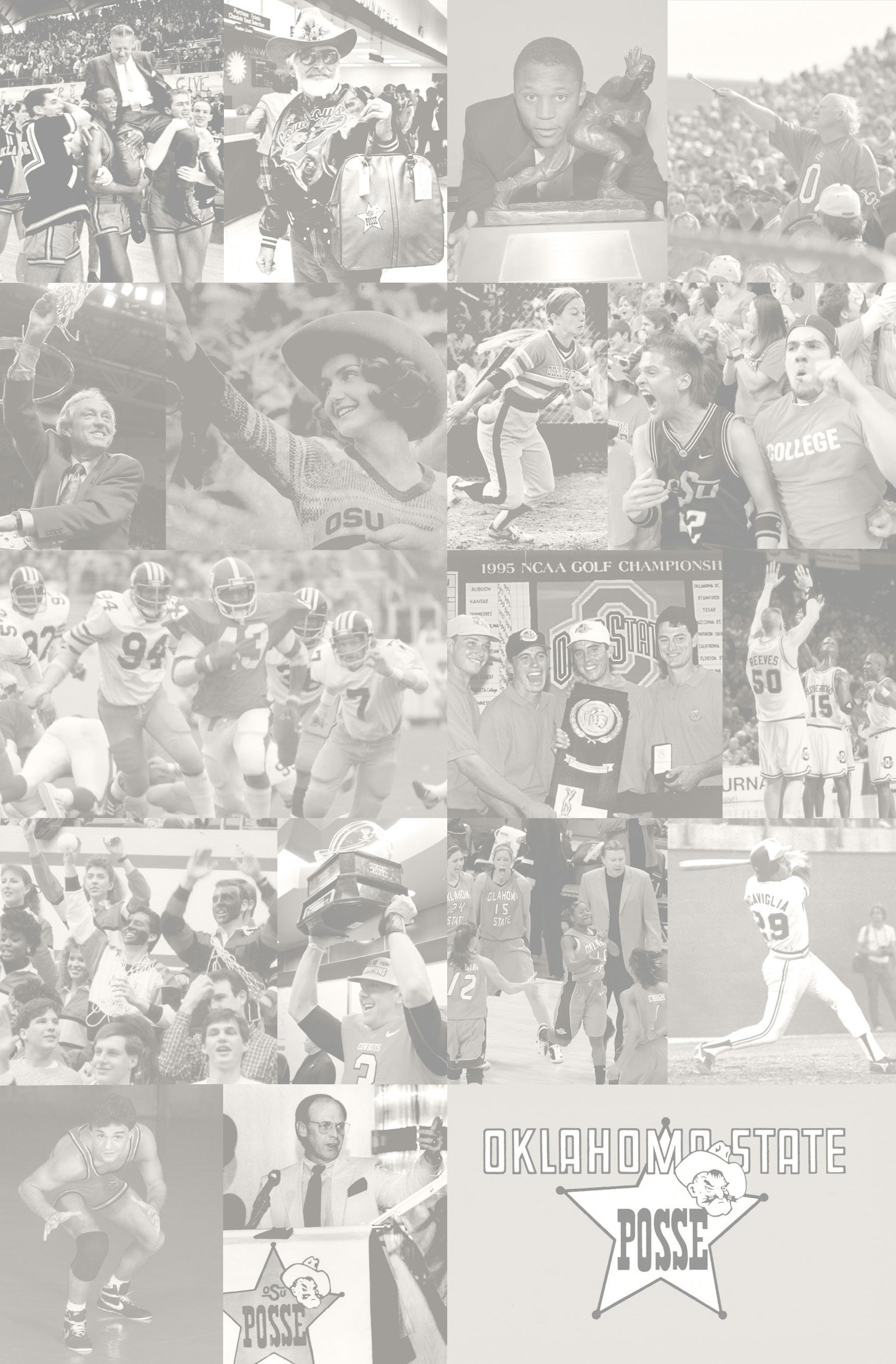
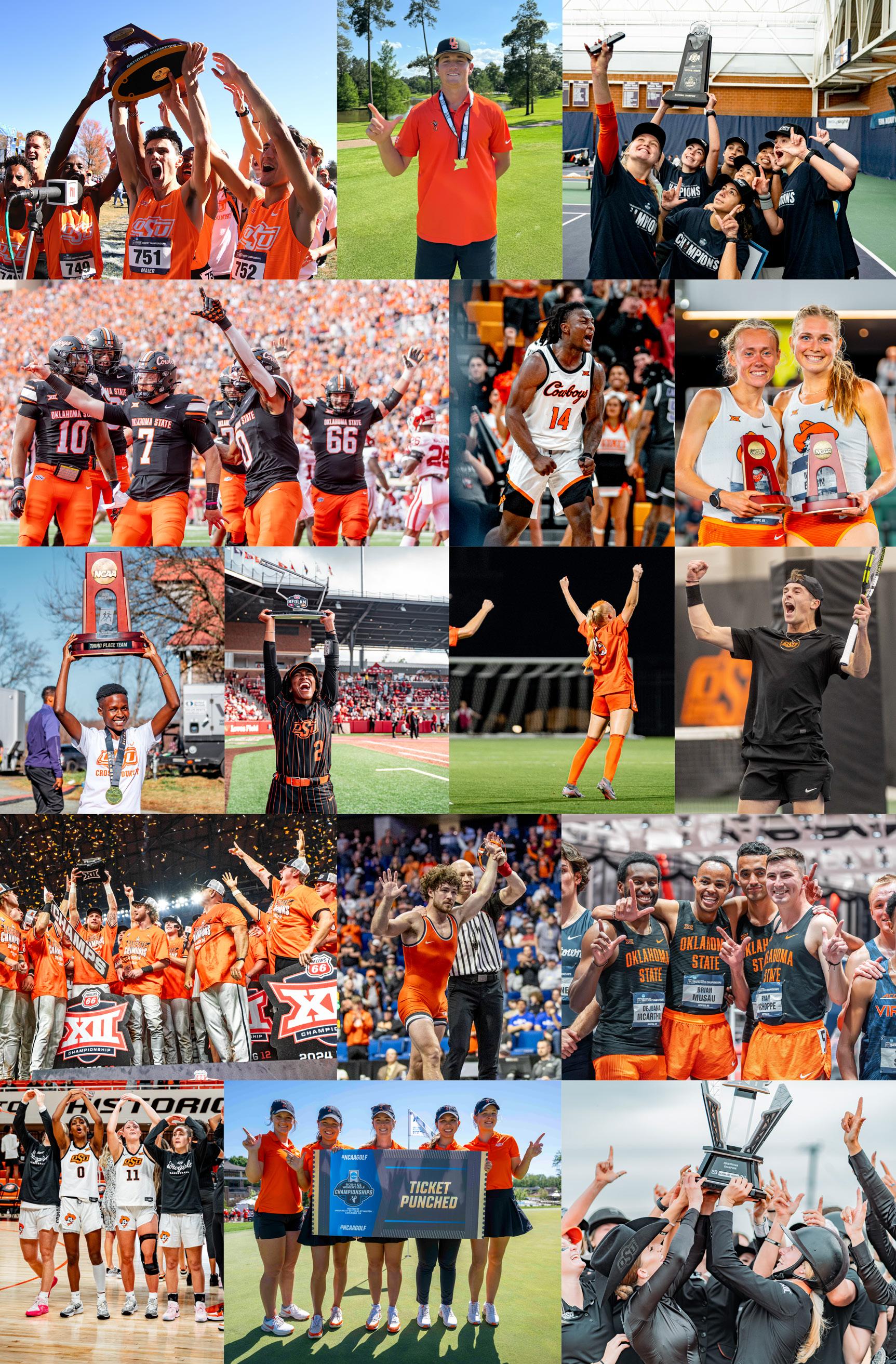
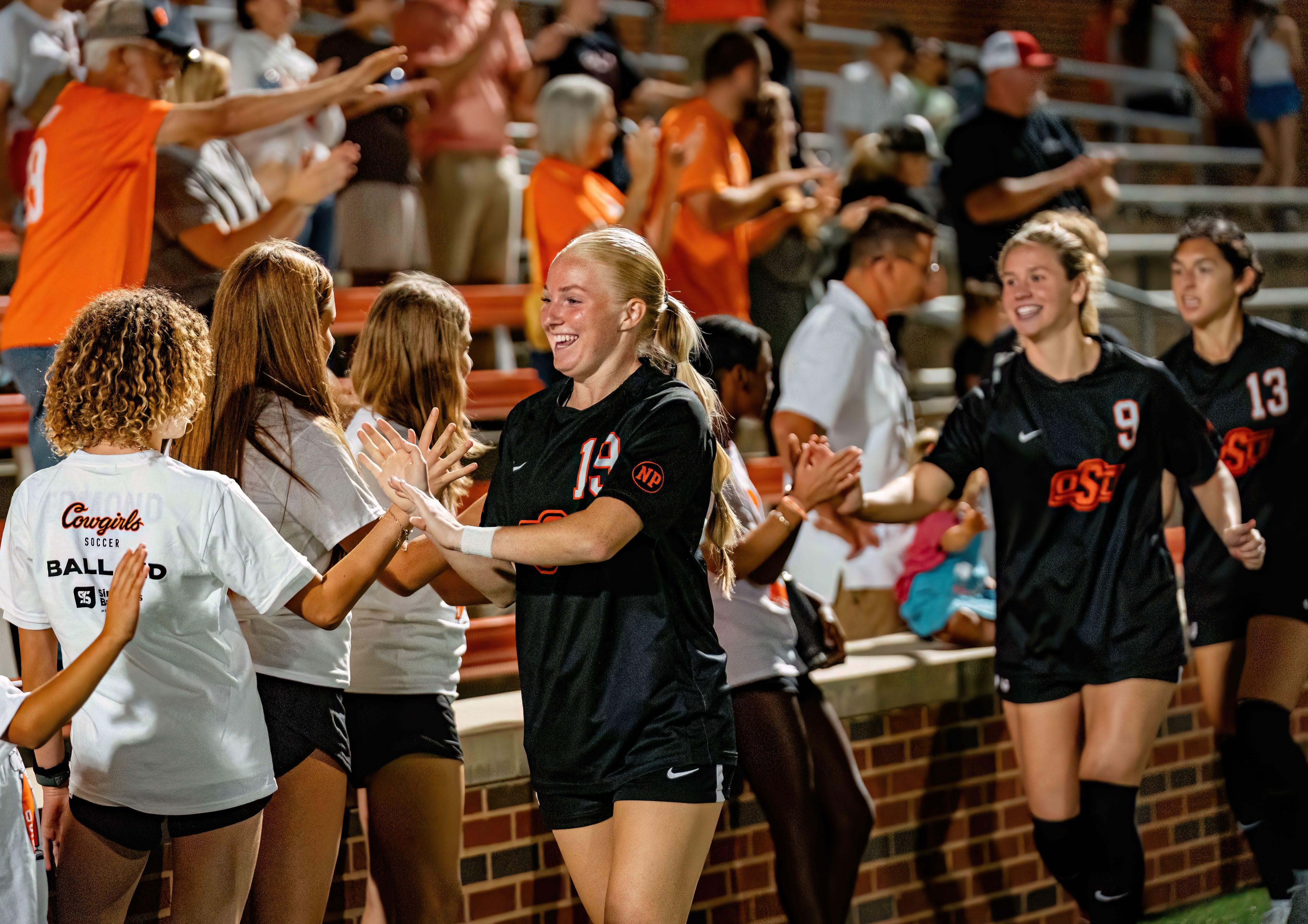

Cowgirls Alex Morris, Mollie Breiner and Xcaret Pineda celebrate with young soccer fans following OSU's preseason exhibition match vs. Tulsa. The Cowgirls scored five goals (two each by Pineda and Lexi Lee, and one by Morris) en route to a 5-1 5-1 victory. The Cowgirls will play 11 home matches at Neal Patterson Stadium in 2024. For ticket and schedule info, visit okstate.com/tickets
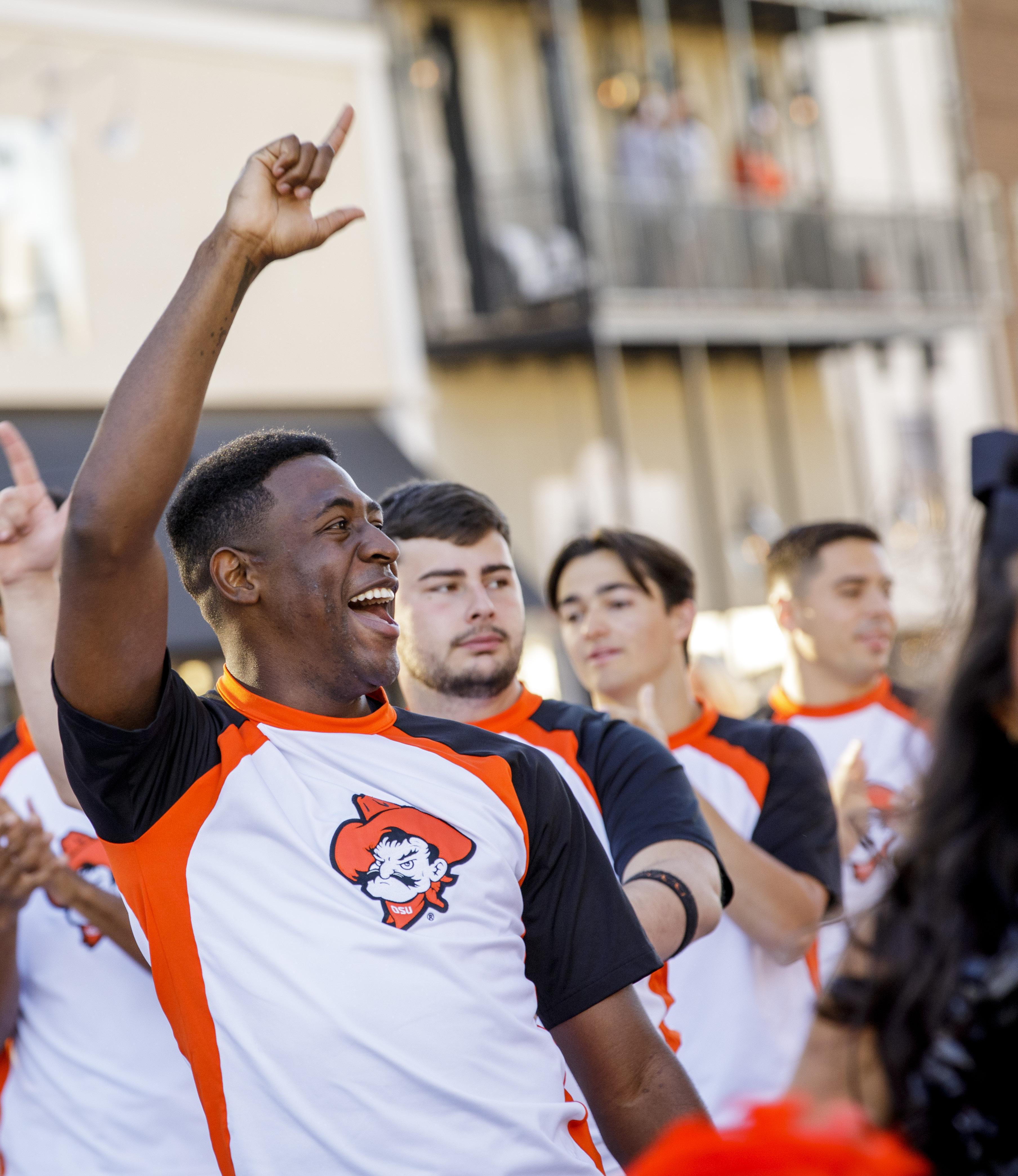



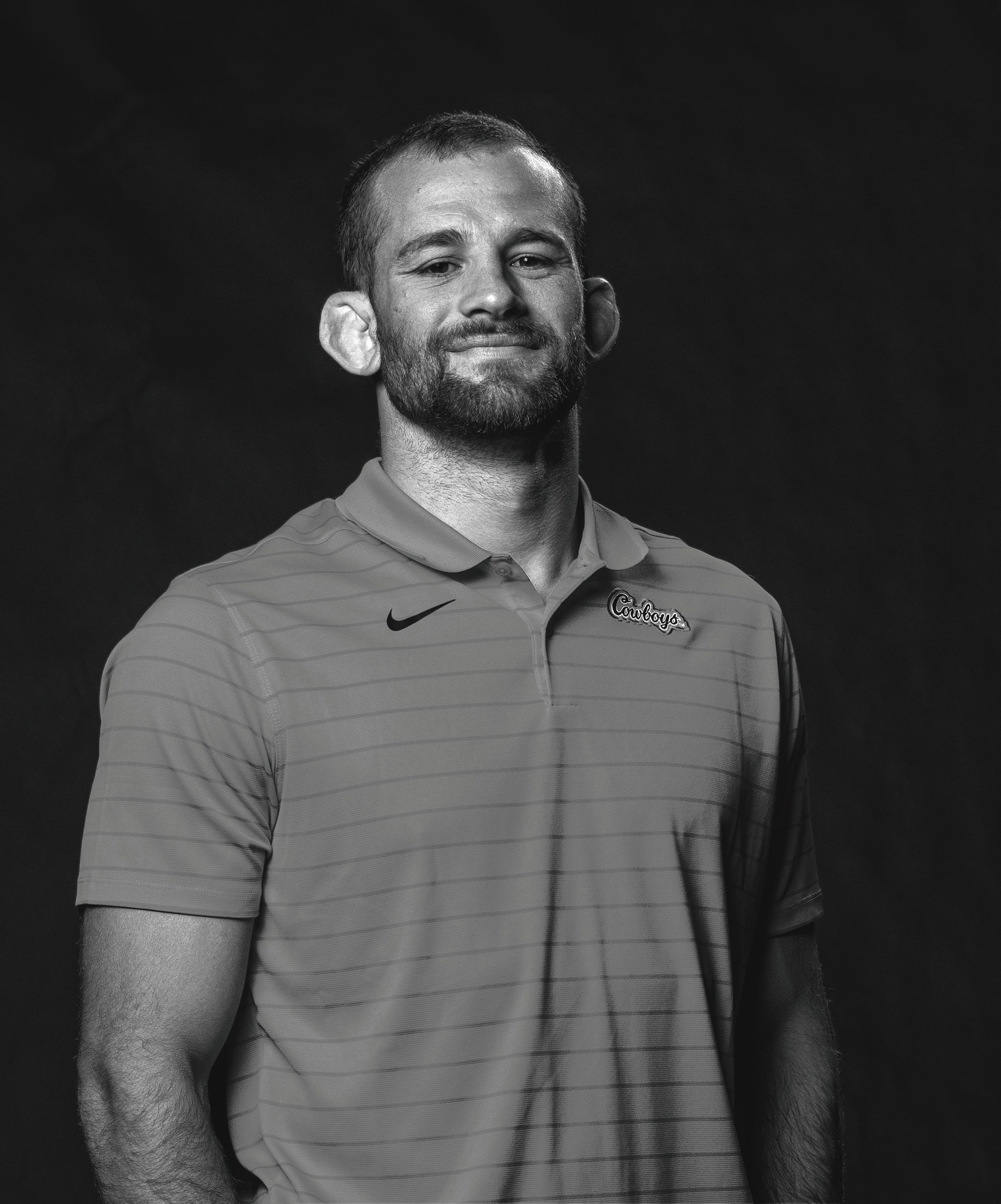
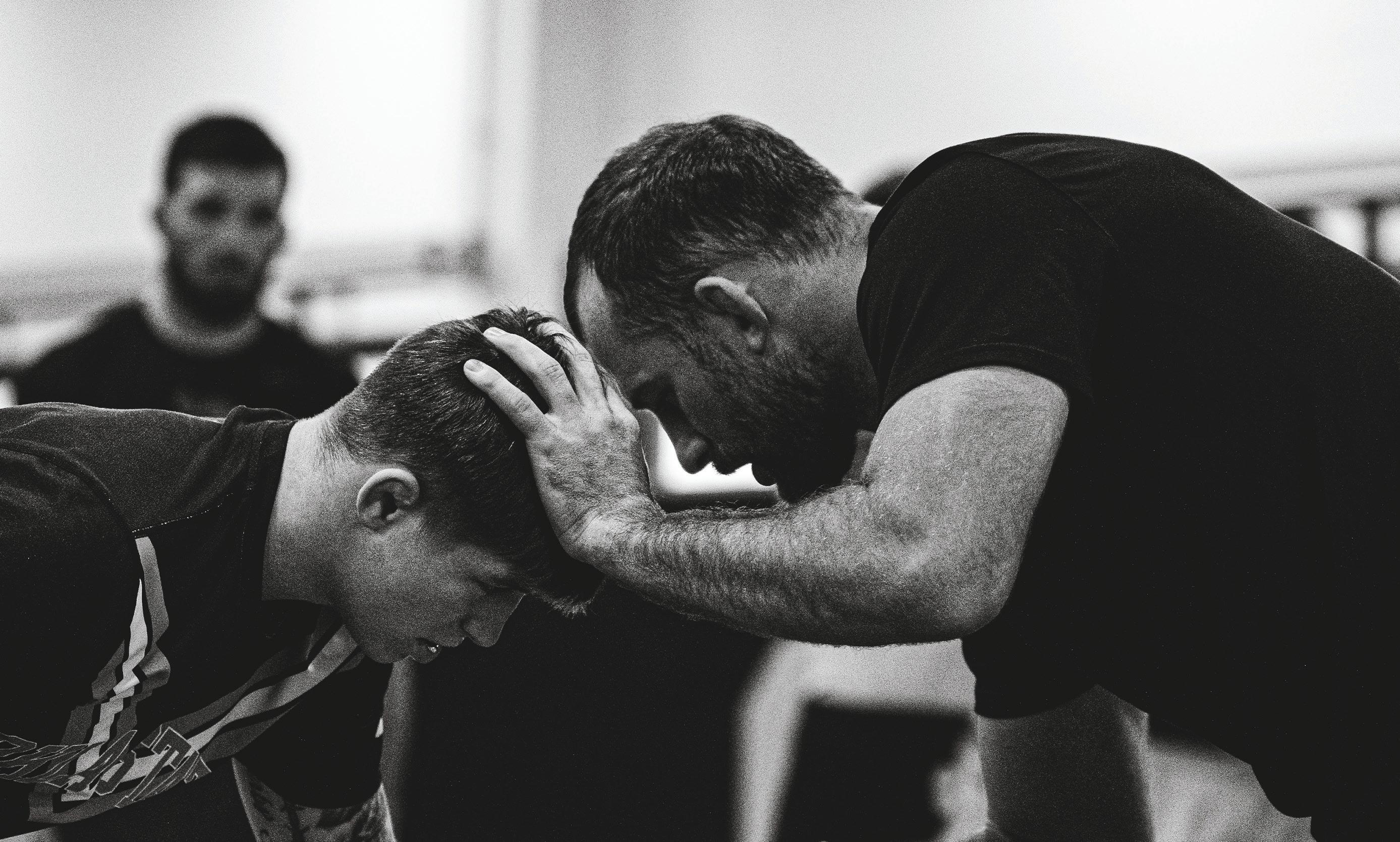
“I TAKE A LOT OF PRIDE IN THIS JOB, AND I’M NOT GOING TO TAKE IT LIGHTLY. I WANT TO HELP THE PROGRAM BE THE BEST IT POSSIBLY CAN BE.”
— DAVID TAYLOR

Don’t let the calm, easygoing demeanor fool you. David Taylor is uncomfortable.
The first-time head coach has been on the job a few short months, and the learning curve of an NCAA wrestling program CEO is steep. It’s a lot to take in. Like drinking from a firehose.
But the 34-year-old wouldn’t have it any other way. You don’t become a champion by being comfortable, Taylor says. And he would know.
Spanning more than a decade of competition at the highest level — both nationally and internationally — Taylor’s impressive mat accolades include an Olympic gold medal and three world titles, plus two NCAA individual championships and four team titles at Penn State. It’s a résumé reminiscent of that of his predecessor, Oklahoma State legend John Smith (two Olympic golds, four world titles, and two NCAA titles).
After 33 years at the helm of his alma mater, Smith announced his retirement in April. The search for the program’s eighth head coach in its 110-year history culminated in Taylor’s hiring on May 7 and sent shockwaves throughout the wrestling community. OSU AD Chad Weiberg pulled a Nittany Lion legend out of State College, Pa., to lead the Cowboy program back to the top, tasked
with taking down the juggernaut Cael Sanderson built in Happy Valley.
(Minds. Blown.)
Taylor is a household name in wrestling circles, but had never been an assistant or head coach. The same was true for Smith.
What they do have, however, are intangibles … the “it” factor.
While Smith (widely considered the greatest freestyle wrestler of the modern era) inspired generations of young grapplers — including his successor — with his patented “low single” takedown and blue-collar work ethic, Taylor is the wrestler the current generation wants to emulate.
Taylor’s self-appointed “Magic Man” moniker may have a silly origin during his college days (inspired by the movie Talladega Nights), but he quickly earned the nickname with a relentless, point-scoring attack and never-give-up attitude. Taylor seemingly pulled a rabbit out of his hat countless times on the mat, garnering respect and admiration — even from Cowboys and Hawkeyes. His collegiate record of 134-3 included 50 pins, 42 technical falls and 29 major decisions
It’s this aggressive approach that Taylor brings to the OSU wrestling room.
“I think that’s the fun part about competing,” Taylor says. “It’s not just getting your hand raised, it’s the way you’re getting your hand raised. It’s the way you’re competing. It’s the way that you’re living your life on and o the mat.
“If I’ve had a lasting impact on the sport, it’s because of the way that I competed. I competed that way every single time. That’s what I knew to be successful. So that’s the kind of mentality that we’re going to share with these guys, and that’s the mentality we’re looking for in wrestlers.”
For Taylor, that means scoring points, and the OSU coaches have been in the trenches instilling that mindset in summer workouts.
“As a sta , we lead by example,” he says. “We’re on the mat every single day. We’re pushing these guys. We’ll hold them accountable by training with them. I’ve always had a coaching philosophy that I would never make a wrestler do something that I wouldn’t do or hadn’t done in my career. And just because I’ve done something in my career doesn’t mean it can’t be di erent here. Hopefully through the trial and error and learning from my mistakes that I went through in my career helps them have success.
“I think the benefit of wrestling with the guys is there’s no guesswork,” he adds. “When our guys wrestle with Thomas (Gilman), Jimmy (Kennedy), Tyler (Caldwell) or myself, there is no guesswork. When they go out and compete, they know exactly where they’re at, and we know where they’re at … They believe they can be successful because they’ve wrestled the best, and now that’s the standard. They’ve got to believe they can be the best.
“I was fortunate to have coaches that wrestled me all the time growing up, and it meant a lot for my confidence. You develop a closer connection with your athletes when you’re in the trenches with them.”
That trust in the sta is growing with each workout session, Taylor says.
“When we got here, guys had their guards up,” he says. “And we had our guards up. I think as time has gone on, the guards have come down, and we’ve developed relationships with the guys. It’s been fun to see that progress every day.”
Taylor says he and his sta are working to instill a gritty mentality: keep fighting, don’t take the path of least resistance.
“You battle for the takedown. You build a base o your belly. You fight for the escape. It’s those decisions where the easy way is letting a guy go, and the hard way is holding him down ... Those are the gritty things that are the di erence between an NCAA qualifier and an All-American or an All-American and a finalist or a national champion.”
The transition from being an individual competitor to coaching a team of individuals is a process, Taylor says.
“As a wrestler, I controlled all of my thoughts, emotions, e ort level … I was in control of all those things. As a coach, you have 40 young men who are independent in their actions and thoughts. In the short term, I’m just helping them think more clearly, helping them believe in themselves. Sharing that same energy and passion.
“We’re competing every single day,” he adds. “We’re competing to be the best program in the country, the best individuals in the country. At the end of the day, until you have 10 national champions, you know you’re never going to leave the national tournament fully satisfied. We need guys who lead by example, lead by going out and scoring a lot of points. I think that is a motivating factor for other athletes.”
Under Coach Smith, Cowboy Wrestling has had a track record of success in the classroom. Don’t expect that emphasis to change with Taylor, a first team Academic All-American at Penn State.
“That was always my dad’s rule — if I wanted to go compete, I had to have straight A’s,” he says. “I was always driven like that was the standard.
“My job is to help our guys be successful in wrestling, but I think they’re going to be successful if they understand there’s something bigger than wrestling. Wrestling is important, and it feels like everything, but in the grand scheme of things, there’s more to life than that. Understanding that they have other responsibilities as a student-athlete — teaching them to have some ownership over their lives — those are some things I’m also looking forward to teaching these guys.”
Wrestling season can’t come soon enough, he adds.
“As coaches, we’re doing a lot of things right now in preparation for this year and years to come, but we’re just excited to step on the mat and see our guys compete,” Taylor says. “I think the guys are excited. We just continue trying to build them, give them the tools to go be successful and hopefully score a lot of points.”
That competitive fire is what drives Taylor. It’s one of the main reasons he took the job.
“My life in State College was comfortable,” Taylor admits. “I’d been there for 15 years, established … and it was a very easy picture to see what my life was going to look like moving forward.”
Taylor graduated from Penn State in 2014 and set out to fulfill his lifelong dream in freestyle wrestling. The road for a would-be Olympian is challenging, to say the least, especially for athletes competing in sports outside the mainstream.
“Looking back on my career, in 2017, I was the best in the world that year — and I didn’t make the team. (Taylor finished
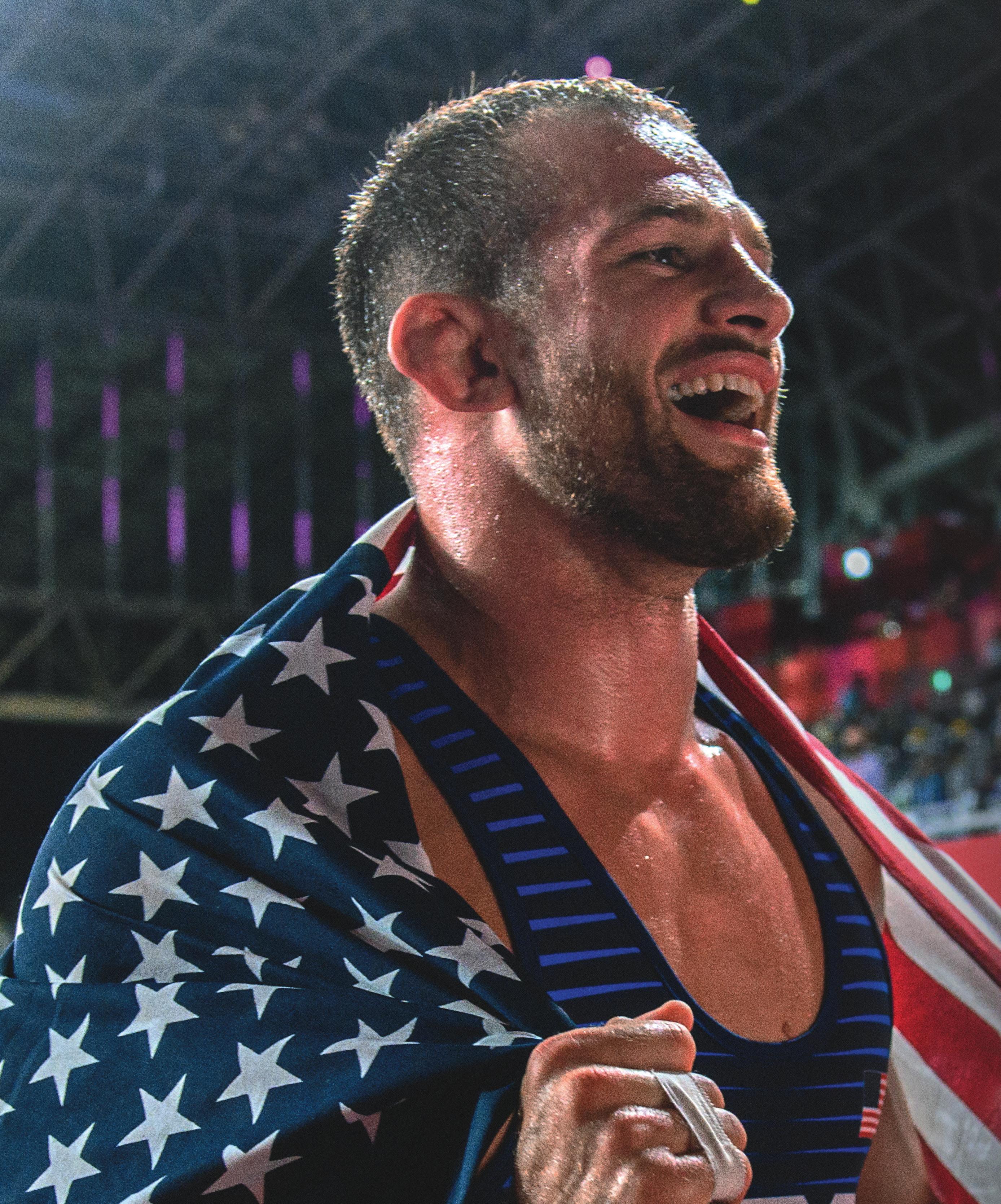
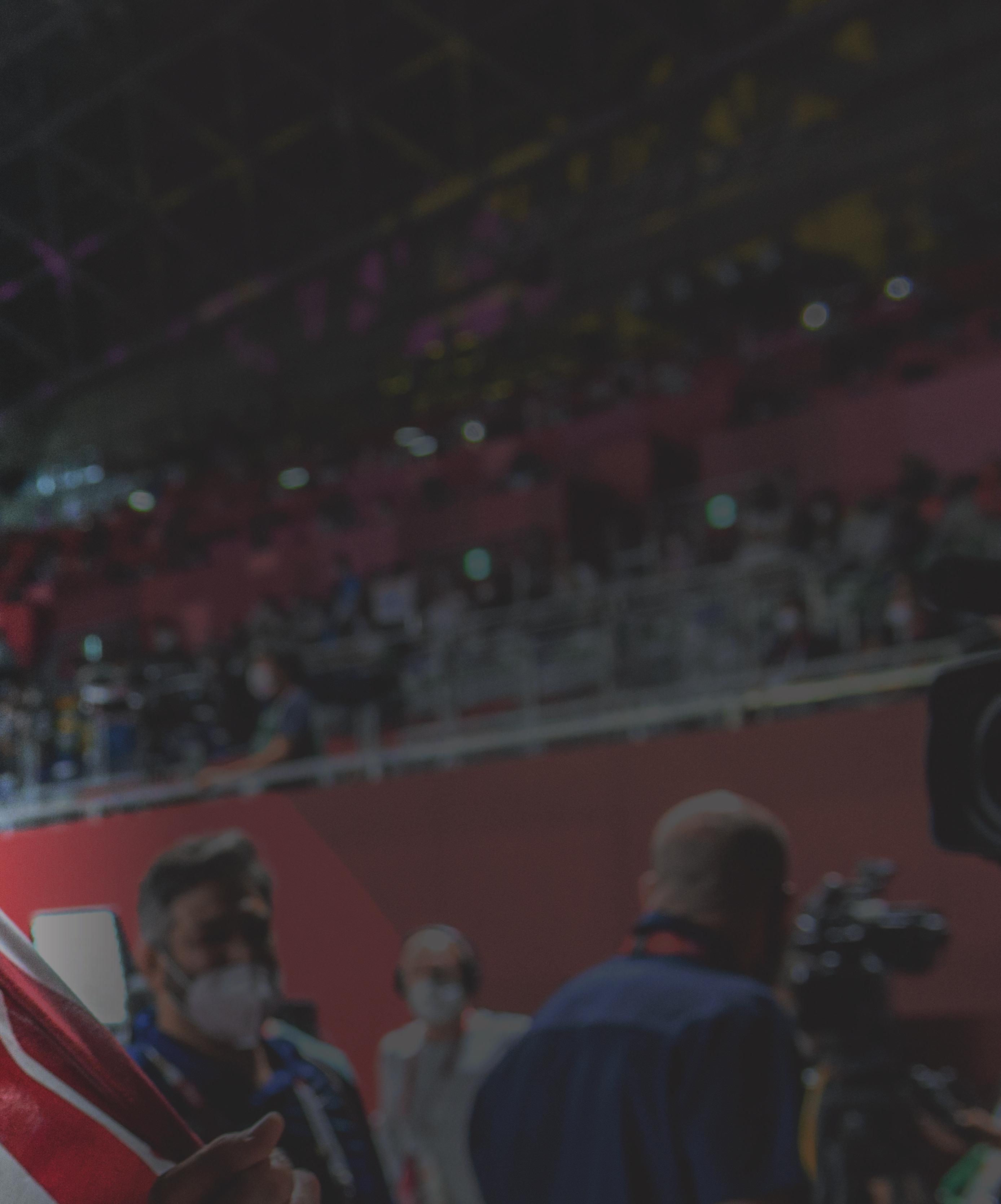
runner-up to J’Den Cox at the U.S. Freestyle World Team Trials.) You realize, in wrestling, if you’re not winning, it’s hard to support a family. Your endorsements come and go, and it’s tough.
“So at that point in time, my wife Kendra and I started some businesses in areas that we had a passion in. We started a cold-pressed juice company called K2 Roots. We started a youth wrestling facility called M2 Training Center. We realized that those are two things we are passionate about and that are also sustainable. Longevity. The more time and energy and e ort that we put into it, we could have a long-term plan beyond wrestling.”
As those two entrepreneurial endeavors helped provide stability on the home front, Taylor began to see his training come together on the world stage.
“I started to have more success in my wrestling career from 2018 to 2024 (including world championships in 2018, 2022, 2023 and Olympic Gold in 2021*), and those businesses continued to grow. It was kind of a true way of marketing myself and my interests and passion more than just relying on someone else from an endorsement standpoint. Having a long-term plan, and then competing as long as I possibly could at the highest level while having multiple income opportunities, helped me prolong my wrestling career.
So when my wrestling was done, Kendra and I were going to pivot into those things full time and grow those businesses, open new locations and that kind of stu . So that was what it looked like …”
But then life threw Taylor a curveball — or more precisely, a double-leg. At the April U.S. Olympic Team Trials, the favored veteran was upset by Aaron Brooks in the 86 kg (190 lbs.) weight class.
“When I didn’t win the trials this year, obviously there’s a sense of, ‘Well, what is next?’” Taylor explains. “This conversation eventually happens in everyone’s career, but for me I didn’t really have a ‘What’s next?’ because I already knew what was next. Kendra and I had already built those things out. From a competitive standpoint, I hate losing, but I didn’t have that feeling a lot of competitors have of, ‘Now what am I going to do?’ … My competition is just changing. I’m going to allocate all this time and energy that I put into wrestling into those other things.
“I’ve always been a goal- and vision-oriented person,” he adds. “As a young kid, I always had a picture of what my life was going to look like from a wrestling standpoint. Moving to Oklahoma was never in my plans.”
And then the phone rang.
“I got a call from an Oklahoma State number. I was out in the barn and missed the call, and I didn’t think much about it. “I listened to the voicemail, and it was Chad Weiberg. I was
I was like, ‘Oh, wow, Kendra, Oklahoma State just called.’ She said, ‘You gotta call him back!’ Chad asked if I was interested, and I said, ‘Yeah, I’m definitely interested.’
From there, Taylor says, things moved “pretty quickly.”
(See page 20 of this issue to read more about the hiring process.)
“I never really had a strong desire to be a head coach — at any university — but Oklahoma State is a place you can truly make a di erence in the sport of wrestling,” Taylor says. “When I talk about being comfortable, I knew what my life was going to look like (in Pennsylvania). And there’s an element of being uncomfortable, you know, taking our family and moving to a place that I had never really had a vision of living in …
“But just as a competitor, you won’t ever be the best at what you do by doing what’s comfortable. You don’t train in a comfortable environment and expect to be a world champion, Olympic gold medalist or a national champion. You have to get up. You have to train hard. You have to put your mind and your body in a place that it doesn’t really want to go. And in doing so, that’s when you have your best results. I think it’s similar in life. If you’re just kind of doing things that are comfortable, that’s not the way I’m driven. And that was probably the allure of this job. This a big challenge — the next big challenge in my life.”
From the top down, Oklahoma State wrestling was the total package, Taylor says.
“I think from a program standpoint, having support from administration is imperative. Having the tradition of Oklahoma State wrestling and the success that it’s had — 34 national titles — and the importance (of wrestling) to the university is unlike any other school. And I think just having the opportunity to influence this program moving forward, and coming from a place of utmost respect for OSU wrestling and for Coach Smith, I’m just honored to be here and have this opportunity to coach here.”
Taylor says the OSU wrestling tradition played a key role in his decision.
“All wrestling coaches make a di erence to individuals, but there’s only a few programs that make a di erence on the rest of the wrestling community, to the sport as a whole. Oklahoma State is one of them,” he says. “It’s one of those jobs that when Oklahoma State calls, you stop your life and evaluate the situation. For the last 33 years — essentially my entire lifetime — there’s only been one coach.”
Taylor is keenly aware of what it means to be handed the reins to a program of OSU’s caliber.
*2020
“Growing up, I was the biggest fan of wrestling, and I looked in every single magazine and knew what every single guy was ranked, and I knew what school wrestled where … When I was a kid in the basement, I watched highlight videos of the national tournament, and I just remember Oklahoma State wrestling being the dominant program for the majority of my youth. I want to help restore the program to those days.
“It’s going to take a lot of work and a lot of time and energy to do that — from our sta , from the fans, from the administration, everybody — but with a cohesive e ort, we can get there. I believe this program will win. This a program that can be the best. We’re going to try every day to get back to that point.”
Along with Taylor’s obvious enthusiasm for the future comes a respect for his newfound position.
“I understand that this (role) means a lot to a lot of people — myself included. I take a lot of pride in this job, and I’m not going to take it lightly. I want to help the program be the best it possibly can be. This is a high-profile job, and every decision that I make impacts a lot of people, but I take that responsibility in the highest regard.
“What an honor just to be in this job. That’s the kind of appreciation I have for it.”
The anticipation for the 2024-25 season is palpable. The new Cowboy sta has settled into the proverbial saddle and is ready for the gate to be swung open.
Taylor wants to make each Gallagher-Iba Arena home dual an event, a spectacle that draws fans from far and wide. Entertainment from start to finish, all ten matches.
“We want it to be a show — something that people are excited to come to,” he says. “Ultimately, what makes you excited is guys that go out and score points, getting pins, creating an environment that guys want to compete in … And you start that competitive fire at 125 (lbs.) and that 125-pounder goes out and wrestles as hard as they can, tries to score as many points as they can, and you just continue to build that momentum all the way up to heavyweight.”
It’s going to be a fun ride.
“Everything with OSU wrestling is gaining momentum right now, across the board,” Taylor adds. “I think Oklahoma State has a brand that can reach the whole country. We’re excited to be a part of that.”
Behind the scenes, fundraising continues for a new wrestling wing connected to GIA as part of the “All In” vision plan announced in 2023, along with additional support to enhance the Regional Training Center (RTC)
“I think the RTC is imperative. It’s super important to the success of the program, and in parallel, they grow together. And as time goes on, we’re recruiting the best guys in the country, and they have success as OSU wrestlers, and then they stay in Stillwater and train at the RTC with the best guys in the world with the goal of winning world and Olympic gold medals.
“Facilities are important.” Taylor adds. “But at the same time, the most important thing is the work that’s being done in the facilities. That’s the balance. You continue to move things forward on the mat and o the mat, all working toward the goal of having the best program.”
Taylor’s track record of achieving his goals speaks for itself, but the confident coach isn’t afraid to say it out loud.
“We’re going to win,” Taylor says. “I’ve never in my life done anything to be second or third.”
Grab some popcorn and take your seat. The magic show is about to begin.
Wrestling Head Coach David Taylor talked about each of his assistants and what they bring to the mat.
JIMMY KENNEDY ASSOCIATE HEAD COACH
“Jimmy’s a very loyal person, and he’s just available to guys — whatever they need. He takes a lot of pride in our strength and conditioning. And if you look at his track record of guys that he’s helped through his career at Northwestern and Penn State, it’s a long list of All-Americans and national champions. Wherever he goes, success follows. He just has a great demeanor that people are attracted to.”
TYLER CALDWELL ASSISTANT COACH
“Tyler is a really hard-working guy. Just the success he had in his career — he worked really hard. He outworked everybody. So he brings that to work every single day. He’s used to doing a lot of stu , and the guys trust him. They’ve known him for a long time, so I think that’s really important, especially in the beginning days.”
THOMAS GILMAN ASSISTANT COACH
“Thomas has a little bit of a diverse background, and I think he can relate to guys on a lot of di erent levels — from a competitive standpoint, but also from a personal standpoint. He talks about how, as a coach, he wants to communicate with athletes di erently than when he was the athlete and coaches communicated with him — learn from his experiences. He’s also just a fierce competitor. When he believes in somebody, he’s all in, and if someone’s not thinking to a standard, he’s going to do everything he can to help them think that way, which is awesome. Just a lot of energy.”
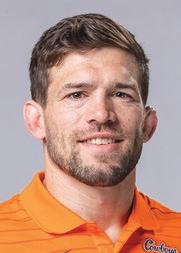

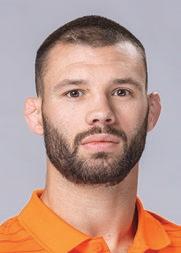
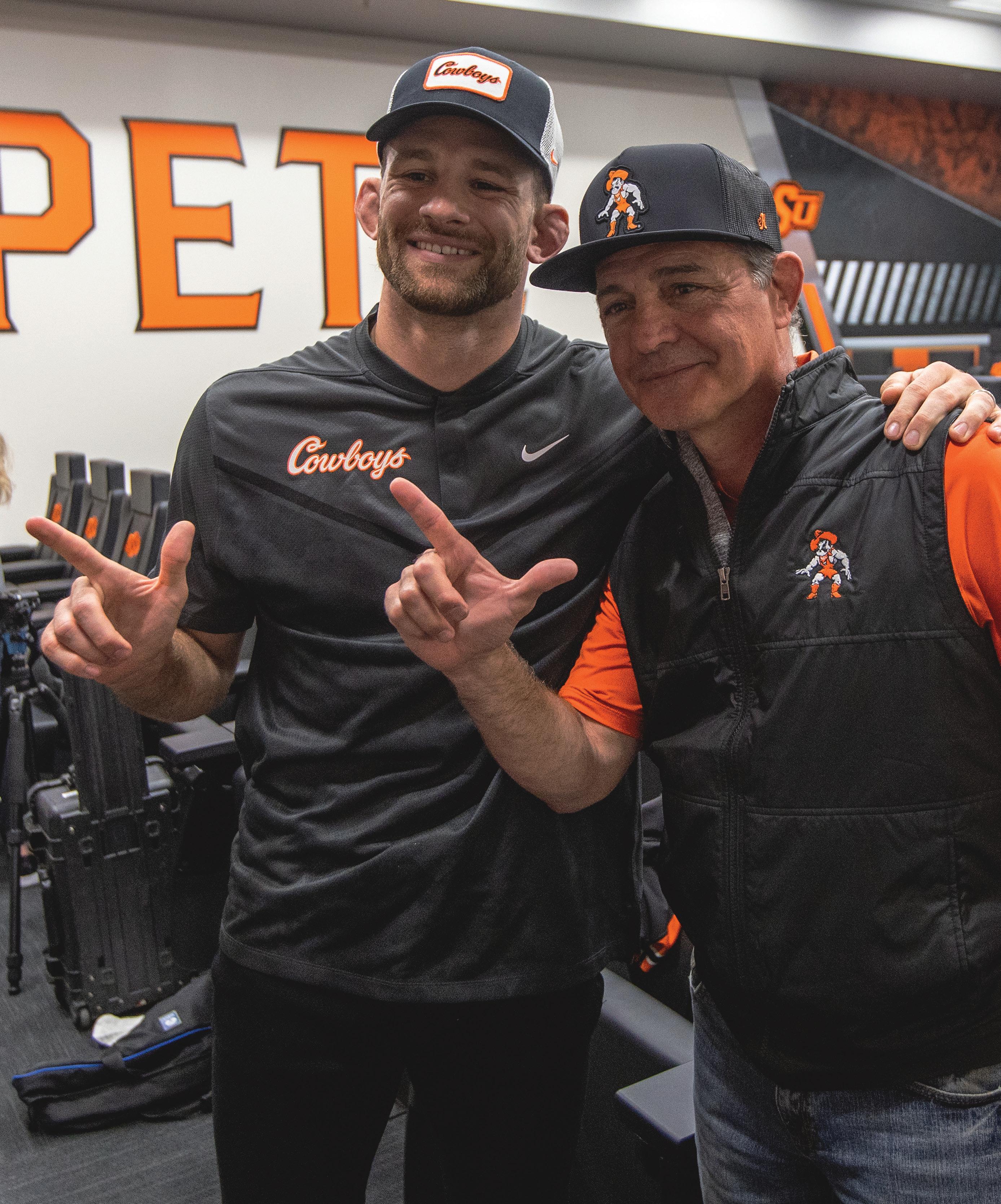
Cowboy wide receiver Cale Cabbiness, a redshirt senior from Norman, Okla., focuses on a catch during fall camp. As the Pokes prepared for the 2024 opener versus South Dakota State (the two-time defending FCS champ), fans were focused on filling Boone Pickens Stadium. For the second straight year, OSU has sold out of season football tickets, as well as its singlegame allotment for all six home matchups.
